FORMA VIVA

D I C K I N S O N





D I C K I N S O N



D I C K I N S O N
58 Jermyn Street
St. James's
London
SW1Y 6LX
london@simondickinson.com www.simondickinson.com
This catalogue has been published for the exhibition Forma Viva . Italian Sculpture 1400 – 1800 (London, 17.06.2024 - 18.07.2024)
© Simon C. Dickinson Ltd. 2024
Edited by Molly Taylor, Beatrice Gallello
Original Concept
Milo Dickinson
Editorial Coordination
Harry Gooch
Special Thanks
Charles Avery, Andrea Bacchi, Alfredo Bellandi, Andrew Butterfield, Francesco Caglioti, Sir Timothy Clifford, Giancarlo Gentilini, Tomaso Montanari, Tommaso Mozzati, Lorenzo Principi, Konrad Schlegel, and Dimitrios Zikos.
A particular thank you to Beatrice Gallello for her help.
D I C K I N S O NIntroduction . Sir Timothy Clifford
Artworks
Catalogue
Luca della Robbia . Bust of a Youth . Giancarlo Gentilini
Andrea della Robbia . The Virgin with the Blessing Child . Giancarlo Gentilini
Benedetto Buglioni and Benedetto da Maiano . Madonna and Child . Giancarlo Gentilini
Giovanni della Robbia . Pair of Vases . Giancarlo Gentilini
Attributed to Benedetto da Rovezzano and Donato Benti . Saint Sebastian . Tommaso Mozzati
Pietro Paolo Olivieri . The Creation of Eve . Lorenzo Principi
Antonio Susini . Cristo Morto
Giovanni Francesco Susini . A pacing bull
Gian Lorenzo Bernini . Matilda of Canossa . Andrea Bacchi
Filippo Parodi . Bacchus . Andrea Bacchi
Massimiliano Soldani Benzi . Ganymede and the Eagle . Charles Avery
Massimiliano Soldani Benzi . The Lamentation of Christ . Dimitrios Zikos
Attributed to Guillielmus de Grof . Portrait bust of Prince Eugene of Savoy-Carignano

In the Italian Renaissance, many of the greatest artists were capable of switching between painting and sculpture. We marvel at Verrocchio, Michelangelo, Bernini for moving between mediums with such ease. Since we founded Dickinson, over thirty years ago, on the whole we have not followed suit, focusing primarily on works from the brush, from Botticelli to Raphael, Titian to Rubens, Watteau to Constable. There has been the odd notable exception such as our sale of the great bronzes by Massimiliano Soldani Benzi from Blenheim Palace.
At some point over those thirty years I started to collect sculpture myself. In the early days Danny Katz had his gallery next door and we would spend hours together and some of his knowledge and enthusiasm for sculpture, particularly Renaissance bronzes, rubbed off on me. Then, more than a decade ago, my son Milo became a specialist in the European Sculpture department at Christie’s and he became a constant source of knowledge, and we have had many enjoyable hours looking at sculpture together.
It was only natural that when Milo joined Dickinson as our new managing director last year, he wished to introduce more sculpture to the gallery. At a time when there are fewer galleries dealing in this field than ever before and the auction houses seem to be taking a step back, we have decided to take a step forward. In the last year we have handled some wonderful sculptures. Having paintings and sculpture together in the gallery, living side-by-side, brings a new element to the gallery. This exhibition will be our first devoted entirely to sculpture and I am particularly delighted that among the treasures we have, from Luca Della Robbia to Bernini, we also have a couple of exceptional works by Soldani Benzi to show you.
We hope you enjoy the exhibition.
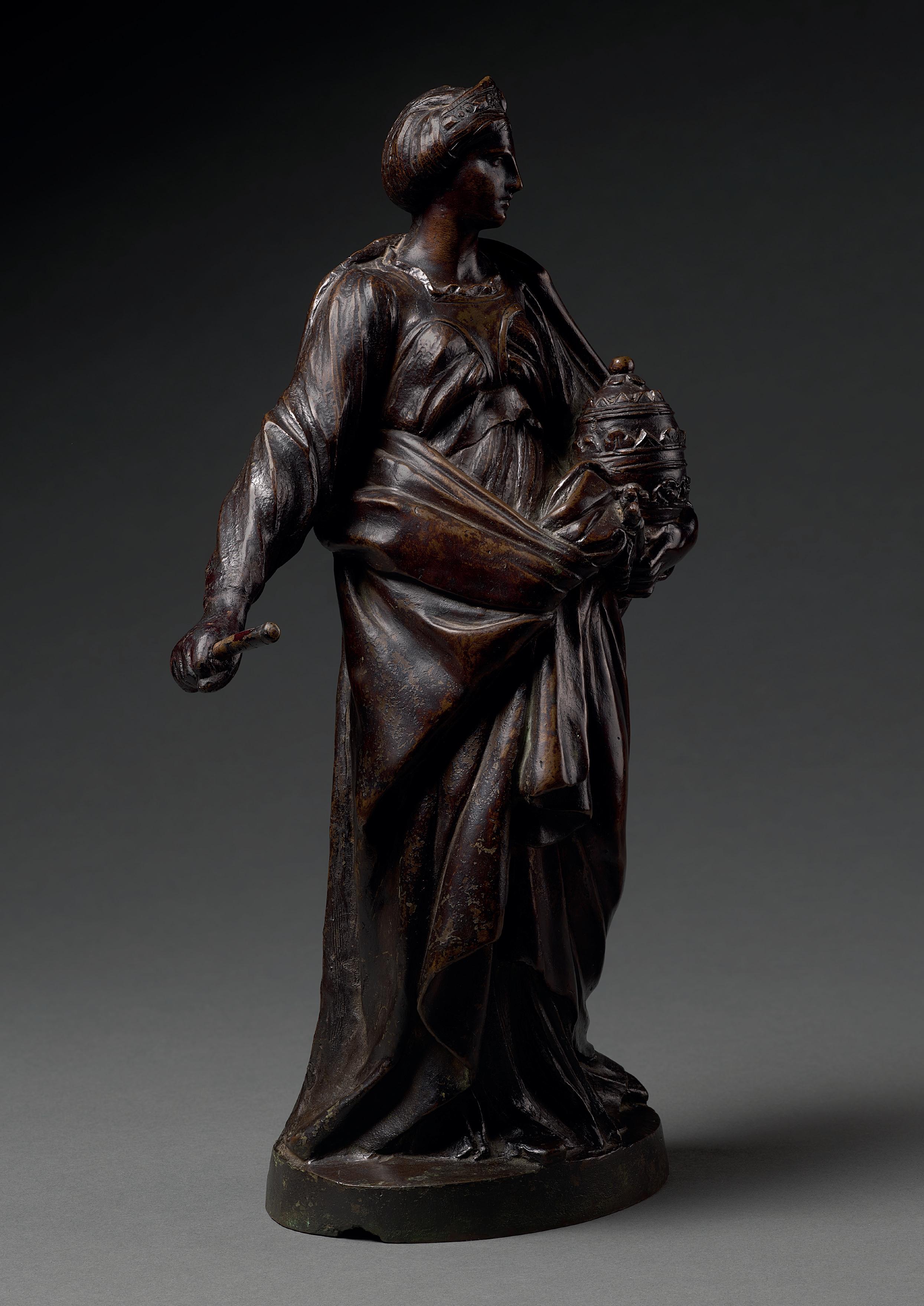
This exhibition represents a special development rather than departure by the firm of Simon C. Dickinson, for the gallery in Jermyn Street has frequently handled sculpture but this is its first show in some time devoted entirely to the subject.
Of course, there was a certain inevitability about such a show once Milo Dickinson, Simon’s son and formerly a Christie’s sculpture expert, had left King Street to join his father’s firm. Now, Dickinson is a father and son operation combining exceptional knowledge and expertise in both European Old Master paintings and European Old Master sculpture. That is not to say that this firm does not continue to have great expertise as well in later periods of the visual arts, having handled, for example, many masterpieces of Impressionist and Post-Impressionist art.
We all understand that sculpture and painting are fundamentally different, for one is concerned with expressing truth and ideas in three dimensions, the other in two. They do, however, share many features in common, for since Antiquity, sculpture has very often been painted and, moreover, many painters have also been sculptors, and vice-versa. There do remain intellectual and philosophical differences between the two artforms. The so-called ‘paragone’ (Italian comparison; figuratively a test or trial) was the dialect engaged in, explored and expressed by Leon Battista Alberti and a little later by Leonardo in his Trattato della Pittura . The argument about which was the superior art
form was continued by Giorgio Vasari and was a central debate in the Florentine Accademia del Disegno formed under his influence and guidance in 1563. It remained a burning issue for Sir Joshua Reynolds in his Discourses to the Royal Academy students some two hundred years later.
We recall that it was Alberti who seems largely to have invented the concept of the ‘uomo universale’ (the complete man), and many of his Tuscan countrymen aspired to this goal. The most notable example was Michelangelo, who was an architect, sculptor, painter and poet. Raphael followed in his shoes, although he was not a sculptor. This idea was respected and repeated spectacularly by Bernini.
By chance, this exhibition is heavily weighted in favour of Florentine sculpture – but the Florentines would argue that they were the finest Italian sculptors. Here is a magical Bust of a Youth by Luca della Robbia, the contemporary of Donatello and indeed Alberti. Then from the same family workshop are alluring and most sensitive images of the Blessed Virgin Mary in glazed terracotta reliefs by Andrea della Robbia and Benedetto Buglioni. Here, aspects of the paragone neatly combine with high relief modelling and a tin-glazed, painted enamel surface.
Then there is Olivieri’s curious relief of The Creation of Eve, a fascinating throwback to Ghiberti’s gates of the Florentine Baptistery.
For me, one of the most desirable and delightful masterpieces of the show is the little bronze statuette of the European Matilda of
Canossa by Bernini, a really special cast still redolent of the original wax model and blessed with an almost edible rich chocolate patina. This is one of the finest casts of this model that I have seen.
Tuscan sculpture very much flourished in the seventeenth and eighteenth centuries. Antonio Susini’s Cristo Morto is a brilliant rendering of a Giambologna image of profound pathos. It is the sort of really finely cast and chased bronze one wants to pick up and handle. Then there are those two glorious Soldani sculptures of Ganymede and the Eagle and The Lamentation of Christ . One senses the distant presence of Bernini but above all the overriding influence of Pietro da Cortona and, in particular, of Ciro Ferri. Sculptures by Soldani do provide the highest point of all the arts in Florence at this period, while painting was fast approaching its nadir.
The cheerful Bacchus , happy but not inebriated, by the Genoese Filippo Parodi reflects the fluid grace of his contemporary painters the Piolas and Lorenzo de Ferrari, so at odds with the turgid, almost mechanical style of the generation before, typified by Cambiaso, Tavarone and the two Castellos. So many of these Genoese artists were involved in all aspects of design – stucco, silver, fresco, textile and tapestry design. Alberti would, I suspect, have approved of them.
I consider painting and sculpture to be inseparable. For eccentric historical reasons, when the National Gallery in Trafalgar Square was founded just two hundred and fifty years ago and the Victoria and Albert Museum much later, largely as a result of the Great Exhibition, ‘flat art’ (but oddly excluding graphic art) was the purview of Trafalgar Square, whilst ‘all the rest’ became the collection of the South Kensington museum. Thus, Japanese lacquer and Meissen coffee pots and Constable oil paintings became the bed fellows of the sculptures of Donatello and Giambologna. (However, for a glorious moment, perhaps some
twenty years ago, the National Gallery borrowed from the V&A and the British Museum classical and Renaissance sculptures, which they showed alongside their collections with great success, but this experiment was soon abandoned). When the National Gallery in Washington was founded it sadly caught the English disease, firmly separating its sculpture galleries from those of paintings. I do believe that there are perfectly sound arguments for and against such divisions, but are we not excited, when flying back from Washington to the European mainland, to enjoy once again sculptures combined with paintings in their natural habitat, their historic settings, in churches, palaces, villas and even gentlemen’s private homes – paintings and sculptures together enhancing each other and providing a thrilling dialogue.
This exhibition contains sculptures not yet in public ownership, and, who knows? Some may be acquired by clever and discerning people to enrich and provide a note of special distinction to their homes.

Florence, 1399/1400 - 1482
Portrait of a Youth, c. 1435-40
Terracotta roundel-type bust
39 × 33 × 15 cm. (15 1/3 × 13 × 6 in.)
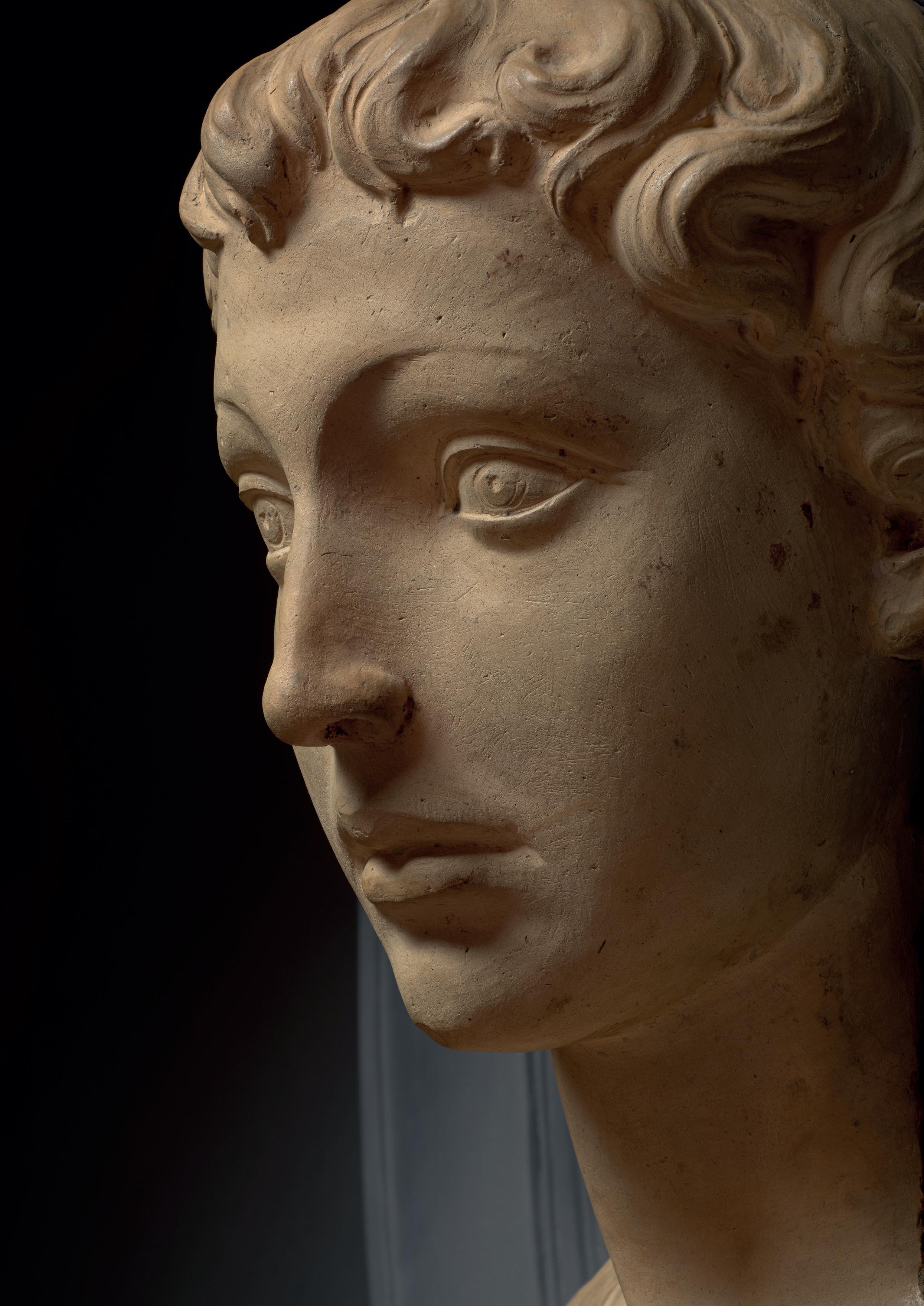
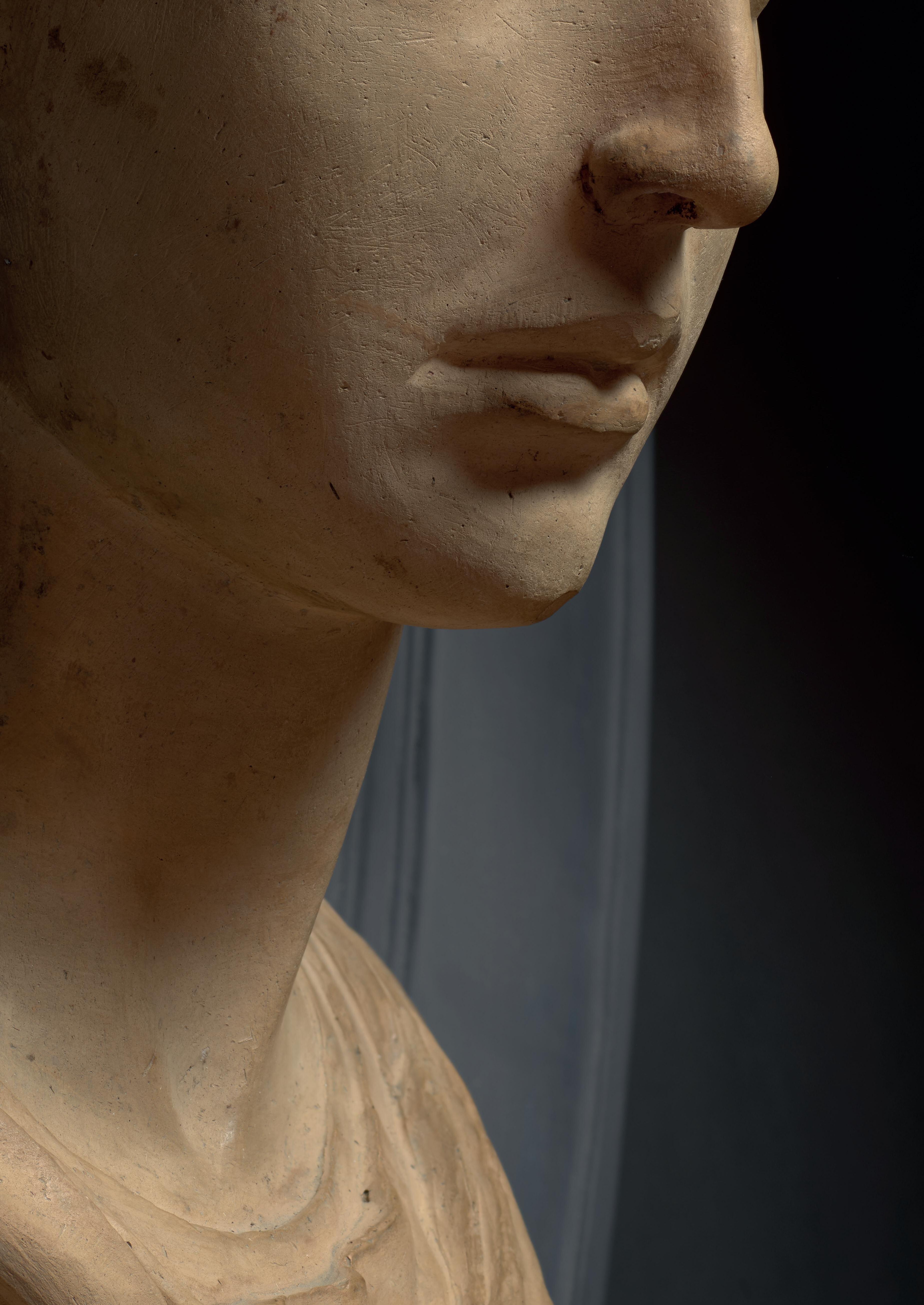

Florence, 1435 - 1525
The Virgin with the Blessing Child, c. 1490–95
Glazed terracotta roundel
45 cm. (17 3/4 in.) diameter


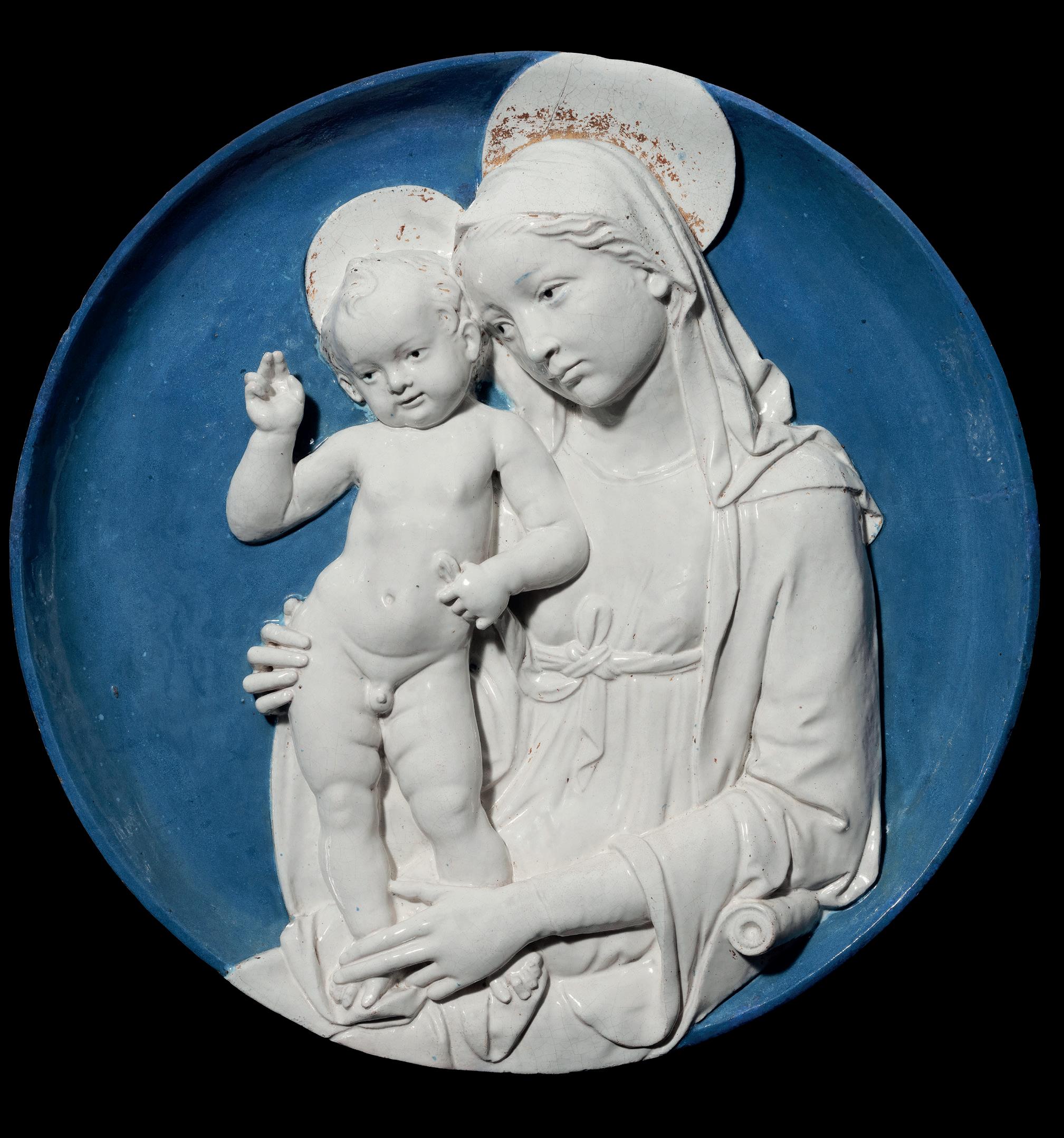
Florence, 1459/60 - 1521
Maiano, 1442 - 1497, Florence
Madonna and Child, c. 1495-1505
Glazed terracotta
70 × 47 × 8 cm. (27 1/2 × 18 1/2 × 3 1/8 in.)
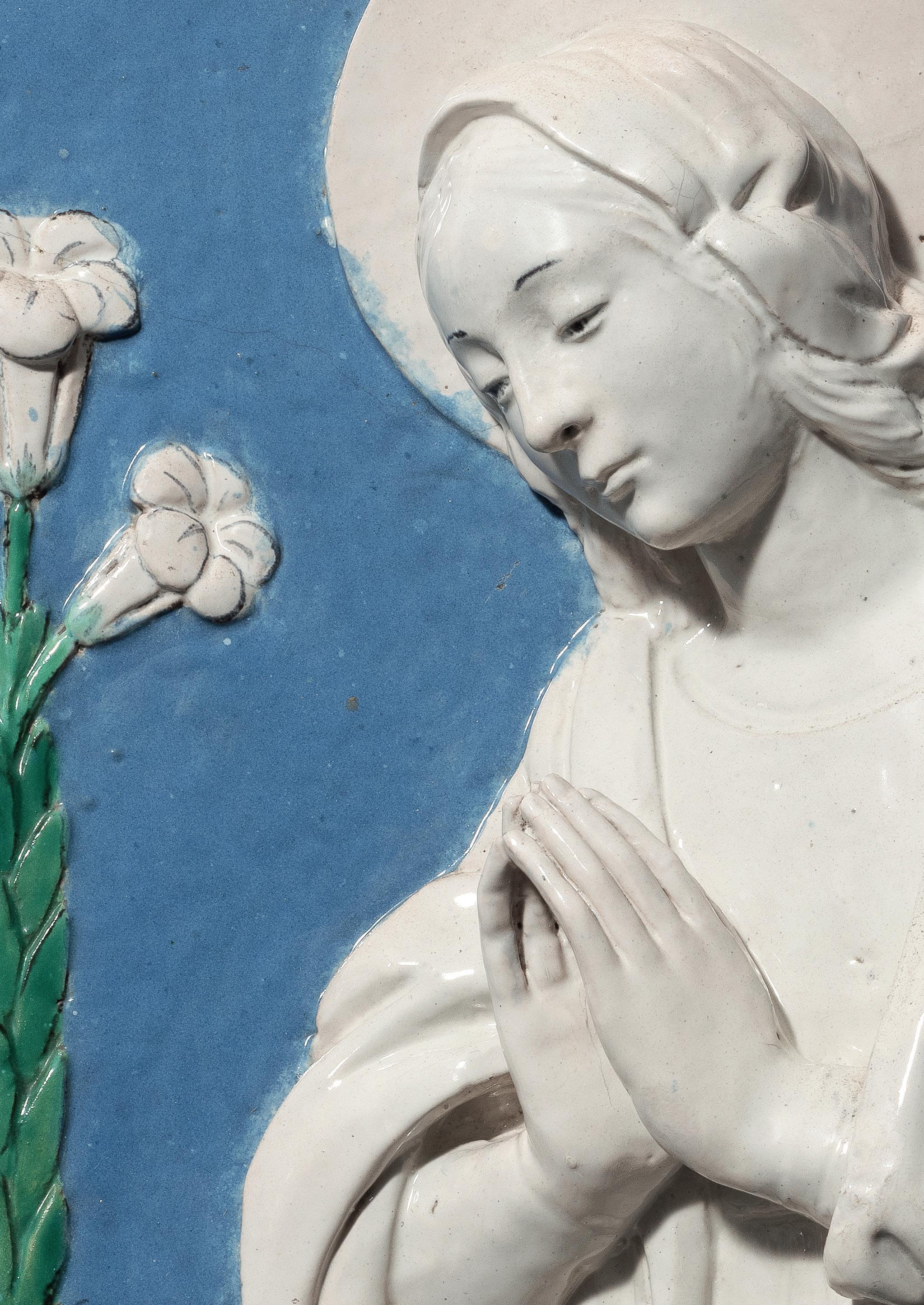
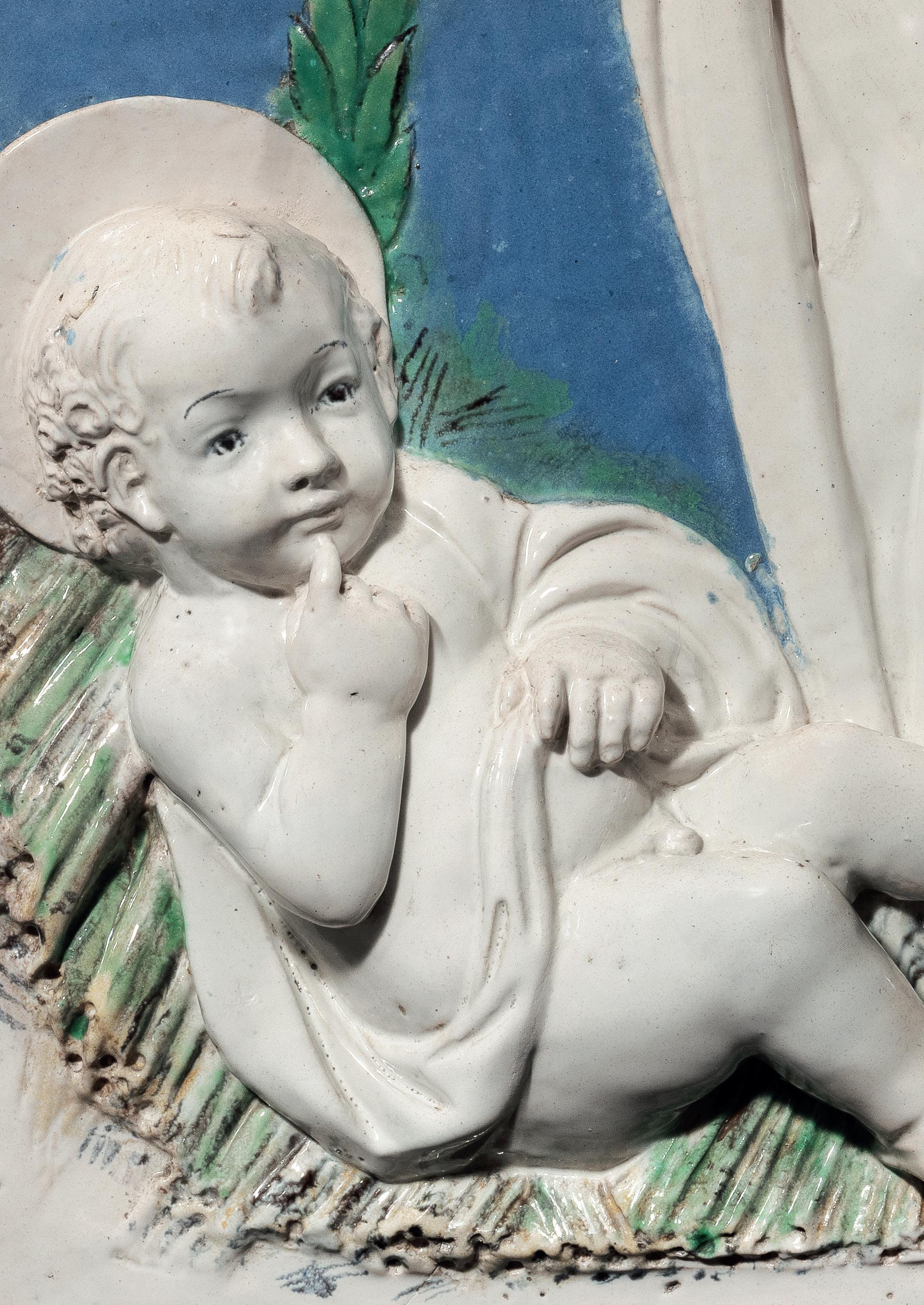

Florence, 1469 - 1529
Pair of Vases, c. 1520
Glazed terracotta
45 × 27 × 28 cm. (17 3/4 × 10 5/8 × 11 in.) each
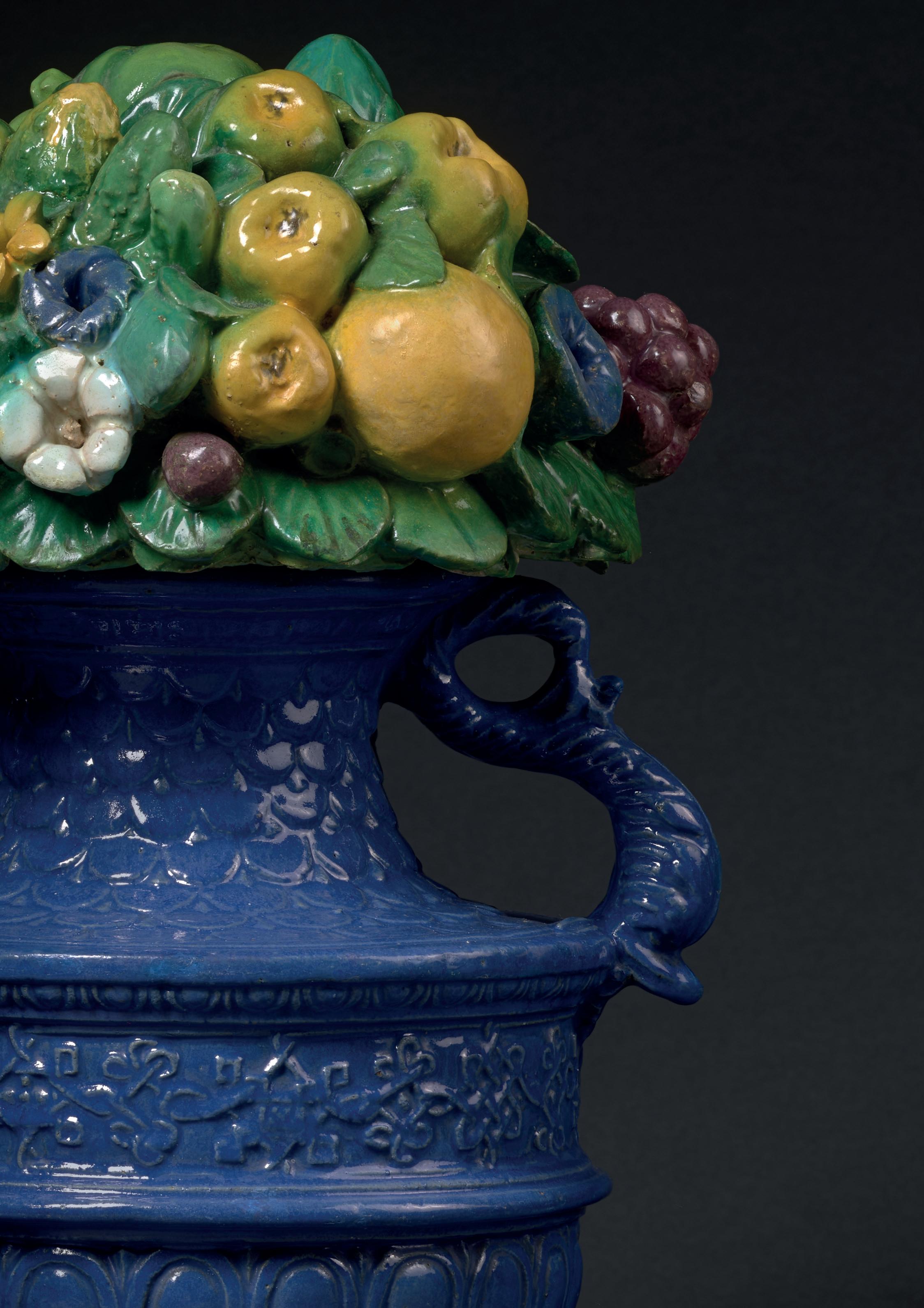

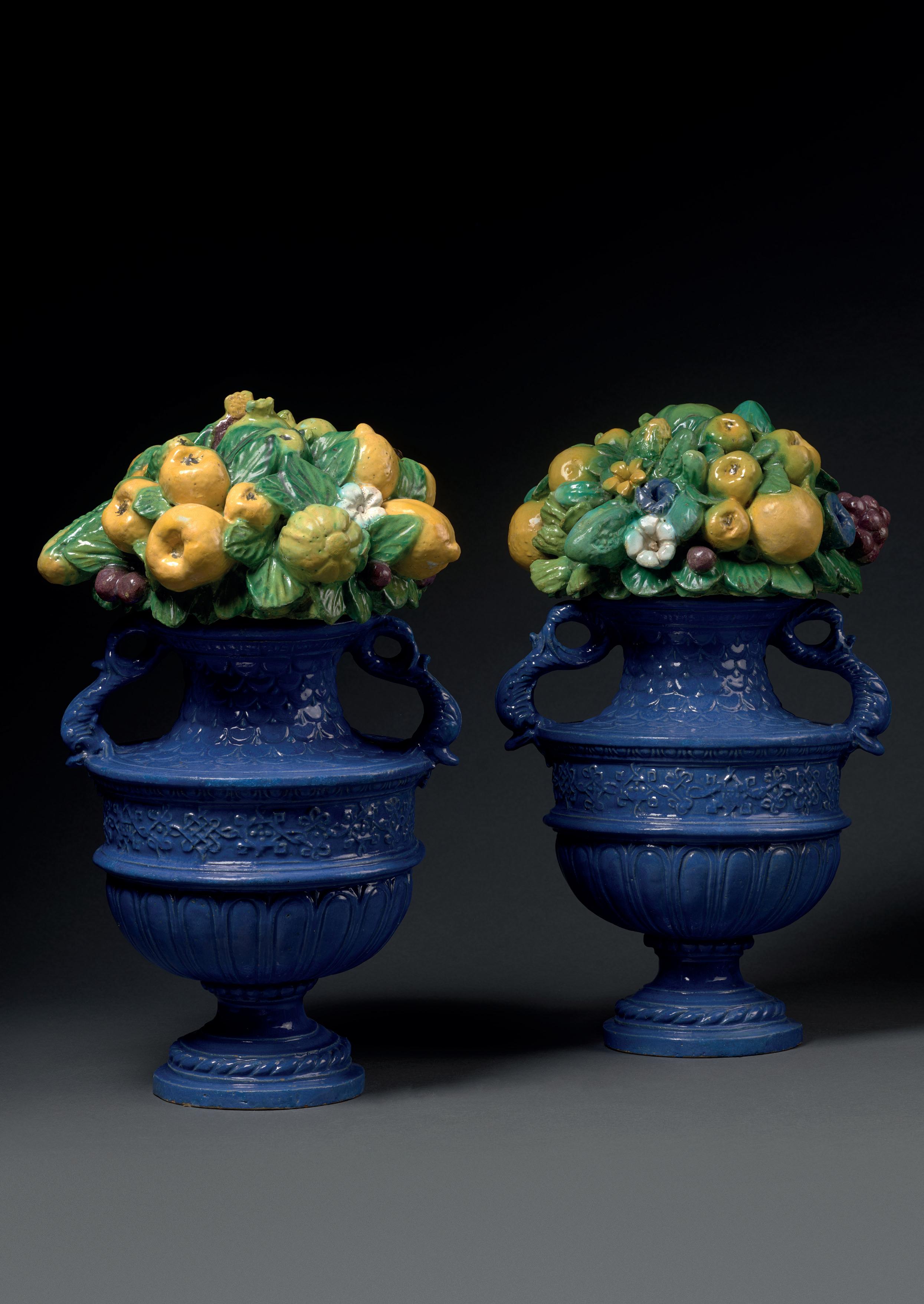
Pistoia, 1474 - c. 1552, Reggello DONATO
Florence, 1470 - 1537, Pietrasanta
Saint Sebastian, c. 1503-04
Marble
108 × 34 × 30 cm. (42 1/2 × 13 1/ 3 × 11 3/4 in.)
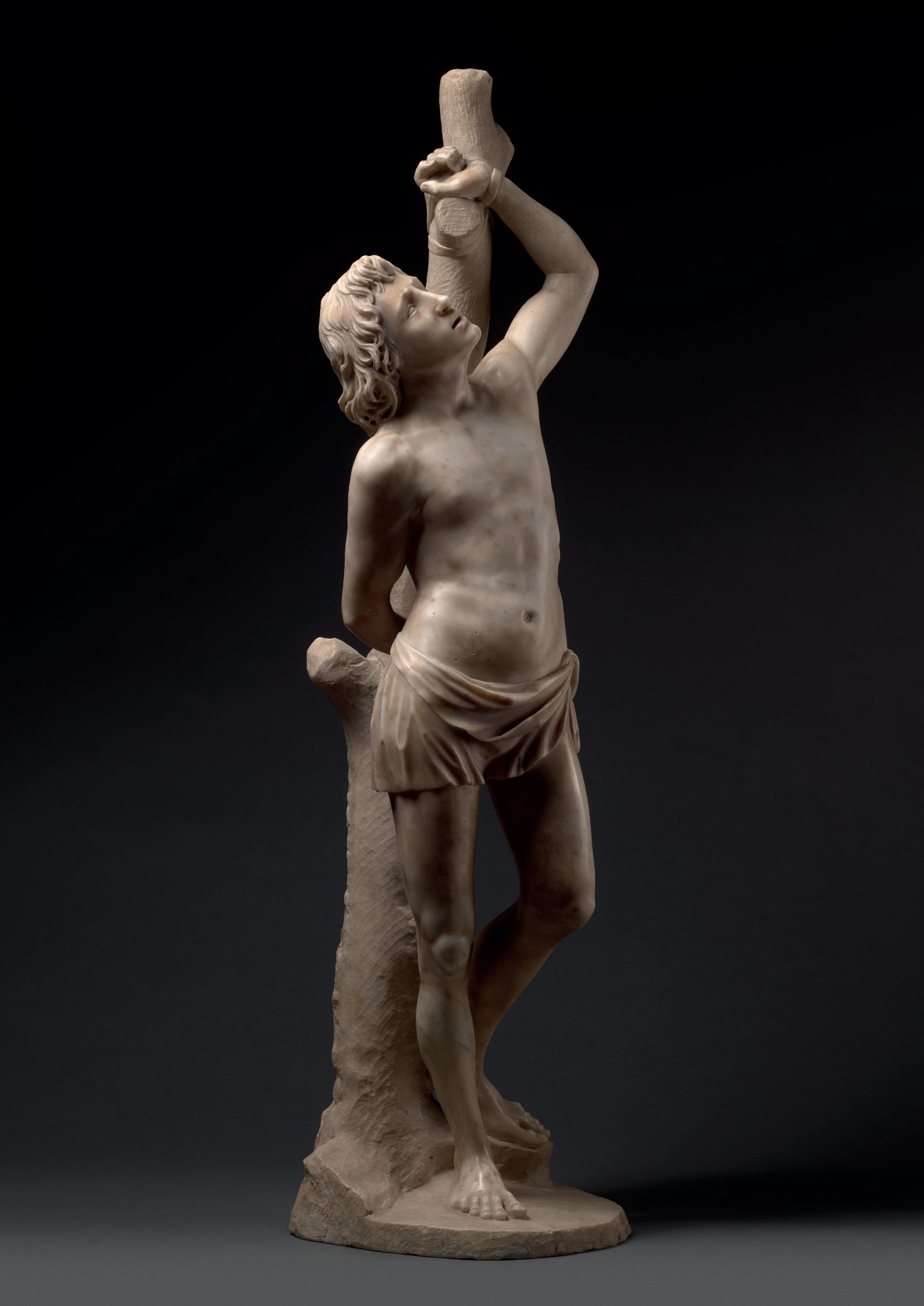
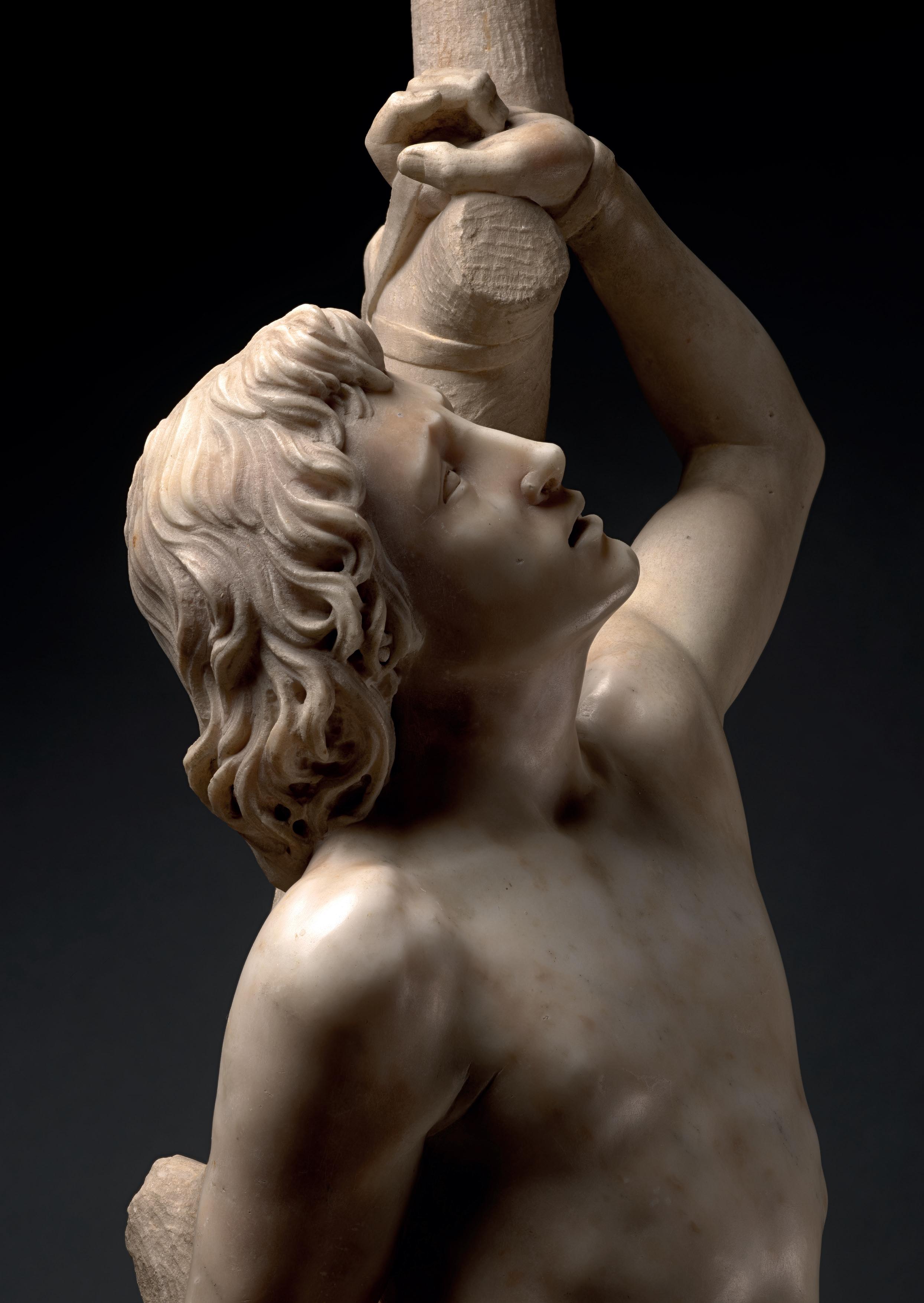

Rome, c. 1551 - 1599
The Creation of Eve, c. 1580
White marble relief
44 × 64.5 × 4 cm. (17 3/8 × 25 3/8 × 11/2 in.)

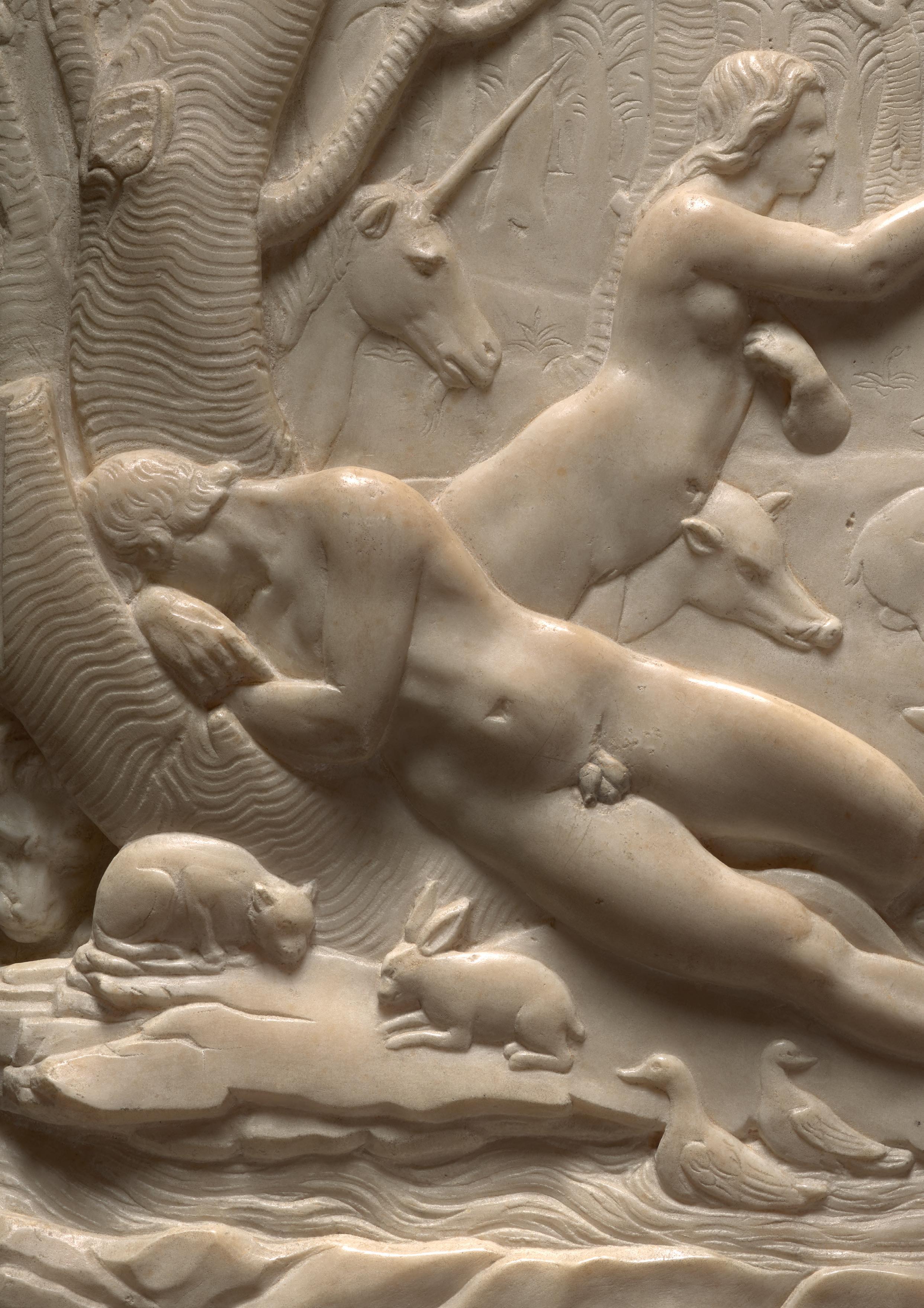
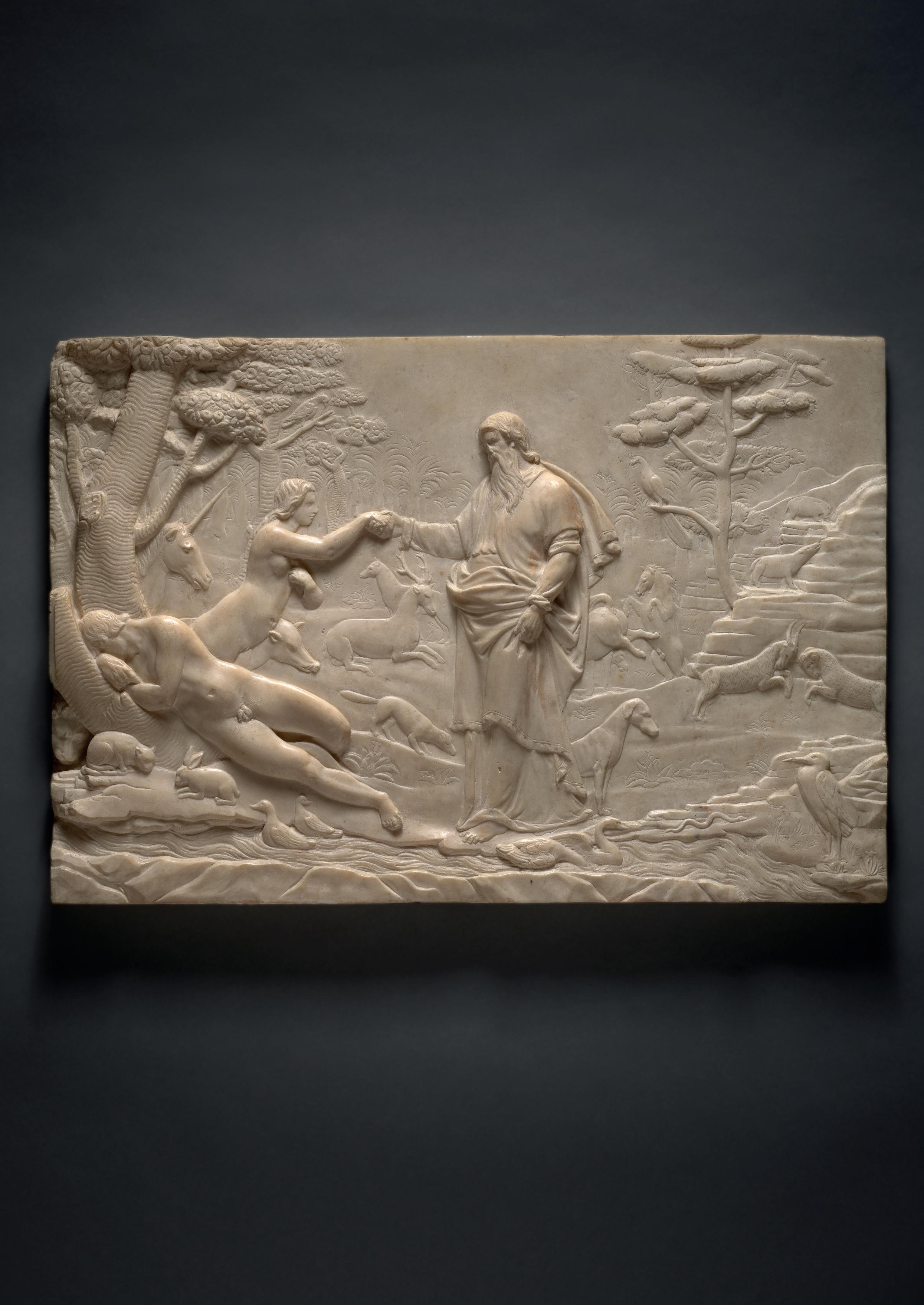
Florence, 1558 - 1624
Cristo Morto, after a model by Giambologna of c. 1588, cast c. 1590-1616
Bronze
31.8 × 24.6 × 5 cm. (12 1/2 × 9 5/8 × 2 in.)

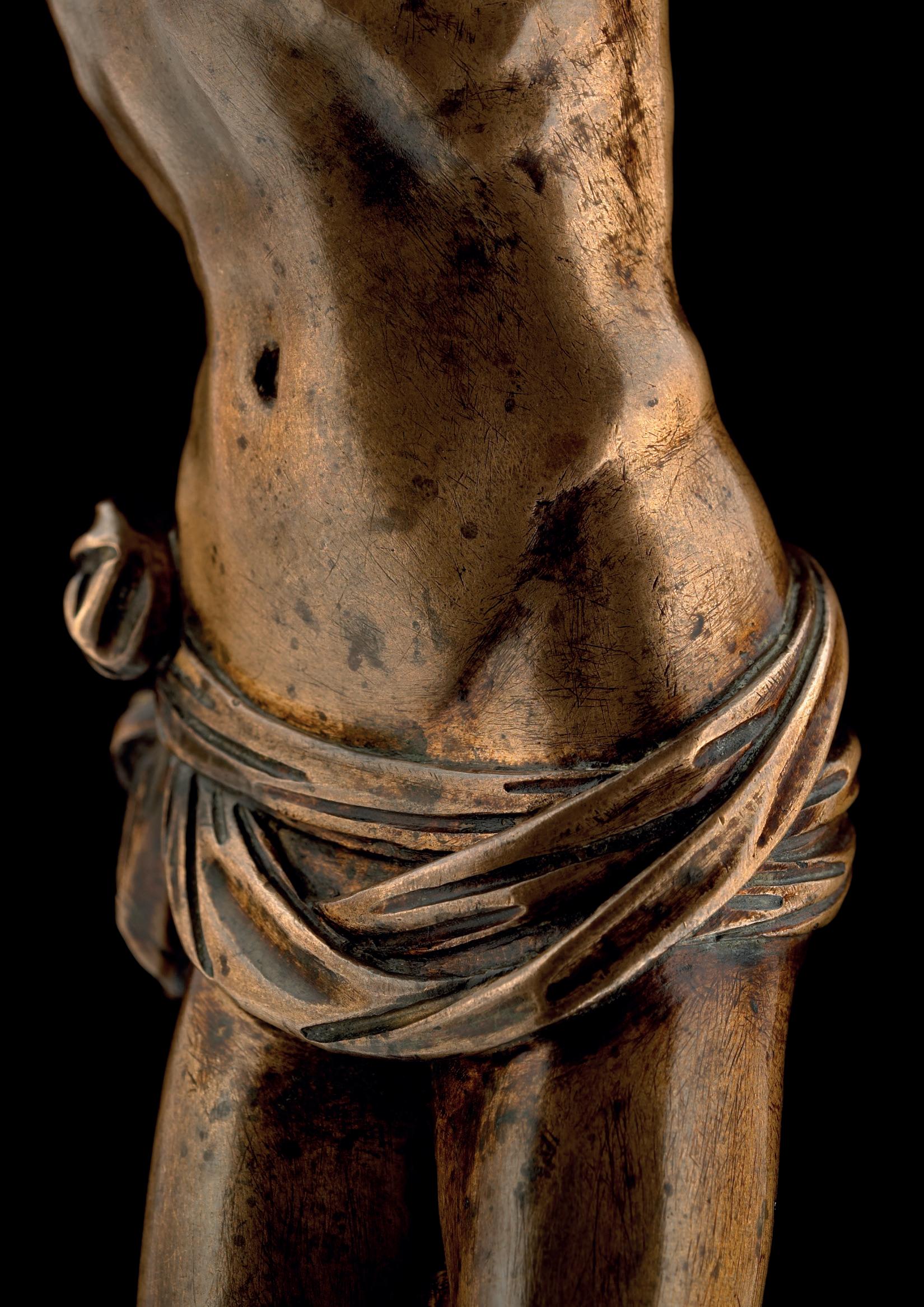
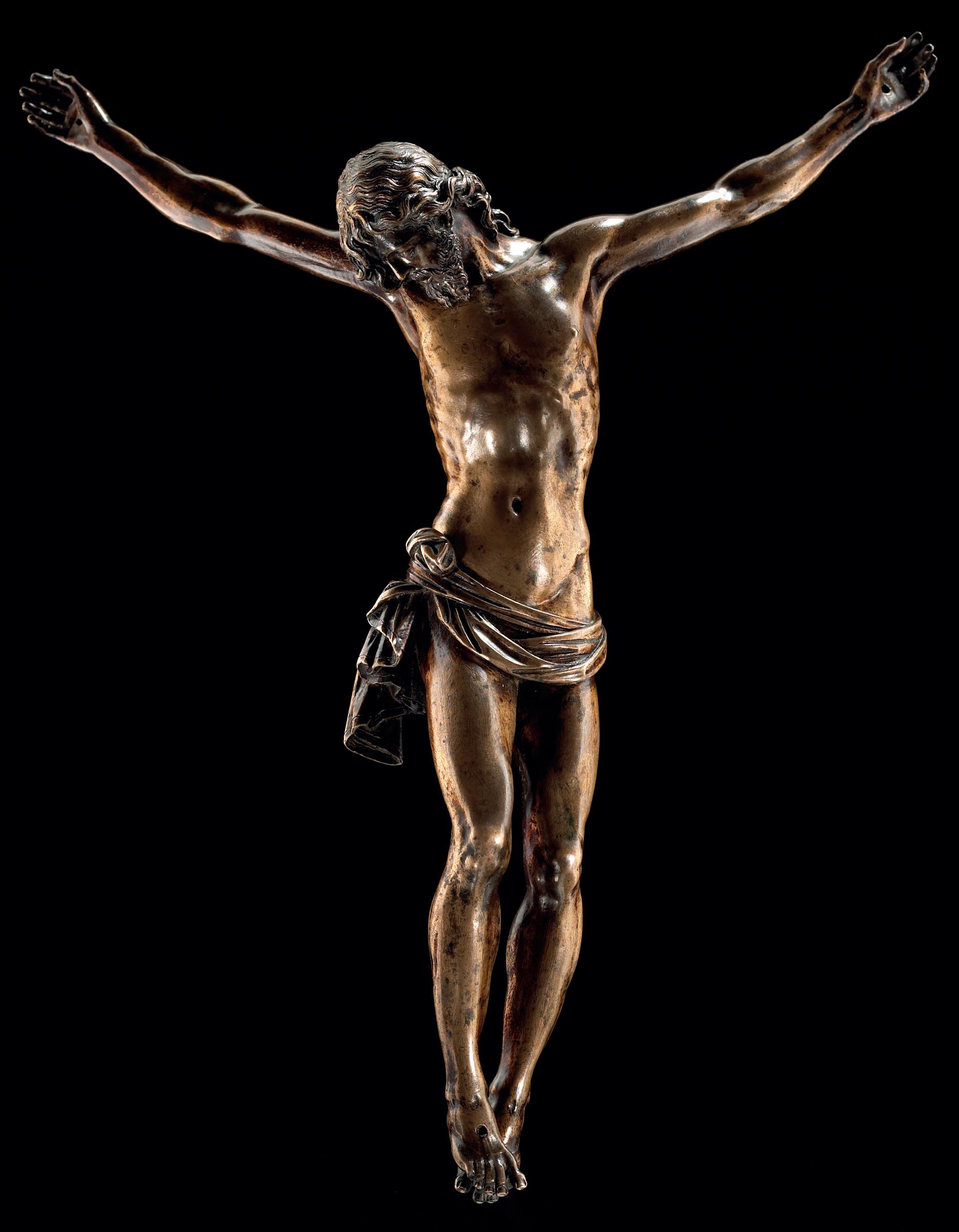
Florence, 1585 - 1653
A pacing bull, c. 1650
Bronze
23.3 × 26.8 × 8.5 cm. (9 1/8 × 10 1/2 × 3 3/8 in.)
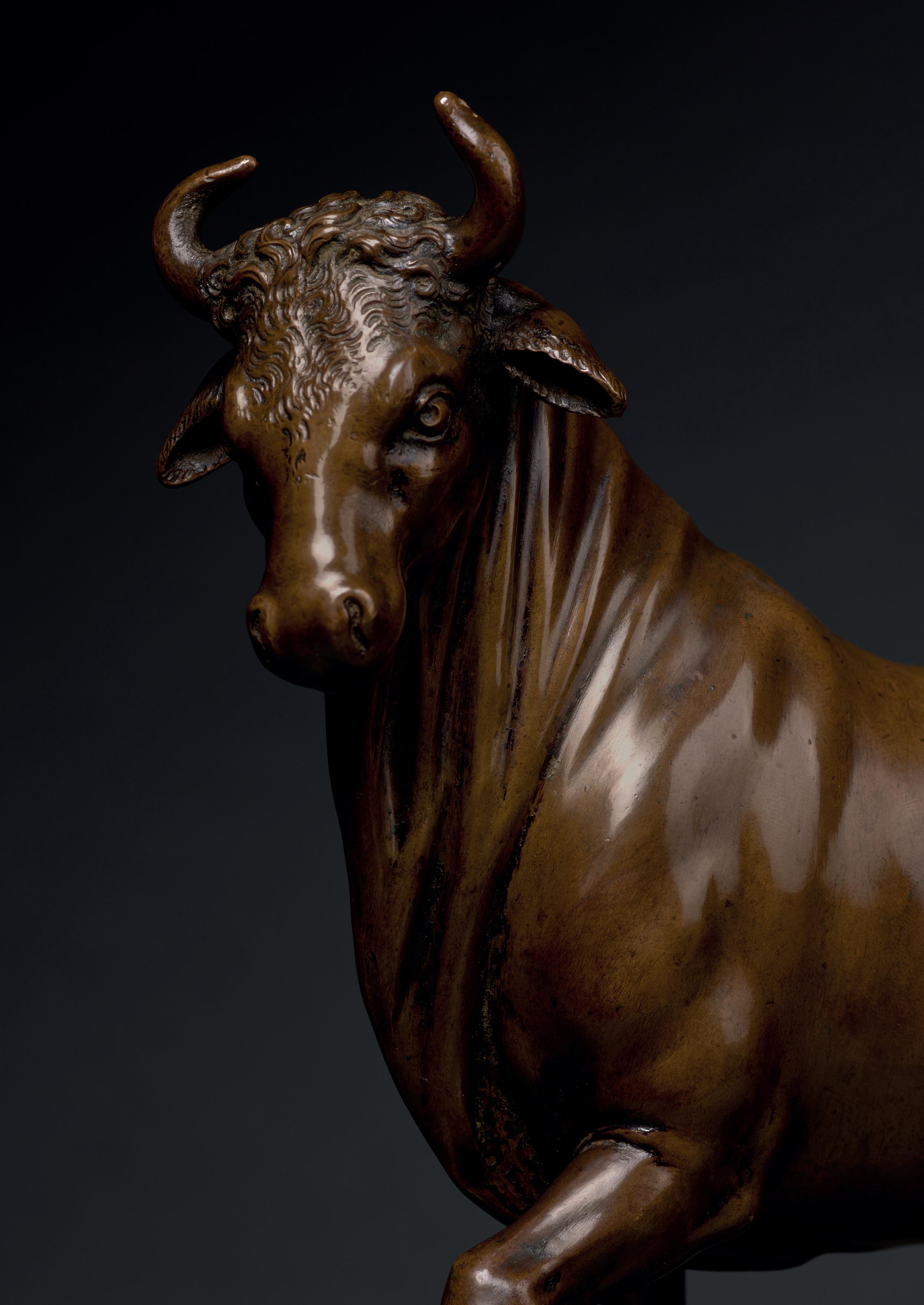
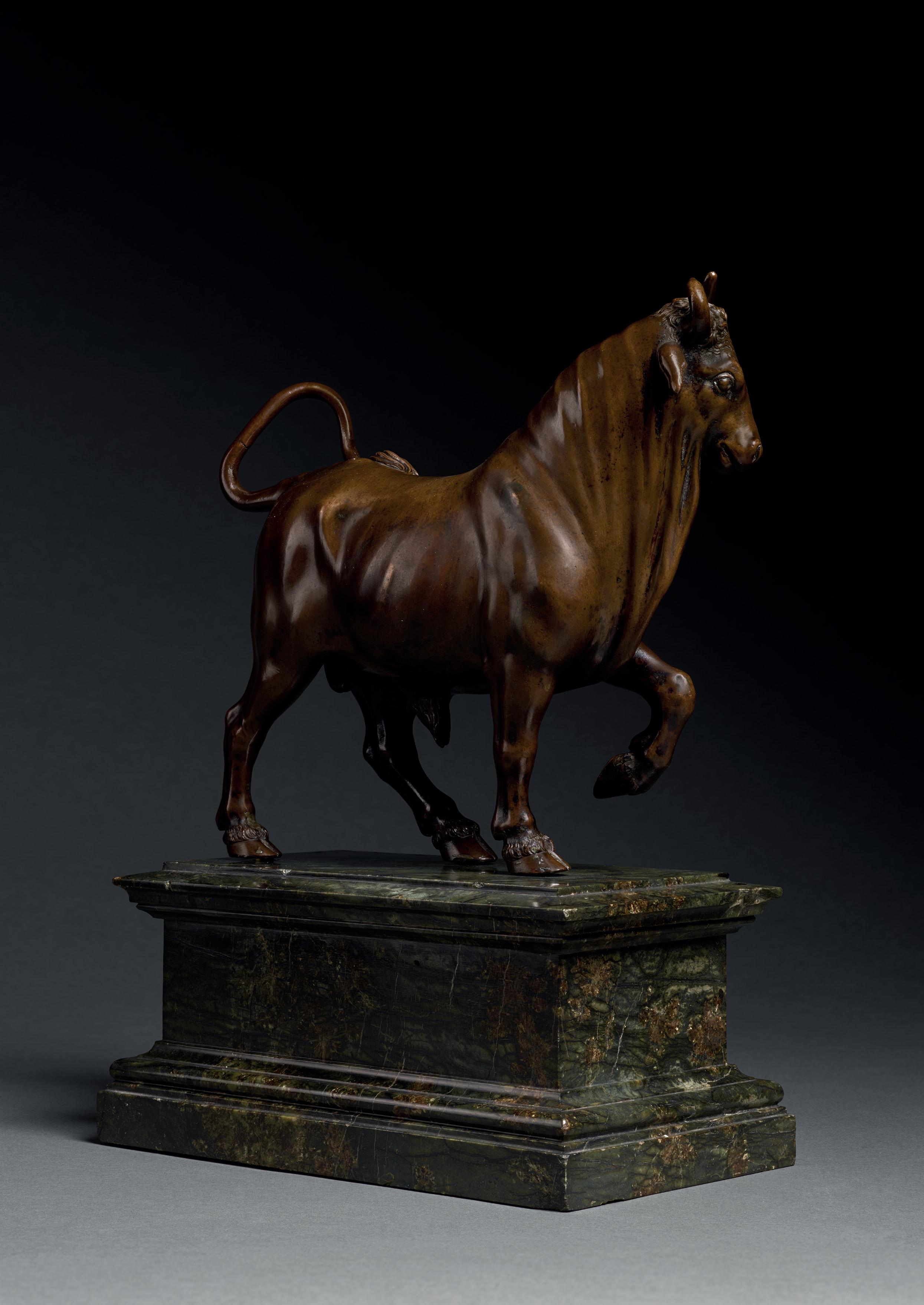

Naples, 1598 - 1680, Rome
Matilda of Canossa, c. 1633-37
Bronze
40 × 22 × 10.7 cm. (15 3/4 × 8 5/8 × 4 1/4 in.)


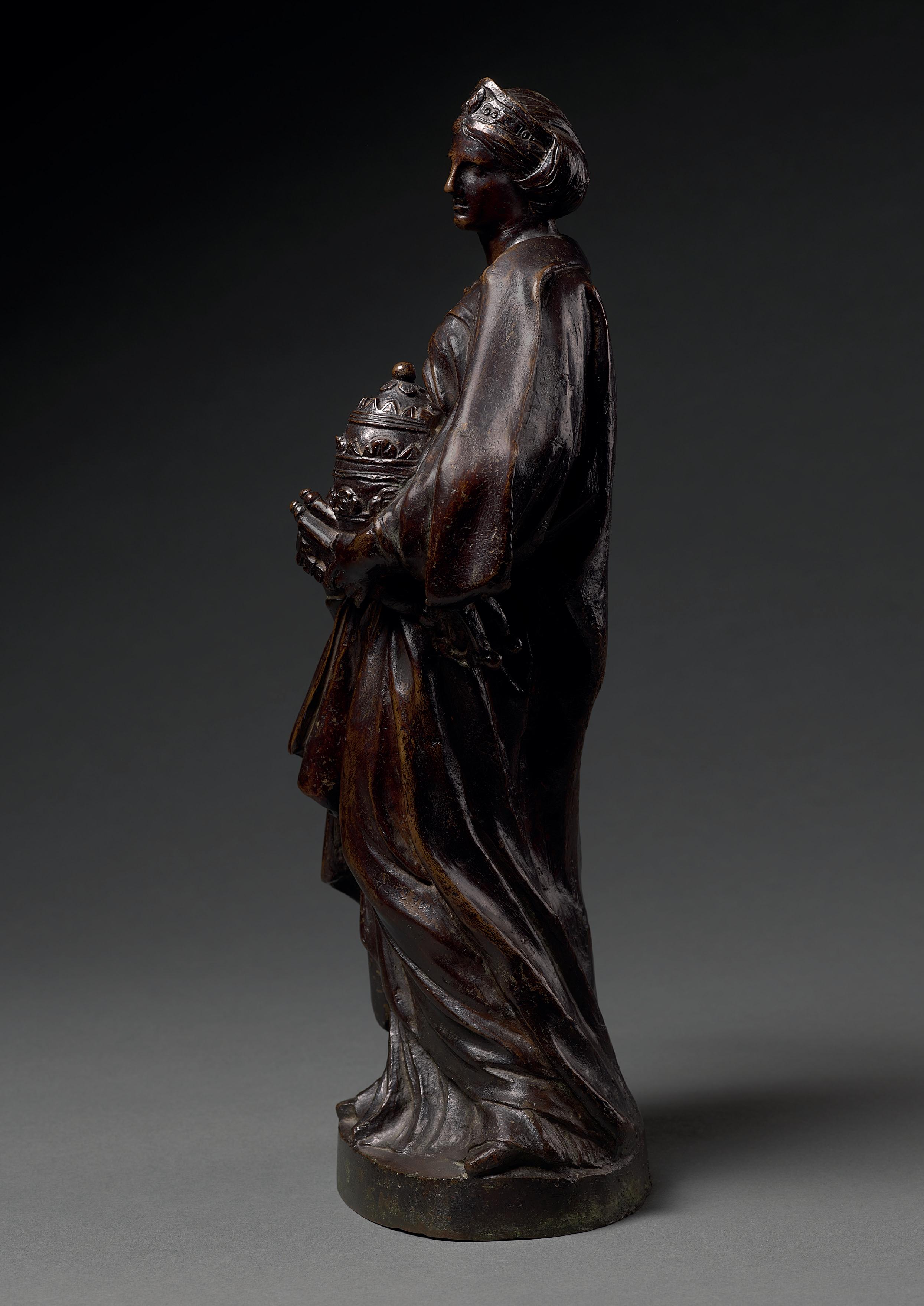
Genoa, 1630 - 1702
Bacchus, c. 1670
Marble
156 × 55 × 40 cm. (61 2/5 × 21 2/3 × 15 3/4 in.)
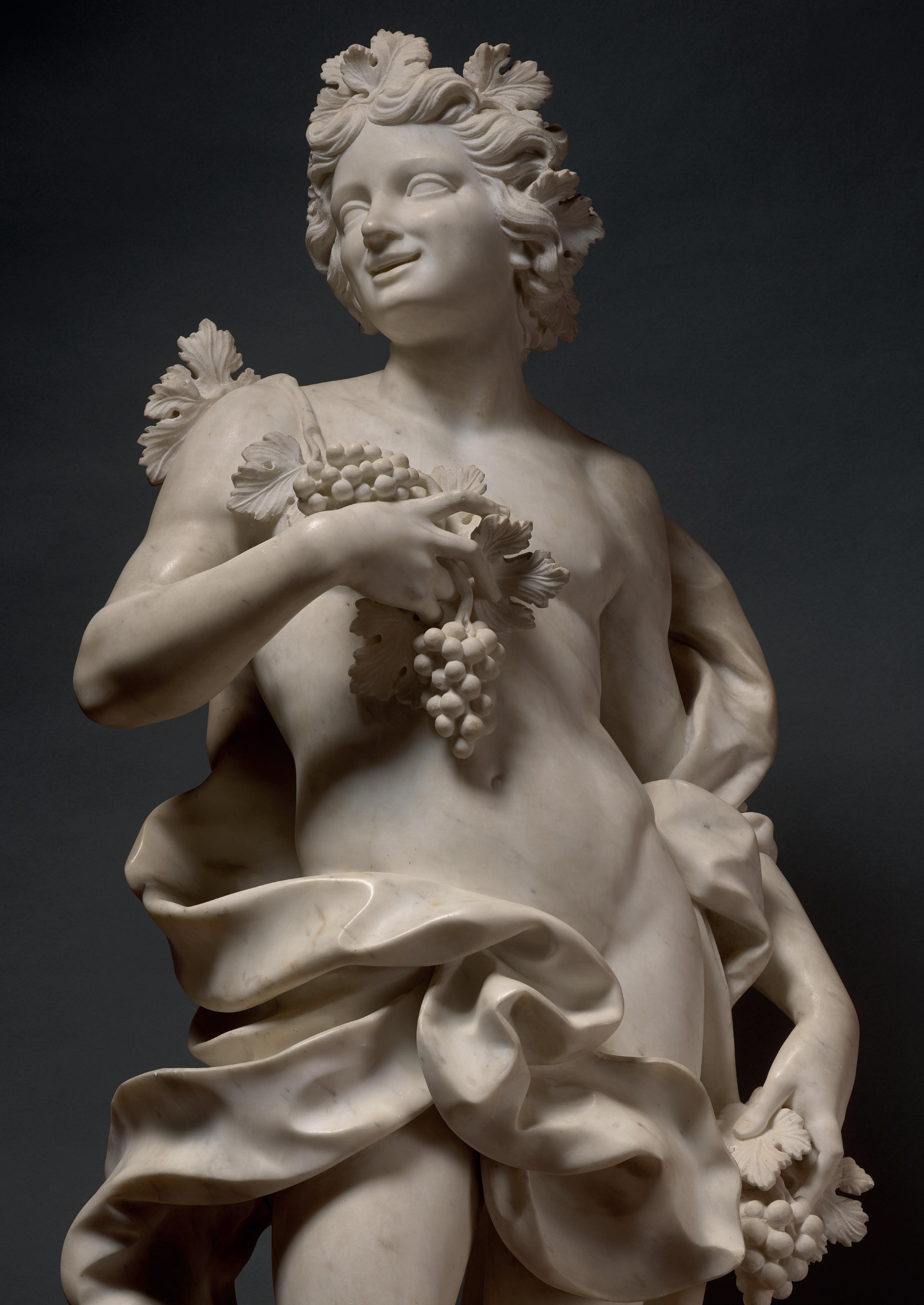
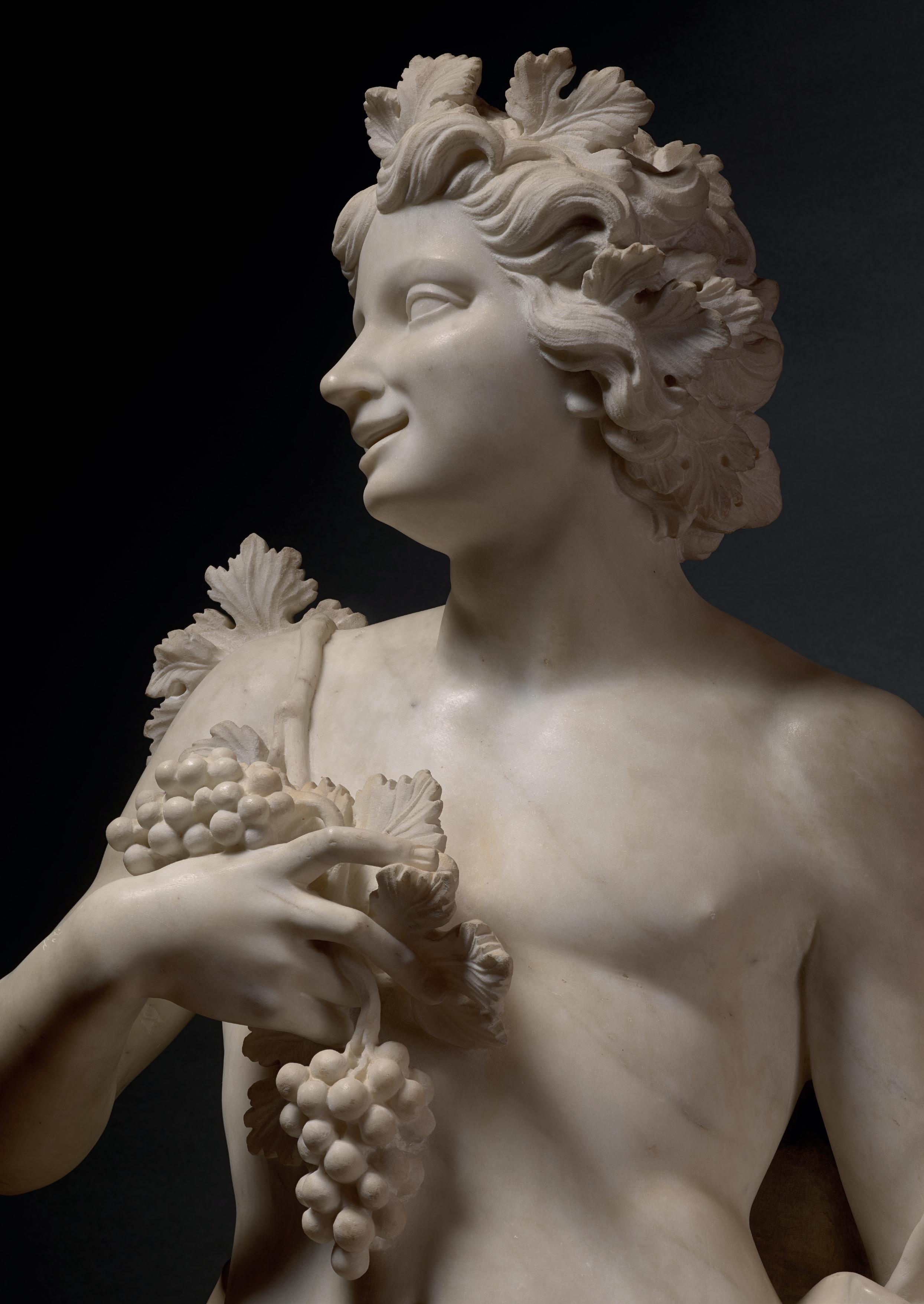

Montevarchi, 1656 - 1740, Galatrona
Ganymede and the Eagle, c. 1714
Bronze
31.5 × 38.5 × 16.5 cm. (12 3/8 × 15 1/8 × 6 1/2 in.)

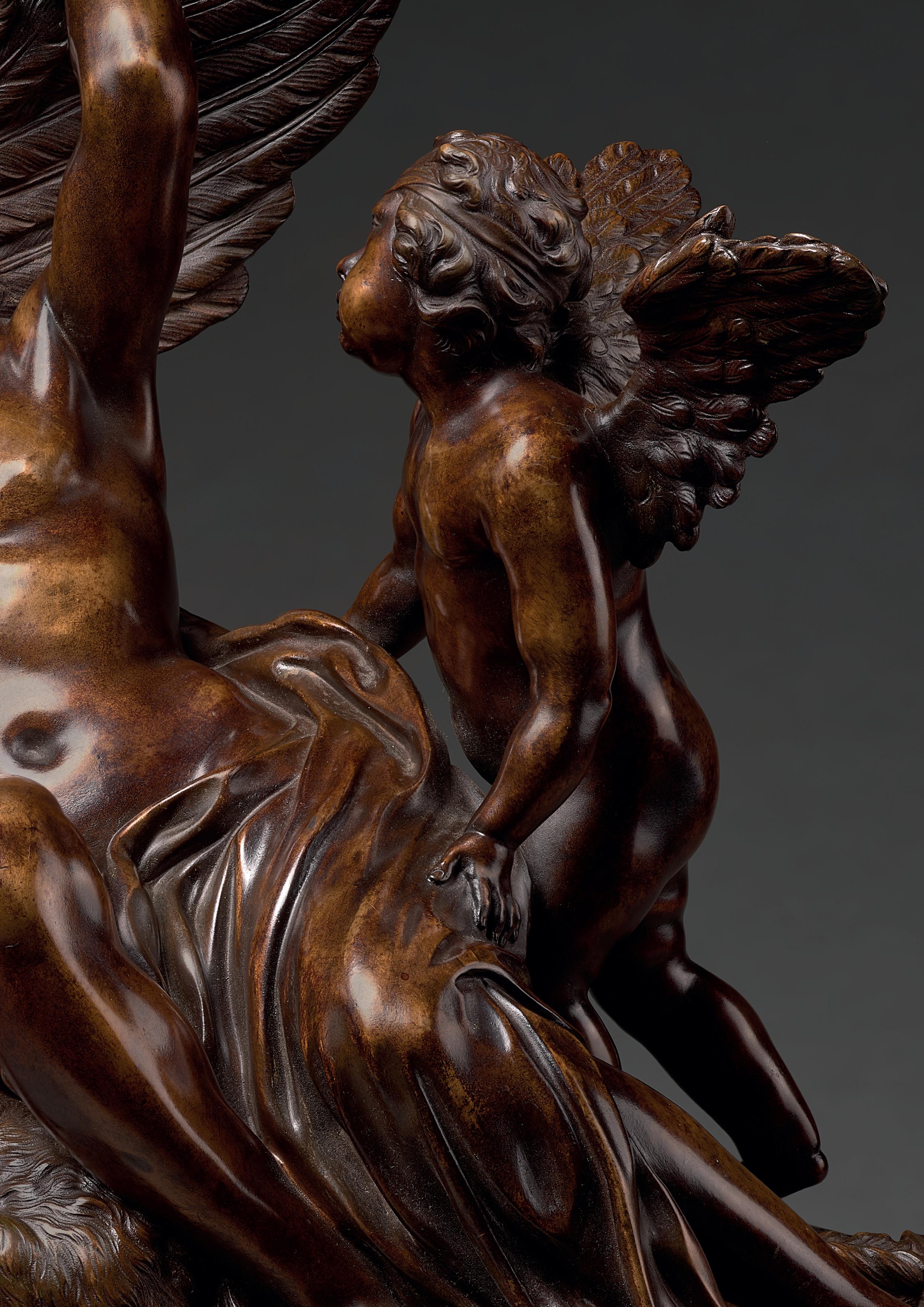
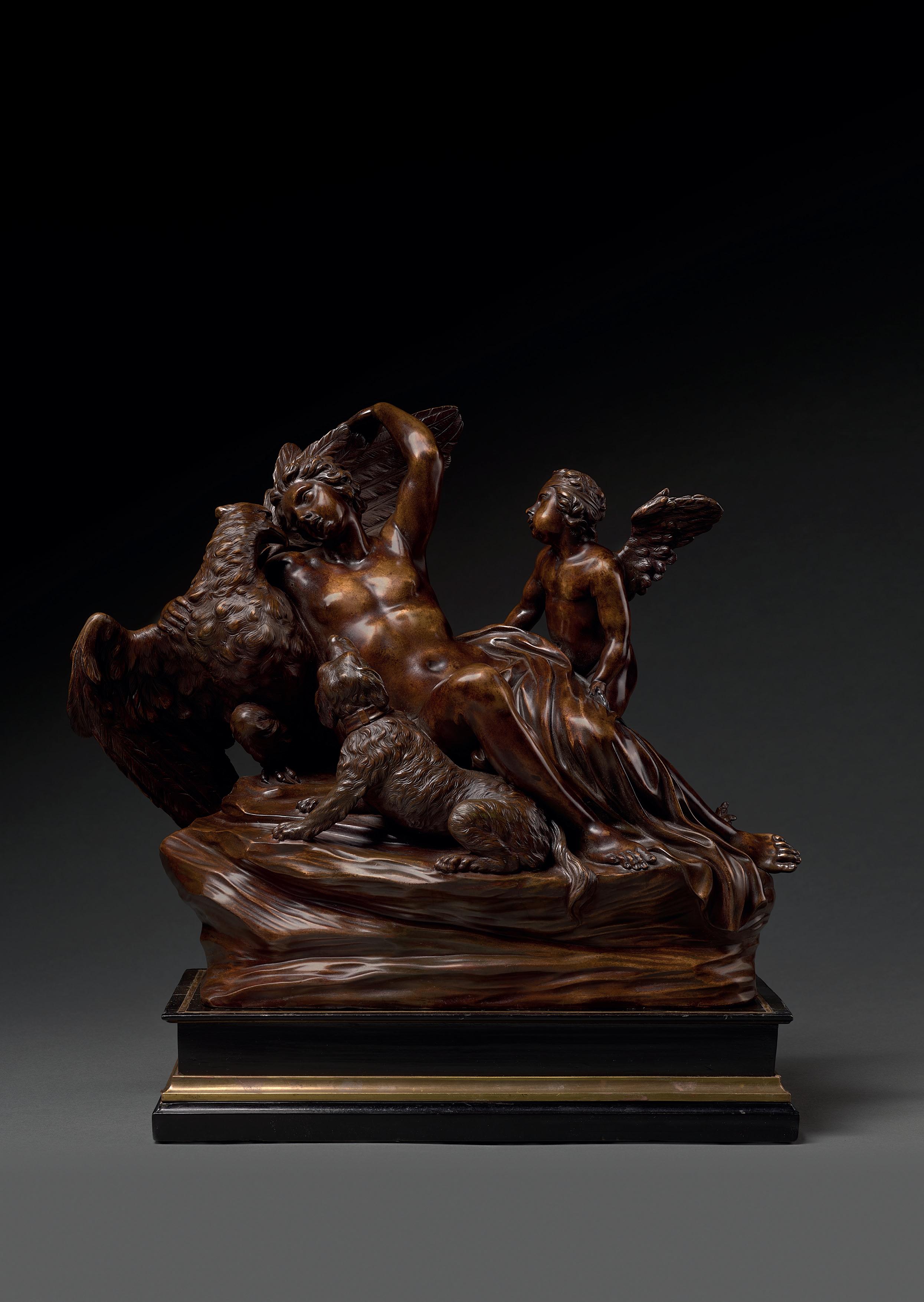
Montevarchi, 1656 - 1740, Galatrona
The Lamentation of Christ, c. 1715
Terracotta
43 × 25 × 22 cm. (17 × 9 7/8 × 8 2/3 in.)

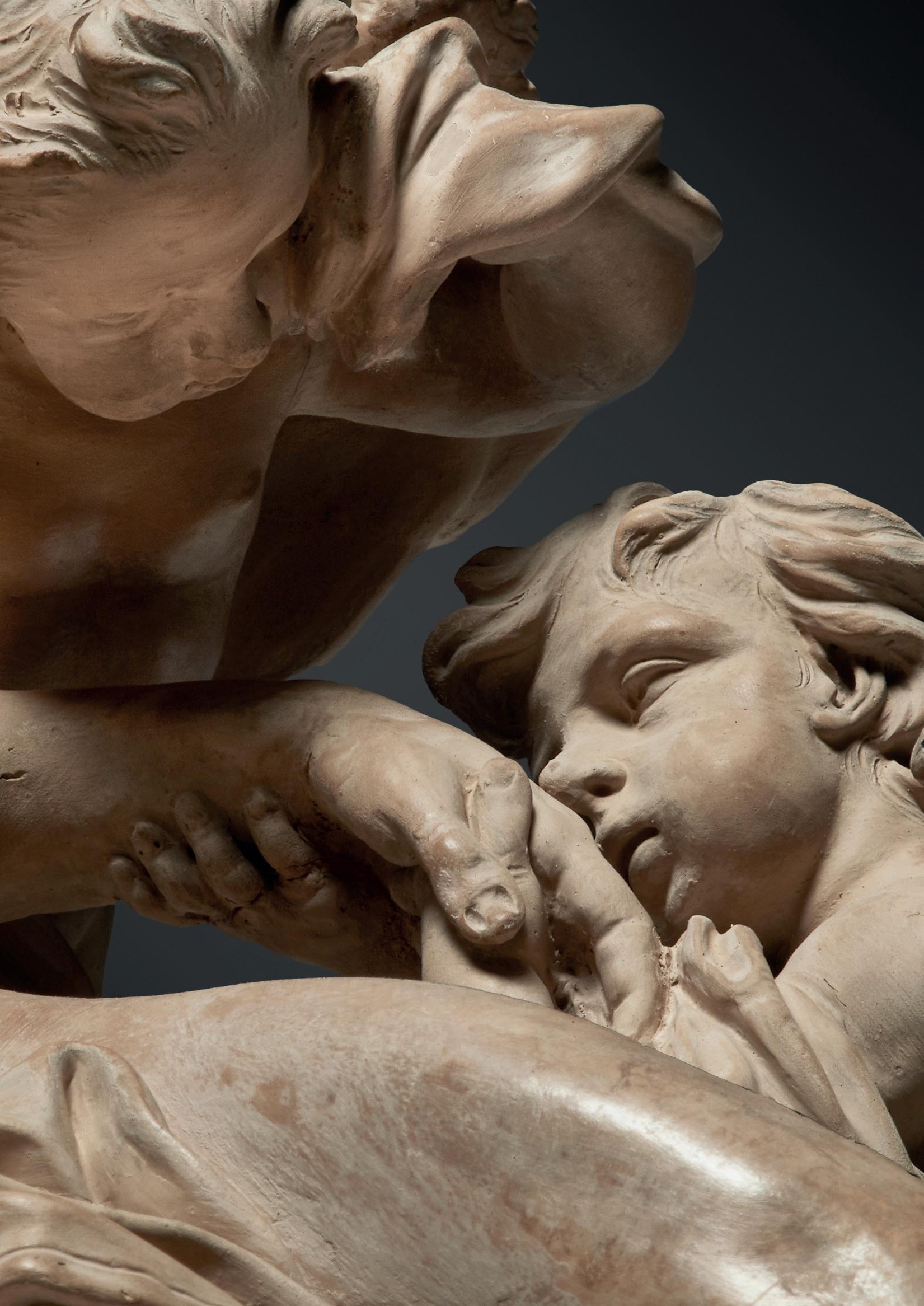
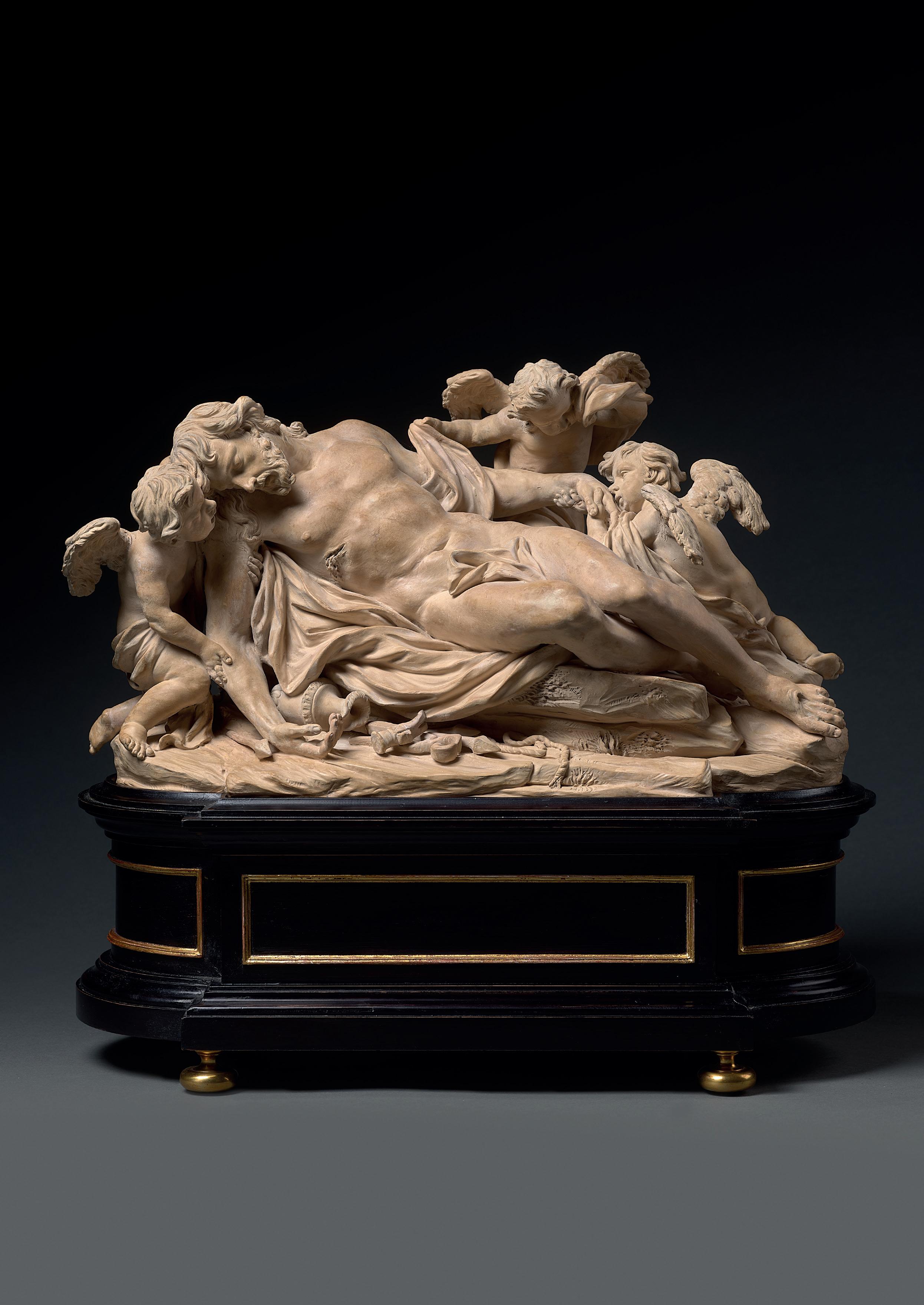
Attributed to
Antwerp, 1676 - 1759, Munich
Portrait bust of Prince Eugene of Savoy-Carignano (1663 – 1736), c. 1710-15
Terracotta
77 × 61 × 35 cm. (30 3/8 × 24 × 13 3/4 in.)
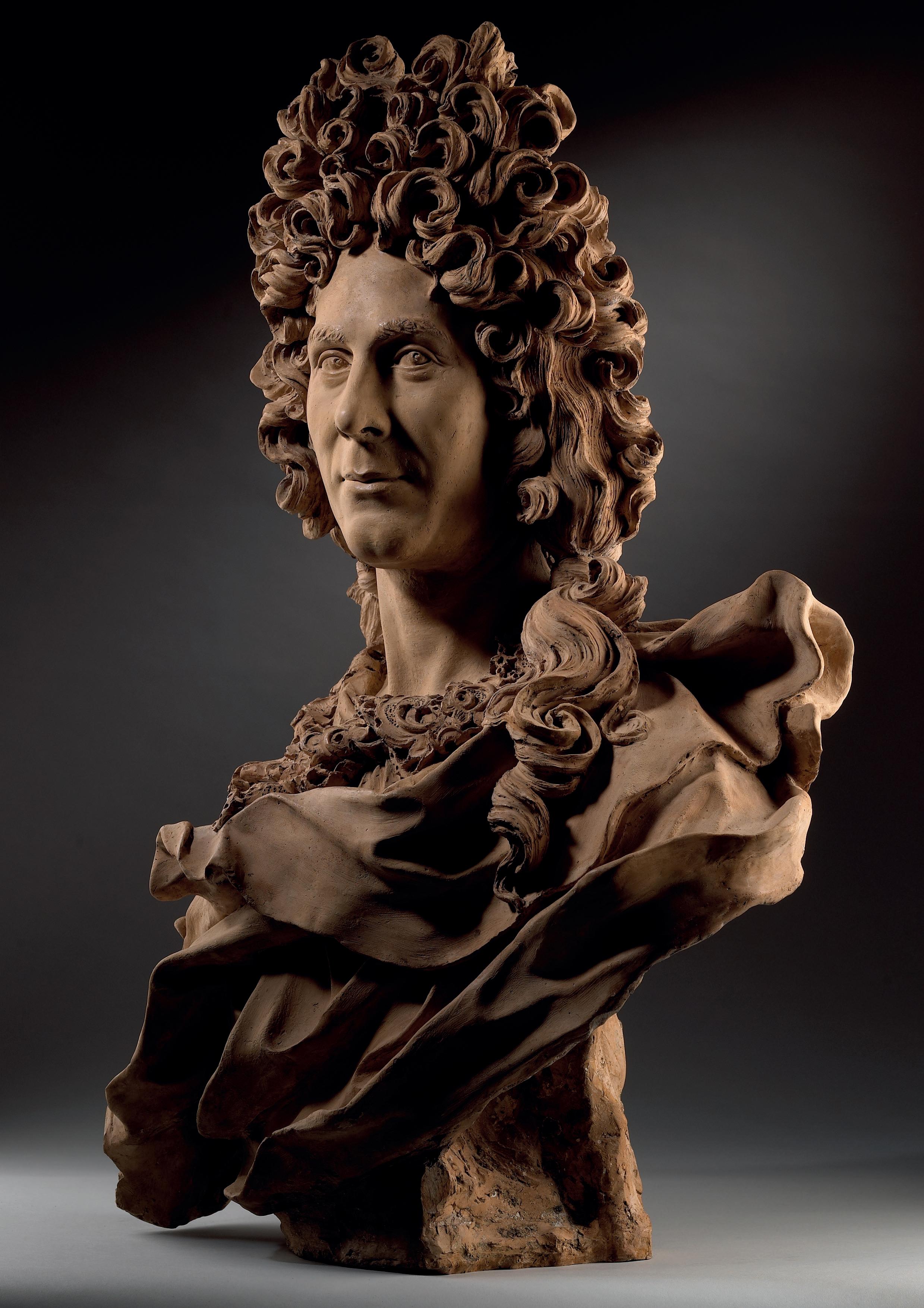
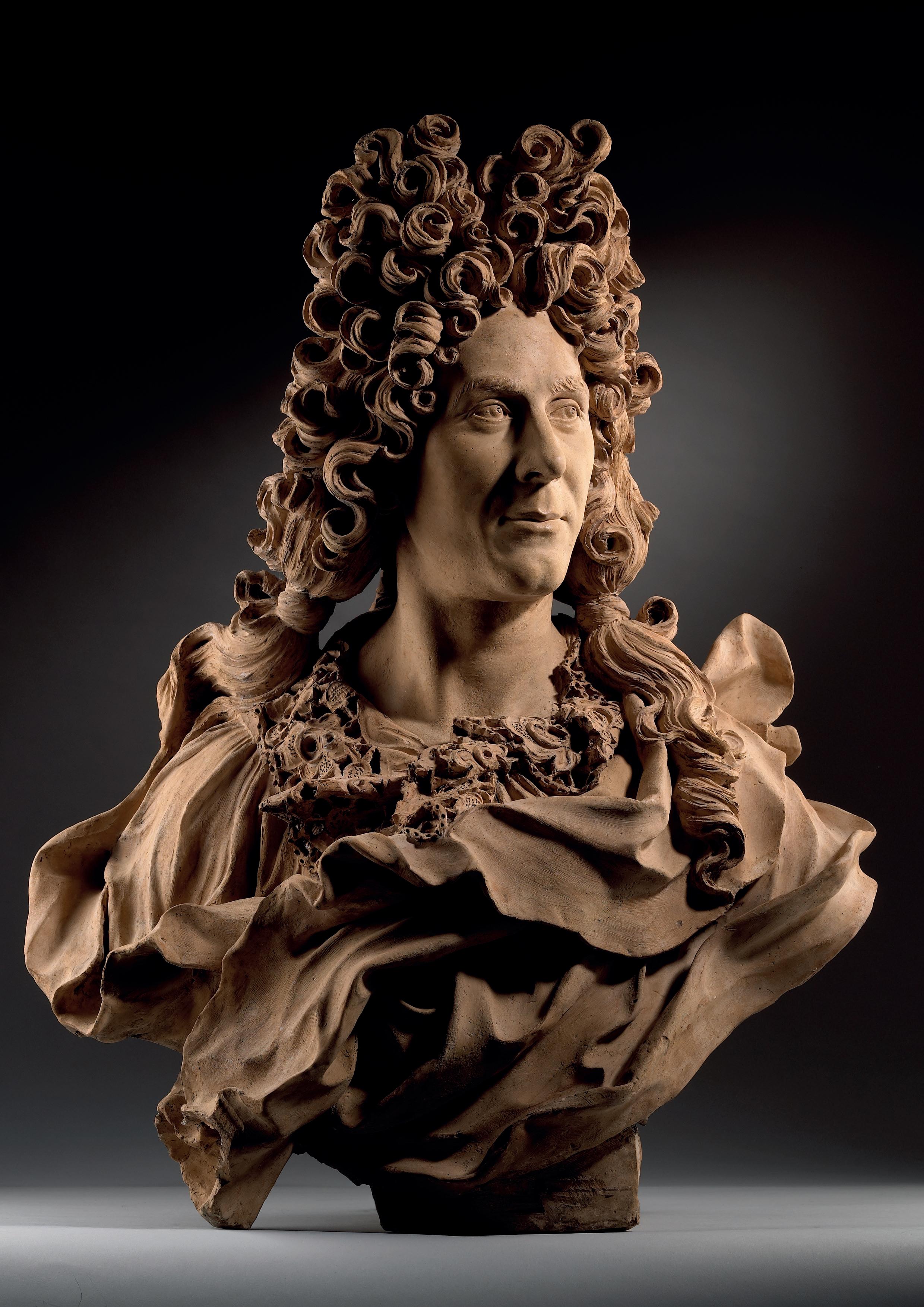
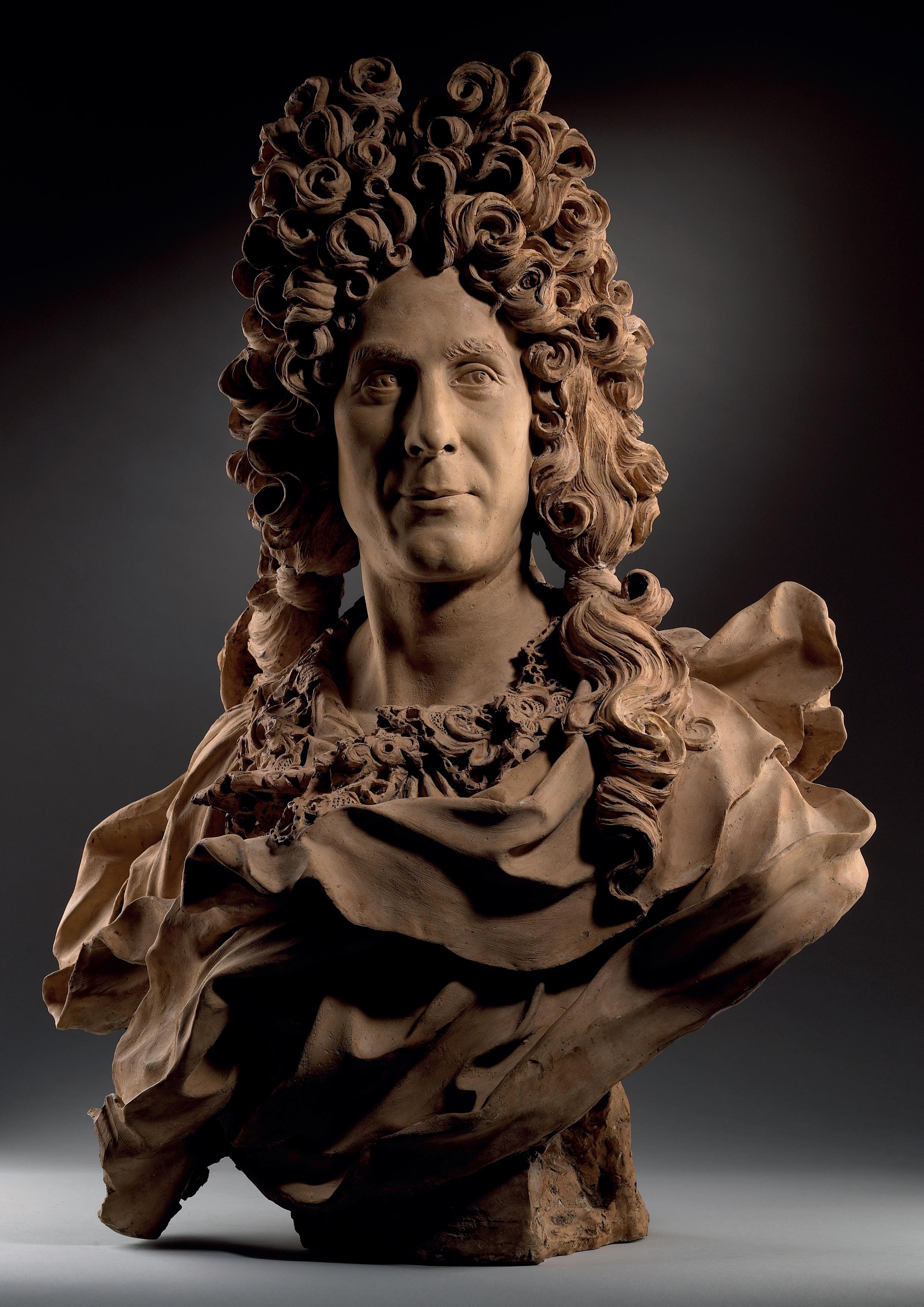
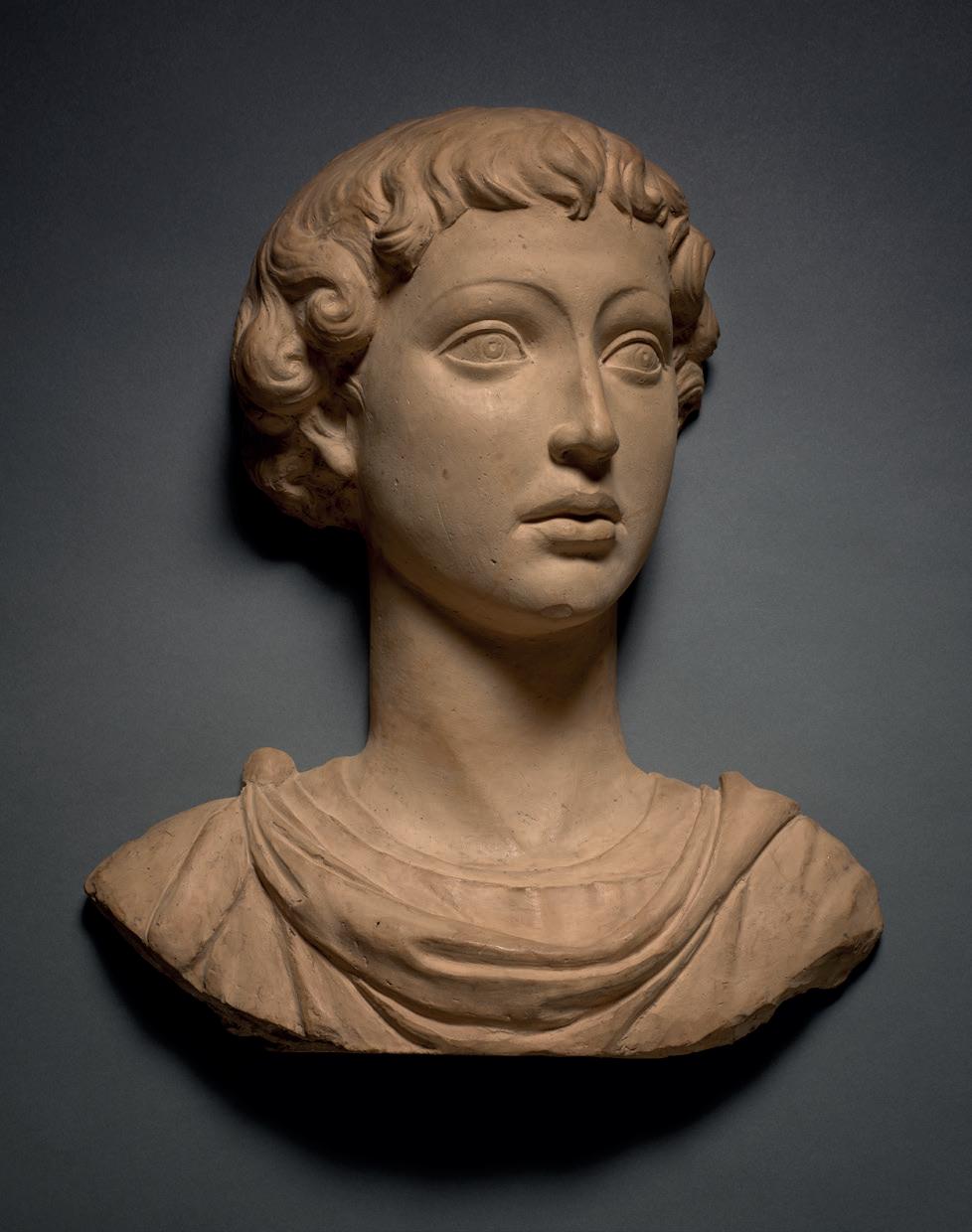
Florence, 1399/1400 – 1482
Portrait of a Youth, c. 1435–40
Terracotta roundel-type bust
39 × 33 × 15 cm. (15 1/3 × 13 × 6 in.)
Provenance
Stefano Bardini gallery, Florence.
His sale; The American Art Galleries, New York, 25 April 1918, lot 316 (purchased by W.W. Seaman, agent).
William Boyce Thompson collection, Alder Manor, Yonkers, New York.
Anon. Sale; Christie’s, New York, 11 January 1994, lot 11.
Literature
The American Art Galleries, New York, The Stefano Bardini Collection. Beautiful Treasures and Antiquities illustrating the Golden Age of Italian Art, sale catalogue, 23-25 April 1918, lot 316.
Christie’s, New York, European Works of Art,
Furniture and Tapestries (The Properties of The Alder Manor Collection and from various sources), sale catalogue, 11 January 1994, p. 18, lot 11.
F.M. Bacci, Ritratti di Imperatori e profili all’antica. Scultura del Quattrocento nel Museo Stefano Bardini, A. Nesi, ed., Florence, 2012, pp. 140-45, 155 notes 83-85, figs. 99-102.
G. Gentilini, in Glazed. The legacy of the Della Robbia, G. Gentilini, A. Butterfield, M. Schwartz, eds., selling exhibition, Sotheby’s, New York, and Moretti, London, 21 October – 18 November 2016, pp. 104-07, no. 18; pp. 159-62.
D. Lucidi, Universo Bardini, Florence, 2019, pp. 6364, no. 4, fig. 25.
This elegant youth is depicted with a penetrating gaze, emphatically arched and taut eyebrows, and soft, fleshy and slightly parted lips, which together produce an image of noble composure, at once resolute and apprehensive. The figure has a short, modelled Quattrocento hairstyle, with locks of hair falling over the forehead and ears in a lively manner. His dress, consisting of a simple tunic worn under a mantle, fastened over the right shoulder by a ball-shaped clasp, represents an interest in the fashion of the Classical period. These elements suggest it is an idealised portrait of the young descendant of a wealthy, cultivated Florentine family of the early Renaissance.
The abbreviated bust and curved contour of the chest indicate that this bust, modelled in high relief, was meant to attach to a flat surface and it would have been encircled by a medallion frame or inserted within a stone architectural roundel. The slight projection of the head and the elongated neck suggest that it was originally placed high on the wall, and therefore designed to be seen from below, showing the sculptor’s awareness of perspective and the lessons of Donatello. Two holes made at the top of the head presumably facilitated the attachment to a support secured by metal rods.
The reverse of the sculpture reveals that it was shaped by direct modelling, that is, without moulds, and with a notable level of technical mastery. The solidity of the terracotta, veined only by the finest of cracks, is also indicative of this method. The clay appears to have been worked on a modelling board, the reverse later excavated with specific tools (fuselli or mirette) so that the thickness of the piece was uniform. This was a practice – customary, above all, in Della Robbia sculpture – that reduced shrinkage and mitigated the risk of fractures during firing1.
The bust belonged to the celebrated Florentine dealer Stefano Bardini (1836 - 1922), who must have held it in high regard, as it can be seen in several early photographs (Bardini Photo Archive, City of Florence) recently published by Francesca Maria Bacci2. Set within an elegant Renaissance gilt wood frame (later removed), the bust stood at the centre of at least three different displays in Bardini’s prestigious and spectacular gallery in the opulent palazzo in Piazza dei Mozzi.
The medallion was also included in the impressive catalogue of the Bardini sale held in New York on 25 April 1918 (The American Art Galleries,
lot 316), where the terracotta was attributed to Andrea della Robbia. It was surrounded by a wooden frame that was catalogued as ‘contemporary to the sculpture’ but believed by Bacci3 to be ‘modern’ and added by Bardini. A manuscript annotation in the copy of the catalogue owned by the dealer (housed in the Bardini Archive at the Polo Museale Fiorentino) indicates that the work was sold on that occasion for $450 to the agent W.W. Seaman4.
Having passed into the extensive collection of William Boyce Thompson (1869 - 1930), copper magnate, financier and philanthropist, the relief was displayed in Alder Manor, a splendid Renaissance-style villa in Yonkers, north of New York City. In the 1950s the building became a Catholic School, and was united with Iona College, but it later fell into disrepair. Still in its wooden frame, the work reappeared at Christie’s New York on 11 January 1994, in an auction that included important Florentine Quattrocento sculptures from the same collection, referred to as ‘The Alder Manor collection’. It was offered for sale generically labelled as ‘Florentine, early sixteenth century’, and supported by a thermoluminescence test carried out in December 1993 by the Research Laboratory for Archaeology and History of Art at Oxford University, which attested to its creation between 1393 and 1643.
The terracotta subsequently passed to a private collection in Europe, and its carved frame was removed. A Della Robbia authorship was recently reaffirmed by Francesca Bacci in her volume on the all’antica portraits owned by Bardini, and she discusses and illustrates our bust as possibly ‘ascribed to the workshop of Luca della Robbia, perhaps by the young Andrea’, confirming the attribution I had suggested, subsequently reaffirmed by David Lucidi5
Busts in roundels, with portraits of famous men of the past or contemporary figures, whether true to life or idealised, constitute a welldocumented type in the Della Robbia catalogue of glazed terracottas. The well-known and moving Young Man in the Bode-Museum, Berlin, acquired in 1894 from the Marchesi Torrigiani of Florence, and similar figures of youths6, are all attributable to the prolific hand of Andrea della Robbia (Florence, 1435 - 1525). Outstanding among these is the sophisticated Young Lady in the Museo Nazionale del Bargello in Florence7. High relief busts, similar
in conception, and known to be part of the family’s production of terracottas painted a freddo, were presumably originally finished with a naturalistic polychromy, or tinted to resemble bronze or marble, as in the intense Male Portrait, perhaps a likeness of Verrocchio, ascribed to Andrea, circa 14708, and recently acquired by the Alana Collection9.
The Young Man in Berlin (seriously damaged by fire during the wartime events of May 1945), long debated by scholars as being by either Luca della Robbia10 and his nephew Andrea, who would have modelled it under the guidance of the aged master11, or made with Luca’s direct collaboration12, is now attributed to Luca13 and dated to about 1465/7014. That sculpture constitutes the closest point of reference to our terracotta, in both type and iconography, but what distinguishes it from the Berlin portrait are the facial features, refined decoration of the clothing, greater expressive emphasis and sculptural exuberance, accentuated by the complex curling of the hair, all of which signify an early date of manufacture and an autograph work by Luca himself.
Indeed, the qualities of this bust – composed Classicism, description of character without dwelling on narrative or sentiment, and remarkable sculptural brevity – are better suited to the authorship of Luca della Robbia. Defined as one of the fathers of Renaissance art by Leon Battista Alberti in the forward to his treatise On Painting (1436), Luca was among the protagonists of the rebirth of terracotta sculpture, which he enriched in about 1440 with the ‘meravigliosa invenzione’ of ‘invetriatura’ (the marvellous invention of glazing). Luca never abandoned his use of terracotta painted a freddo15, assiduously and successfully practised during his early career, as seen in the beautiful Madonna Virgin and Child in Sant’Andrea a Palaia16. Numerous, close parallels for our work can be found within the master’s oeuvre between the 1430s and 1450s, in the youthful appearance of the curved jawline, the short, modelled hair, enlivened by serpentine, spiralling locks, the intensity of expression, and the Classical style of dress.
These specific aspects of Luca’s works are found in earlier panels from the masterful Cantoria made for Florence Cathedral (1431 - 1438), now in the Museo dell’Opera del Duomo. Note the relief representing Choristers with a Book, in which the hair of the central figures is treated identically, and
the Grammar relief from the Campanile (1437-39), housed in the same museum, in which treatment of both the hair and the facial features are comparable. The angelic figures and the young Saint John the Evangelist carved by Luca in subsequent works in marble, such as the Tabernacle of the Eucharist for Santa Maria Nuova (1441), later moved to Santa Maria a Peretola, and the Tomb of Bishop Federighi in San Pancrazio (1454 - 1456), now in Santa Trinità, also patently resemble the present work. Another striking resemblance can be found in Luca’s early work in glazed terracotta, including the Ascension (1446 - 1451), in the young Apostle on the right, and the two Angels supporting Candelabra (1448) in Santa Maria del Fiore.
It is reasonable, therefore, to date this work toward the end of the 1430s, as suggested by the formal parallels found in one of the last panels Luca completed for the Cantoria, Putti playing cymbals, which displays the same definition of emphatically arched and elevated eyebrows and the subtle tooling of eyelids and pupils. Furthermore, the medalliontype relief, devoid of both a background and a ceramic framework, commonly found in the more mature work of the Della Robbia studio, indicates our noble Youth is among the first examples of the successful Renaissance genre of all’antica portraits in roundels. This style was emerging concurrently in Rome, Florence and Milan, particularly through the Classically-inspired sculpture of Antonio Filarete17, who – as he declared in his Trattato di Architettura of 1464 – was a great admirer of the art and technical mastery of Luca della Robbia.
Giancarlo Gentilini
We thank Professor Francesco Caglioti for endorsing the attribution proposed by Giancarlo Gentilini (2016), and for contributing additional supporting evidence. A written report, dated 16 January 2024, is available upon request.
Notes
1 See G. Gentilini, “La scultura fiorentina in terracotta del Rinascimento: tecniche e tipologie”, in La scultura in terracotta, tecniche e conservazione, M.G. Vaccari, ed., Florence, 1996, pp. 64-103.
2 F.M. Bacci, Ritratti di Imperatori e profili all’antica. Scultura del Quattrocento nel Museo Stefano Bardini, A. Nesi, ed., Florence, 2012, pp. 140-45, 155 notes 83-85, figs. 99-102.
3 Ibid., p. 140.
4 Ibid., p. 155 note 84.
5 Ibid., pp. 144-45, 155 note 85, fig. 10; D. Mucidi, Universo Bardini, Florence, 2019, pp. 63-64, no. 4, fig. 25.
6 Metropolitan Museum of Art, New York; Spitzer collection, Paris, 1892; Musée du Louvre, Paris; private collection, Hamburg; Detroit Institute of Arts; Sotheby’s, New York, 26 January 2012, lot 299.
7 G. Gentilini, I Della Robbia. La scultura invetriata nel Rinascimento, 2 vols., Florence, 1992, I, pp. 171, 173.
8 G. Gentilini, “Andrea della Robbia. Ritratto di giovane (Andrea del Verrocchio?)”, in Finarte, Milan, Importanti sculture dalla Grecia Classica al contemporaneo, sale catalogue, 17 April 2007, pp. 32-35, lot 10.
9 L. Cavazzini, in The Alana Collection. II. Italian Paintings and Sculptures from the fourteenth to sixteenth Century, M. Boskovits, ed., Florence, 2011, pp. 102-04, no. 16.
10 A. Marquand, Luca della Robbia, Princeton, 1914, pp. 205-06, no. 57.
11 A. Marquand, Andrea della Robbia and his Atelier, 2 vols., Princeton, 1922, pp. 26-27, no. 12.
12 L. Planiscig, Luca della Robbia: con 137 riproduzioni, Florence, 1948, p. 74.
13 J. Pope-Hennessy, Luca della Robbia, Oxford, 1980, p. 272, no. 77.
14 Gentilini, I Della Robbia, 1992, I, p. 173.
15 G. Gentilini, “‘Un’arte nuova, utile e bellissima’. Pensieri intorno all’ ‘invenzione’ della scultura invetriata”, in La Primavera del Rinascimento. La scultura e le arti a Firenze 1400-1460, exhibition catalogue (Palazzo Strozzi, Florence, 23 March - 18 August 2013; Musée du Louvre, Paris, 26 September 2013 - 6 January 2014), B. Paolozzi Strozzi, M. Bormand (with I. Ciseri), eds., Florence, 2013, pp. 188-95.
16 Gentilini, I Della Robbia, 1992, I, pp. 39-81, 10811, 170-71; A. Bellandi, in I Della Robbia e l’“arte nuova” della scultura invetriata, exhibition catalogue (Basilica di Sant’Alessandro, Fiesole, 29 May - 1 November 1998), G. Gentilini, ed., Florence, 1998, pp. 181, 318, no. 17.
17 G. Gentilini, D. Lucidi, in Scultura italiana del Rinascimento. Statue e rilievi in marmo e pietra, terracotta, stucco e legno, bronzetti e sculture decorative, Giorgio Baratti Gallery, exhibition catalogue (The Westin Excelsior, Florence, 5 - 9 October 2013), G. Gentilini, D. Lucidi, eds., Florence, 2013, pp. 72-81, no. 7.
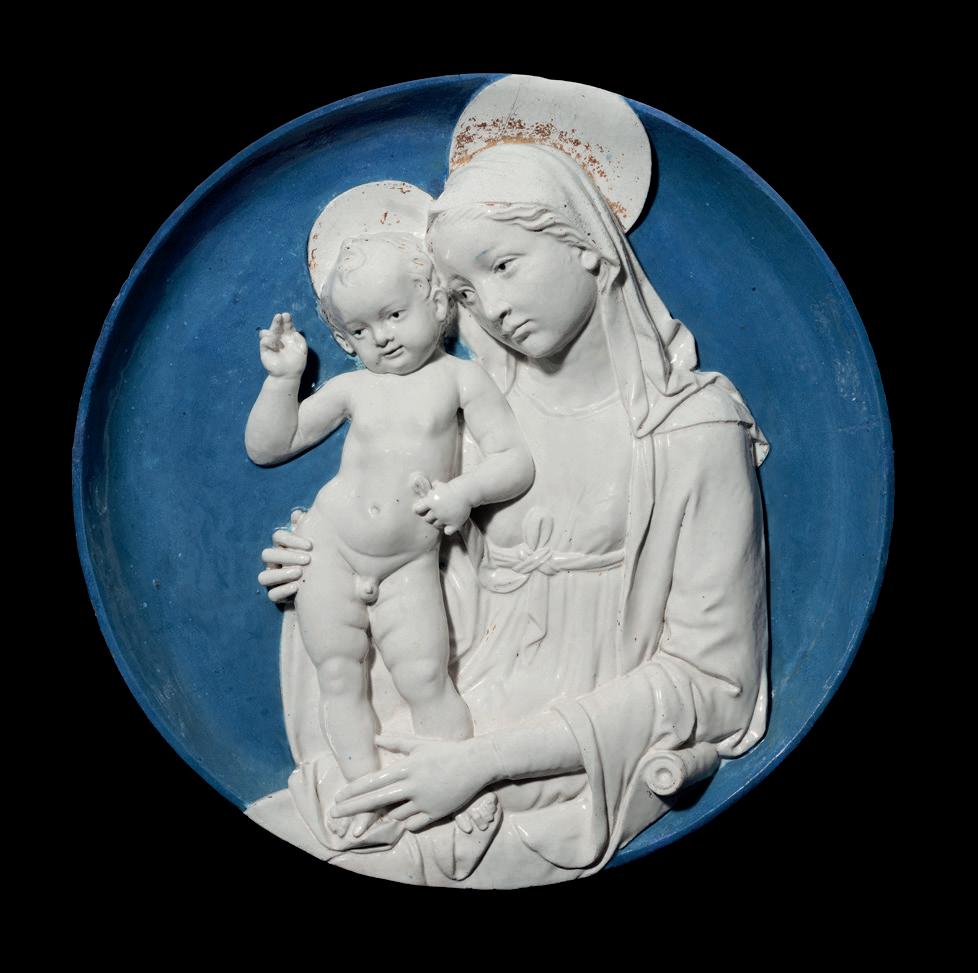
Florence, 1435 - 1525
The Virgin with the Blessing Child, c. 1490–95
Glazed terracotta roundel
45 cm. (17 3/4 in.) diameter
Provenance
Émile Gavet (1830 – 1904), Paris.
Victor Martin Le Roy (1842 – 1918), Paris; and by inheritance to his daughter Jeanne Marquet (1883 – 1956) and her husband Jean-Joseph de Vasselot (1871 – 1946), Paris; thence by descent. Private collection.
Literature
R. Koechlin, Catalogue raisonné de la Collection
Martin Le Roy, fascicule II, Ivoires et sculptures, Paris, 1906, pp. 119-20, no. 56, pl. XXXII.
A. Marquand, Andrea Della Robbia and his atelier, New York, 1972, vol. I, p. 71, no. 183.
This emblematic depiction, infused with delicate naturalism, epitomises Andrea della Robbia’s most poignant Marian compositions, crafted for domestic devotion1. In an exquisite, diminutive roundel, the Virgin is seated on a faldstool, denoted by a scrolled armrest, tenderly supporting the standing Infant Christ on her knees, cradling Him with both hands in a careful and gentle embrace. The Child, extending an arm to bless the observer, to whom He offers a benevolent smile, steadies Himself by clutching a loop of His mother’s sash belt. The Saviour’s nudity is presented in a lively and spontaneous fashion, underscoring the human essence of the ‘Word made flesh’, while the Madonna’s countenance, characterised by youthful, sweet features and encircled by a modest veil, is portrayed as reflective and tinged with melancholy. This aligns with the traditional theme of the ‘Prevision of Mary’: she is aware of her Son’s sacrifice, which is subtly referenced by her fingers which caress the foot destined to be pierced on the Cross. The composition is set against a gently concave backdrop with a modulated projection, transitioning from ‘half-relief’ - employed to sculpt the Child’s form in the foreground - to stiacciato for the more recessed figure of the Virgin. This meticulous modelling demonstrates Andrea’s mastery as a miniaturist, a trait prevalent in his finest autograph works, notably in the predellas of monumental altarpieces realised in the latter half of the fifteenth century, as well as in various other devotional works traceable to the final quarter of the century.
Already attributed to Andrea della Robbia in the catalogue of sculptures from the Martin Le Roy collection published in 1906 by Raymond Koechlin2, the work was subsequently reclassified by Allan Marquand in his essential repertoire dedicated in 1922 to the production of the master and his ‘atelier’3. It belongs to a well-documented type found in about ten examples, some of which have entered important museums and public collections4. As we will see in more detail, these vary in size and certain details: this type is usually called the Madonna of Liechtenstein or of Arezzo due to the most notable and significant versions. This attribution has been further explored and reaffirmed by recent scholarship5
This assertion is substantiated by a multitude of recurring compositional, stylistic, and iconographic
elements present in Andrea della Robbia’s representations of the Madonna, commencing with his inaugural documented masterpiece, the renowned Madonna of the Architects from 1475 (Museo Nazionale del Bargello, Florence, originally from the Arte dei Maestri di Pietra e Legname). Notable among these elements are the positioning of the Child to the right of the Mother, the lower hem revealing the Virgin’s knees and an armrest of the faldstool, the Child’s robust anatomy, the Virgin’s youthful features, and the poignant detail of fingers caressing the Child’s foot, all of which demonstrate the sculptor’s narrative virtuosity. This narrative prowess is further mirrored in the intimate connections with two other smallformat ‘serial’ Marian types that have long been consistently ascribed to Andrea. The first, in the form of a shrine revered at the sanctuary of the Blessed Virgin of the Graces of Boccadirio in Baragazza (Castiglione dei Pepoli), was crafted around 1480 or shortly thereafter. The second in the form of a medallion in the Bargello, and believed to have been created around 14906
A decisive confirmation, however, is provided by the presence of a roundel featuring the same image set at the centre of the predella of one of Andrea della Robbia’s most exquisite altarpieces, the Trinity between Saints Donatus and Bernard currently in the Cathedral of Arezzo. This work, which was highly praised by Vasari, is documented as having been executed in 1485-86 for the local Confraternita della Trinità7. The inclusion of the roundel effectively establishes a terminus ad quem for dating at least the initial conception of this type, suggesting that, by 1485, several examples had already been crafted and possibly became the focus of fervent veneration. It is unequivocally clear that Andrea regarded this model - inspired by a successful composition by Verrocchio, which was subsequently revisited by various painters and sculptors, including his son Giovanni della Robbia8 - as particularly effective, as evidenced by its replication in small altarpieces and medallions designed for private devotion. He also adapted this model, with certain variations, in several altarpieces depicting the Virgin and Child flanked by two or four Saints. These adaptations are exemplified by works in multiple locations: the Museo Statale d’Arte Medievale e Moderna di Arezzo from San Francesco a Sargiano (circa 1495); Sant’Agata in Radicofani (circa 1500); the Museo Civico di
Montalcino from the church of San Francesco (1507); and the Chapel of San Bernardo degli Uberti in the Camaldoli Hermitage (circa 1515)9
As previously noted, the reliefs attributed to this type predominantly vary in the configuration of their backgrounds: rectangular, perhaps in earlier versions dating from around 1480-85 (found in the collections of Vaduz - Vienna, Liechtenstein; in a private collection in Modena; and in Boston, belonging to W.C. Endicott Jr.), and subsequently in arch-shaped forms (Museo di Casa Buonarroti, Florence; Stefano Bardini in Florence; and one sold at Christie’s, London, 4 December 2018, lot 24, among others), or circular (as seen in the Trinity altarpiece in Arezzo Cathedral). Some are adorned with a garland frame (Bode-Museum, Berlin; Cappella of delle Stimmate, La Verna)10. The dimensions of these images are substantially consistent, and in their modelling only minor variations are apparent, such as in the design of the armrest or the drapery of some mantles. It is therefore plausible to consider that they were largely produced using casts, a method extensively employed by many Florentine sculptors of the early Renaissance and widely utilised in the Robbian workshop11.
The version in question, while conforming to the other examples by this family in terms of the proportions of the figures, distinguishes itself by some more significant and substantial modifications of a formal and iconographic nature. These include the wide, undulating, and wrinkled folds of the veil resting on the Virgin’s shoulders and the mantle gathered over the knees, the greater flexion of the Child’s left arm with the hand resting on the side, similar only in the Madonna of the Trinity in Arezzo - where, however, He does not grasp the sash - and especially the different articulation of the two fingers of the Virgin, the index and middle, which touch the foot of the Son, here joined to brush its back while in other reliefs they are spread ‘scissor-like’, as in the Madonnas of the type called ‘di Boccadirio’. This last solution brings it closer to the type of the aforementioned medallion from the Bargello, also replicated in the predella of the altarpiece in Santa Maria degli Angeli at La Verna depicting the Christ in Piety created in the early nineties, and therefore, along with the other stylistic variations indicated, suggests a later dating for our Madonna, around 1490-95, and an updating of the model attributable to Andrea himself.
Furthermore, by examining the relief from behind, it can be observed that the clay bears on its surface the imprints of a board and in the cavities the grooves of the mirettes used to hollow out the projecting parts; these are technical aspects that suggest a ‘direct modelling’ rather than a ‘moulding from a cast’12. Additionally, it is appropriate to note that the position of the fingers and some other variations found here, such as the greater breadth of the veil, are found, albeit with some differences, in two more autonomous versions of the Madonna and Child but traceable to this same typology: a polychrome glazed terracotta arch-shaped relief (Art Collections of the Cassa di Risparmio di Parma e Piacenza, Parma), in which the Child clutches a bird, a work attributed to Andrea with the collaboration of his son Giovanni around 1495-150013, and a painted stucco medallion (Archive of the Hospital of the Innocents, Florence)14, perhaps derived from a glazed example slightly earlier than ours, as also suggested by the similar concave background.
The interest and value of this work are further enhanced by its illustrious provenance. The work comes from the vast yet refined art collection of Victor Prosper Martin le Roy (1842 - 1918), a wealthy Parisian magistrate among the founders of the Societé des amis du Louvre. Subsequently, the work was inherited by his son-in-law JeanJoseph Marquet de Vasselot (1871 - 1946), a renowned archaeologist and art historian, director of the Museum of Cluny, curator at the Louvre and president of the Société nationale des antiquaires de France, who in 1906 married Martin le Roy’s daughter Jeanne (1883 - 1956). In addition, Marquet de Vasselot supervised the publication of the Catalogue raisonné de la Collection Martin Le Roy, in five volumes published between 1906 and 1909, with the collaboration of his friend Raymond Koechlin who, in the volume dedicated to sculptures and Medieval ivories (some of which were recently acquired by the Museum of Cluny), catalogued the Madonna with the correct attribution to Andrea della Robbia, also noting its provenance in the prestigious Gavet collection15. Émile Gavet (18301904), architect and decorator, patron of the painter Jean-François Millet, was among the most significant collectors and dealers of Medieval and Renaissance art during the late-nineteenth century. In his refined Pairisian apartment, located on the Île de la Cité,
were numerous high-quality Robbian sculptures, like the exquisite Madonna with Blessing Child by the young Andrea della Robbia which later entered the collection of New York’s Metropolitan Museum16.
Giancarlo Gentilini
Notes
1 A. Marquand, Andrea della Robbia and his atelier, 2 vols., Princeton, 1922; J. Pope-Hennessy, “Thoughts on Andrea della Robbia”, in Apollo, vol. CIX, 1979, pp. 176-97; G. Gentilini, I Della Robbia. La scultura invetriata nel Rinascimento, Florence, 1992, I, pp. 169-271; G. Gentilini, ed., I Della Robbia e l’“arte nuova” della scultura invetriata, exhibition catalogue (Basilica di Sant’Alessandro, Fiesole, 29 May - 1 November 1998), Florence, 1998, pp. 172-247; G. Gentilini, ed., I Della Robbia. Il dialogo tra le Arti nel Rinascimento, exhibition catalogue (Museo Statale d’Arte Medievale e Moderna, Arezzo, 21 February - 7 June 2009), Milan, 2009, pp. 198-247, 327-47; M. Cambareri, ed., Della Robbia. Sculpting with Color in Renaissance Florence, exhibition catalogue (Museum of Fine Arts, Boston, 9 August4 December 2016; National Gallery of Art, Washington, D.C., 5 February - 4 June 2017), Boston, 2016.
2 R. Koechlin, Catalogue raisonné de la Collection Martin Le Roy. II. Ivores et Sculptures, Paris, 1906, pp. 119-20, no. 56, fig. XXXII.
3 A. Marquand, Andrea della Robbia, 1922, p. 71, no. 183.
4 Ibid., I, pp. 98-100 no. 76, II, pp. 69-71, no. 178-84.
5 Gentilini, I Della Robbia, 1992, I, pp. 186, 221, 270 note 27; G. Gentilini, in Le collezioni d’Arte della Cassa di Risparmio di Parma e Piacenza, G. Godi, C. Mingardi, eds., Parma, 1994, pp. 95-97, no. 131; F. de Luca, in I Della Robbia e l’“arte nuova”, 1998, pp. 198-99, no. II.11; A. Tamborino, in I Della Robbia, 2009, pp. 226, 337-38, no. 58.
6 de Luca, in I Della Robbia e l’“arte nuova”, 1998, pp. 200-01, no. II.12, pp. 201-02, no. II.13.
7 Gentilini, I Della Robbia, 1992, I, pp. 203, 211, 269 note 18.
8 T. Mozzati, in I Della Robbia, 2009, pp. 276-77, 361, nos. 104-05.
9 Gentilini, I Della Robbia, 1992, II, pp. 222-23, 244, 262-63, 266-67.
10 See notes 4 and 5.
11 D. Babour, J.M. Olson, “New methods for studying serialization in the workshop of Andrea della Robbia: technical study and analysis”, in Della Robbia, dieci anni di studi - dix ans d’études, A. Bouquillon, M. Bormard, A. Zucchiati, eds., Genoa, 2011, pp. 56-61.
12 M.G. Vaccari, “Tecniche e metodi di lavorazione”, in I Della Robbia e l’“arte nuova”, 1998, pp. 172-247; Babour, Olson, in Della Robbia, 2011.
13 See note 5.
14 L. Bellosi, in Il Museo dello Spedale degli Innocenti a Firenze, L. Bellosi, ed., Milan, 1977, p. 229, no. 15, fig. 20.
15 See note 2.
16 A. Chong, “Émile Gavet: Patron, Collector, Dealer”, in Gothic Art in the Gilded Age. Medieval and Renaissance Treasures in the Gavet-Vanderbilt-Ringling Collection, exhibition catalogue (Ringling Museum of Art, Sarasota, 16 December 2009 - 4 April 2010), V. Brilliant, ed., Sarasota,
2009, pp. 1-21, figs. 5, 10; É. Molinier, Collection Émile Gavet. Catalogue Raisonné, Paris, 1889, pp. 1-6, no. 1-11; Catalogue des Objets d’Art et de haute curiosité (…) composant la collection de M. Emile Gavet, sale catalogue, Galerie Georges Petit, Paris, 31 May - 9 June 1897, pp. 22-23, nos. 188-203.
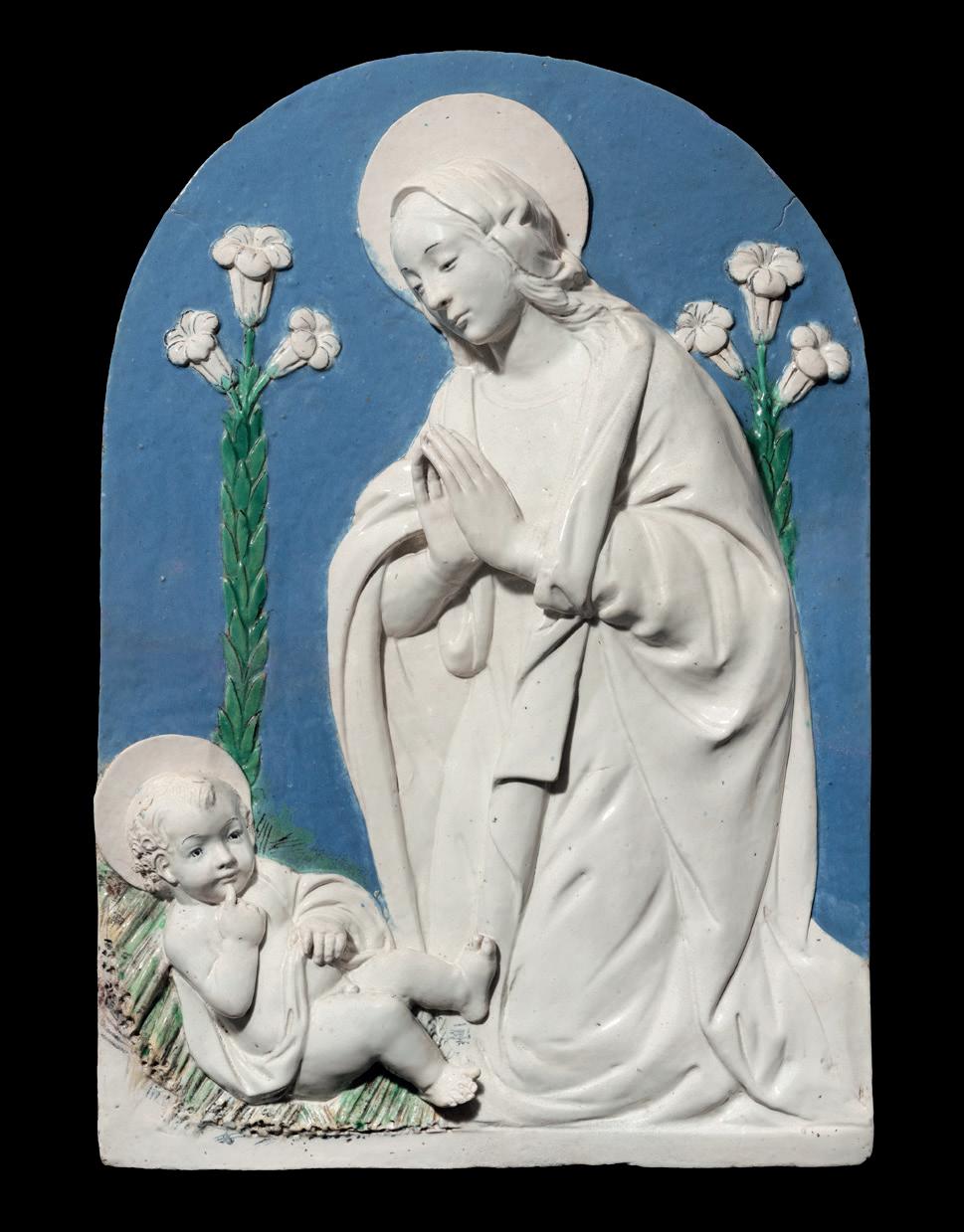
BENEDETTO BUGLIONI
Florence, 1459/60 - 1521
BENEDETTO DA MAIANO
Maiano, 1442 - 1497, Florence
Madonna and Child, c. 1495-1505
Glazed terracotta
70 × 47 × 8 cm. (27 1/2 × 18 1/2 × 3 1/8 in.)
Provenance
Private collection.
In this exquisite relief sculpture the Madonna kneels before the infant Christ, her hands drawn together in prayer, gazing affectionately towards her Son. The Christ Child looks directly out at the viewer and raises a finger to His mouth whilst playfully kicking His mother’s knee. Christ reclines on a mound of green and yellow hay, emphasising His humanity and presence on earth. On either side of the Madonna are two long green stems with lilies in full bloom: the white lily is a symbol of the Virgin’s purity. The figures are based on a composition by Benedetto da Maiano, datable to about 1490, which in turn was inspired by Andrea della Robbia’s representations of the Madonna adoring the Christ Child1. This glazed terracotta relief probably dates from shortly afterwards, between 1495 and 1505, and is by Benedetto Buglioni. Buglioni is believed to have been an apprentice in the Florentine workshop of Andrea del Verrocchio in the later 1470s and refined his technique in modelling clay in Andrea della Robbia's workshop, the nephew of the great Luca della Robbia, with whom Buglioni presumably initially collaborated and who was later his rival. The reverse of the terracotta relief shows that the sculpture was modelled by hand – not cast and reworked, as was usual practice – and this seems to be confirmed by the fact that the composition does not appear to have been replicated. Slight variations from Benedetto da Maiano’s design, such as the Madonna’s intertwined veil and the witty expression and pose of the kicking Christ Child, attest to the hand of Buglioni here. The unusual glazing of mottled colours in the Child’s rudimentary bed of straw and the vibrant green stems and white blossoms of the lilies set against the powder-blue background (originally also present in Da Maiano’s terracotta, but since abraded) are details that can be found in several reliefs of the Madonna created by Buglioni early in his career, appropriately named ‘of the lilies’ (such as the example in the Rijksmuseum, Amsterdam)2. As is well known, there are numerous examples of Benedetto Buglioni’s familiarity with works by Benedetto da Maiano, and the activity of Buglioni’s industrious workshop reveals these affinities. The enamelling (or glazing) of Buglioni’s Da Maiano-style reliefs, such as the two lunettes with The Evangelists Matthew and Luke in the Basilica of Loreto (circa 1480) and the relief of Saint Lawrence
among angels in the Certosa del Galluzzo (1496), correspond with Buglioni’s practice. The fact that Buglioni and Da Maiano worked closely together is attested to the fact that in 1497, following Da Maiano’s death, Buglioni took delivery of a ‘predella’ (probably in marble and ‘nearly finished’) by the recently deceased sculptor3. Buglioni is also known to have purchased some terracotta models from Da Maiano’s bottega at this time. And indeed, many of Buglioni’s altarpieces – and in particular his predellas (for example, the Nativity in the church of Agostiniane, Poppi, or the earlier Madonna and Saints in Montefiascone, datable to circa 1495-97) – quote directly from Da Maiano’s compositions. In these works, Buglioni adopted the design of Da Maiano’s Nativity in the predella for the Annunciation in the Terranova chapel in Sant’ Anna dei Lombardi, Naples, suggesting that he may even have owned Da Maiano’s original clay models. Furthermore, various glazed Madonnas by Benedetto Buglioni, including those in the Kaiser Wilhelm Museum, Krefeld; the Museo di Palazzo Taglieschi, Anghiari; and the Museo Nacional González Marti, Valencia, faithfully replicate Da Maiano’s famous marble medallion of the Tomb of Filippo Strozzi in the Florentine church of Santa Maria Novella (of which, moreover, casts in painted stucco were produced in Da Maiano’s workshop)4.
There appears to be a direct link between Buglioni’s relief and Da Maiano’s: both are modelled by hand, neither is known to have been replicated, and they share similar dimensions.
Giancarlo GentiliniNotes
1 G. Gentilini, T. Mozzati, in I Della Robbia. Il dialogo tra le Arti nel Rinascimento, G. Gentilini, ed., exhibition catalogue (Museo Statale d’Arte Medievale e Moderna, Arezzo, 21 February - 7 June 2009), Milan, 2009, pp. 225, 337, cat. no. 57.
2 G. Gentilini, I Della Robbia. La scultura invetriata nel Rinascimento, 2 vols., Florence, 1992, II, pp. 404, 434.
3 Ibid., pp. 391, 394, 398, and 446 note 11, and pp. 454-55 and 462-63.
4 Ibid., pp. 454, 464, and 488 note 19.
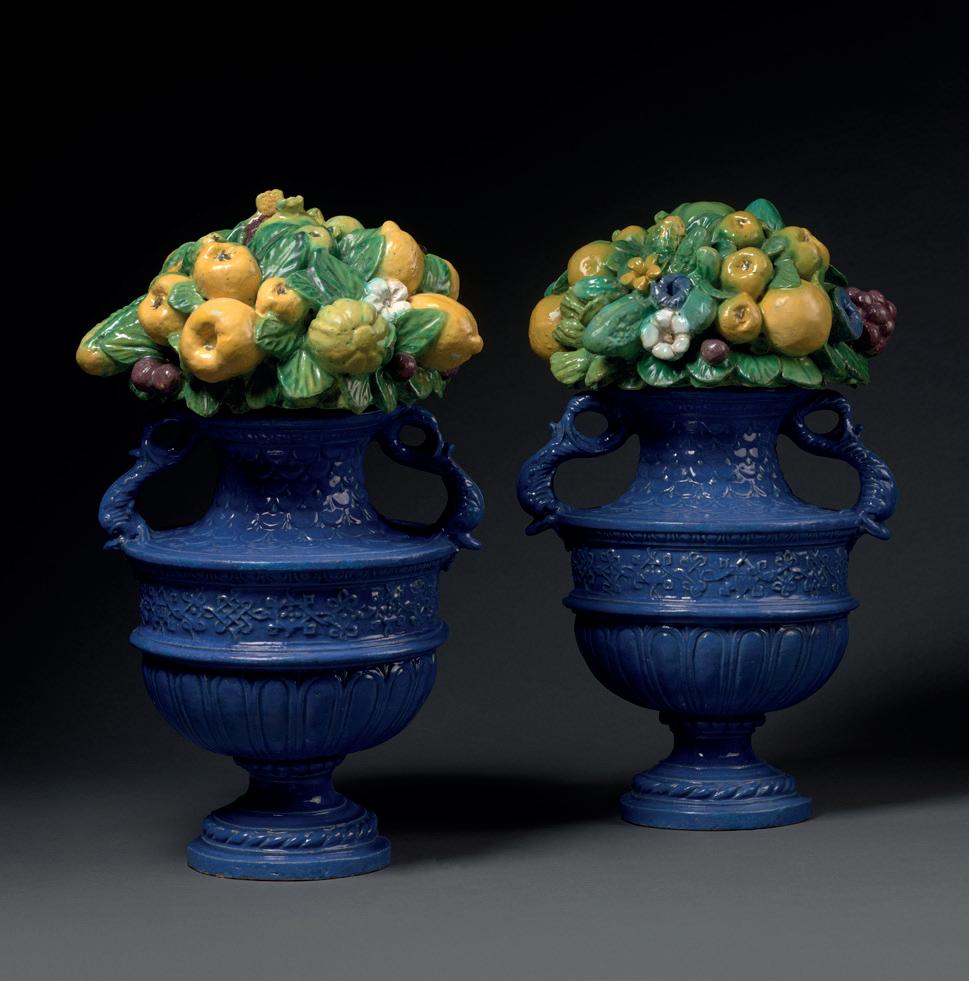
Florence, 1469 - 1529
Pair of Vases, c. 1520
Glazed terracotta
45 × 27 × 28 cm. (17 3/4 × 10 5/8 × 11 in.) each
Provenance
(Probably) Maurice Kann (1839 – 1906), Paris. His posthumous sale; Galerie George Petit, Paris, 5 December 1910, lot 204. Private collection.
These vases are fashioned like doublehandled amphorae with S-shaped handles in the form of dolphins, a motif frequently found in Renaissance maiolica since dolphins were associated with water. Characteristic of the Della Robbia manner, the necks of both vases are decorated with an imbricated pattern of scales and arrows, which lends them an architectural quality that recalls classical urns.
The body of each vase is ample and well-proportioned, and consists of a flared cup decorated with raised pods and a frieze embellished with variously intertwined geometric lines, similar to those found decorating the borders of contemporary illuminated manuscripts, also known as ‘nodi alla damaschina’. This border is framed by protruding cornices, the upper one featuring oval-shaped ornamentation. The vases themselves are designed to simulate virtuoso carving in lapis lazuli, while the lids feature luxuriant bunches of fruit, vegetables and flowers, enlivened by small creatures such as lizards and snails.
These were typical of the artworks crafted in the Della Robbia workshop, as can be seen in the exquisite garlands that decorate coats-of-arms and medallions, in frames and festoons that adorn altars and tabernacles, and in decorative baskets and vases such as these. Such decorative artefacts – which included baskets laden with fruit, single pieces of fruit, festoons of flowers and abundant greenery – took on auspicious meanings and were seen to allude to the prosperity and fecundity of the family who owned or commissioned them1.
Among Andrea’s many sons who were active in the Della Robbia workshop, Giovanni was the one most inclined toward rich ornamentation2. His decorative exuberance was derived from the archaeological repertoire that was fashionable in the early sixteenth century. Giovanni specialised in glazed vases, which can be grouped by shape and decoration into four basic types – whether ovoid or amphora-shaped – of increasing complexity, often distinguished by subtle variations in the ornamentation3. In 1959, Galeazzo Cora listed only fourteen examples of the type to which this rare pair of vases belongs, classifying them as Category A-III, identifiable by these shared characteristics: ‘upper zone: imbrications; lower zone: pods; in the middle: intertwining; smooth foot; almost spherical
shape. Along the lip, small leaves, ovules and stem above the central frieze, beaded above the foot and cordoned below’4. The most important examples belonging to this category are in the Manufacture et Musée nationaux de Sèvres, the Victoria and Albert Museum in London and the Ashmolean Museum, Oxford. The list also included a pair of vases, complete with their lids, in the collection of Maurice Kann (1839 – 1906) in Paris5. These were included in Kann’s posthumous sale in 1910 and, although they remain untraced, the catalogue description notes compatible dimensions and the features described match those of the present pair of vases.
Giancarlo GentiliniNotes
1 G. Gentilini, T. Mozzati, “Naturalia e mirabilia nell'ornato architettonico e nell'arredo domestico”, in I Della Robbia. Il dialogo tra le Arti nel Rinascimento, G. Gentilini, ed., exhibition catalogue (Museo Statale d’Arte Medievale e Moderna, Arezzo, 21 February - 7 June 2009), Milan, 2009, pp. 144-51.
2 For a biographical profile of Giovanni della Robbia, see A. Marquand, Giovanni della Robbia, Princeton, 1920; G. Gentilini, I Della Robbia. La scultura invetriata nel Rinascimento, 2 vols., Florence, 1992, II, pp. 279-328.
3 A. Bellandi, F. Quinterio, in I Della Robbia e l’“arte nuova” della scultura invetriata, G. Gentilini, ed., exhibition catalogue (Basilica di Sant’Alessandro, Fiesole, 29 May - 1 November 1998), Florence, 1998, pp. 275-79, nos. III.17-20.
4 G. Cora, “Vasi robbiani”, in Faenza, Ravenna, no. XLV, 3-4, 1959, pp. 51-60.
5 Marquand, Giovanni della Robbia, 1920, pp. 36-37, no. 26.
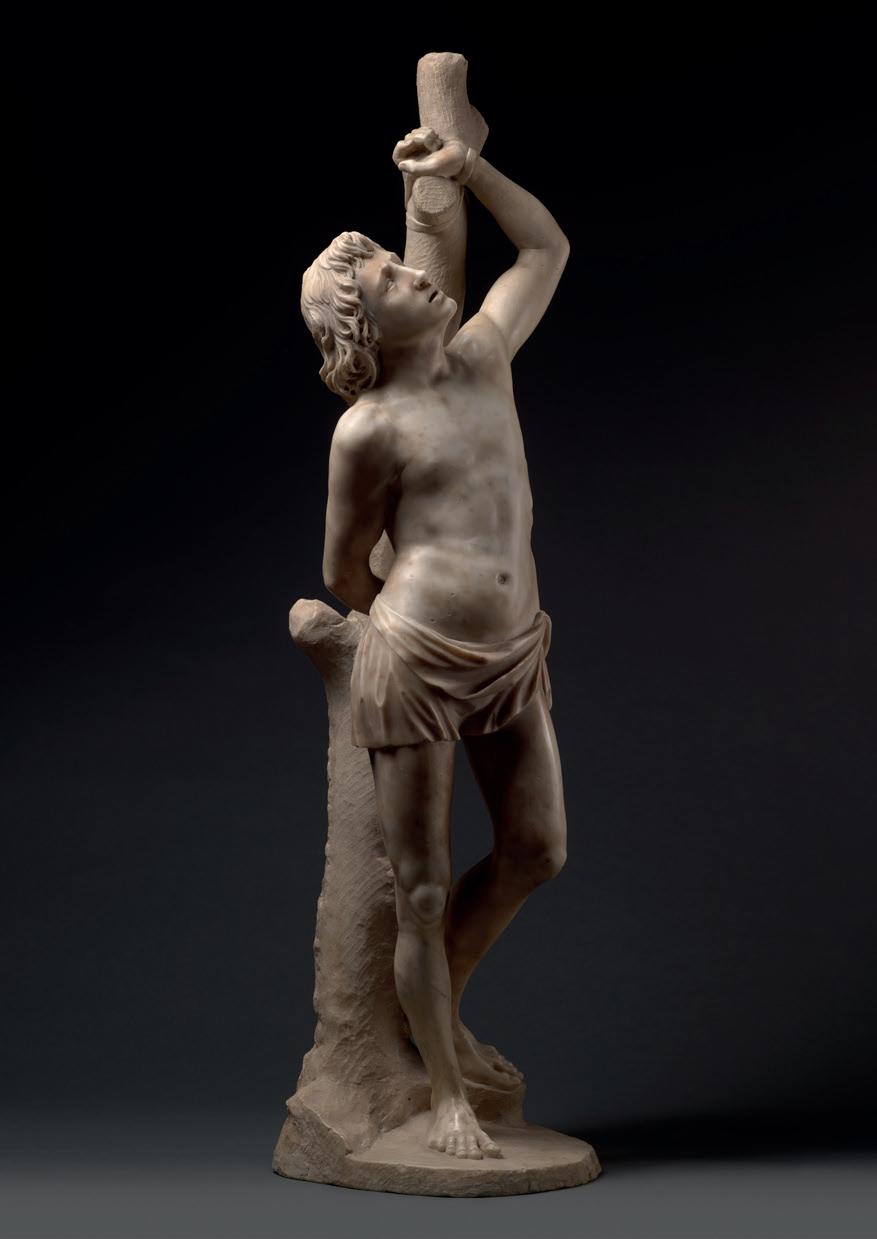
Attributed to BENEDETTO
Pistoia, 1474 - c. 1552, Reggello
Florence, 1470 - 1537, Pietrasanta
Saint Sebastian, c. 1503-04
Marble
108 × 34 × 30 cm. (42 1/3 × 13 1/ 3 × 11 3/4 in.)
Provenance
Private collection.
The figure of Saint Sebastian, slightly over a metre tall, was originally intended to be housed within a niche. This is indicated by the unfinished back of the sculpture, particularly at the lower part of the tree trunk where the Saint is bound. It is plausible that the structure intended to house the statue might have left the top of the stump exposed; it bends above the Saint’s head, and is extensively carved, suggesting that it was meant to be somewhat visible from within the basin that likely topped the shrine. Saint Sebastian is depicted in a precarious pose, his wrists tightly bound by intricate knots to the rough bark of the tree. His emaciated body is constrained in a posture that, with the left arm unnaturally twisted above him, bends his other behind his back, forcing his legs to seek unstable support on the uneven base. His face, characterised by an open mouth and wide eyes, tilts backward as if seeking divine comfort from above. The sculpture lacks arrow holes (similarly there is no slot for securing a halo). This implies that it depicts the moment just before Sebastian’s martyrdom, when the young Praetorian awaited his execution on the Palatine Hill, condemned by Diocletian for his undisclosed Christian faith and his support of Christians.
These details, combined with the figure’s slender adolescent form and the upward gaze of his face, suggest that the marble reflects an iconographic concept proposed by Pietro Perugino in a panel currently held at the Nationalmuseum in Stockholm1, dating from the 1480s. Unlike Perugino’s other works, such as the Saint Sebastian in Cerqueto from 1478 or the version now at the Louvre, circa 14952, this painting depicts a soldier pierced by a single arrow, with his arms bound above his head and his face tilted upward3. It is noteworthy that a study after this painting - which has been very influential given the numerous copies and derivatives it inspired, one of which is in the Fondazione Cavallini Sgarbi - was ultimately attributed to Girolamo Genga in the early sixteenth century and that it features an arrangement of the arms very similar to that of the marble figure, displayed in a chiastic counterpose along the delicate axis of the torso 4. A similar adaptation of the original model can also be seen in a later panel by Bachiacca, now at the Birmingham Museum of Art 5, in which the soldier is depicted, however, already wounded by multiple arrows.
Such an iconographic assumption, originating from the central Italian area and influenced by a distinguished prototype, aligns well with the stylistic evidence observable in the sculpture. As noted by previous scholars 6, this work is deeply rooted in the Genoese context of the early sixteenth century, interacting directly with a series of smaller marble statues of Apostles, Prophets, and Saints along the four sides of a significant monument carved in the city at the beginning of the century: the monumental tomb of Charles I of Orléans, his wife Valentina Visconti, and their sons Charles and Philippe. This project was commissioned by Louis XII of France from a collaborative team of Lombard and Tuscan artists during his 1502 summer stay in Liguria. On 26 August, the King celebrated his first triumphal entry into Genoa, a city newly subjected to French control following the capture of Milan from the Sforzas 7. Initially intended for the Parisian Church of the Celestines, the tomb was later reassembled around 1816-17 in the Basilica of Saint-Denis, following its reception in fragmentary condition at the Musée des Monuments Français, where it was preserved from revolutionary iconoclasm by Alexandre Lenoir. Today, it remains in the small Saint-Michel chapel, albeit arranged in a configuration that does not completely replicate its original design and lacks some elements from its initial setup.
The commission for the tomb was delegated by Louis XII to a group comprising Michele D’Aria and Girolamo Viscardi, artists originally from Lombardy, as well as Benedetto da Rovezzano and Donato Benti, Tuscans who had previously worked in Genoa on the monumental cantoria at the Church of Santo Stefano, erected in 1499 on the tribune wall to the left of the main altar (now relocated to the counter-façade due to subsequent alterations). Although the contract signed on 29 August 1502 by the Genoese notary Urbano Granello lacks detailed specifications regarding the division of labour8, recent studies have discerned two distinct groups of figures, each corresponding to the artistic pairs involved in the project. Given their backgrounds and habitual working methods, it is likely that these artists collaborated closely on the marbles for the tomb9 Within such a division, the statue of Saint Sebastian draws interesting comparisons,
particularly with the statuettes attributable to Benedetto da Rovezzano and Donato Benti. Most striking is the comparison with the eponymous Saint , which seems conceived in an analogous mechanical manner and shares similar features with the grander piece, including an emaciated and delicate physiognomy, comparably articulated shoulders, and a pronounced belly with a deeply recessed navel. The approach to the bindings further echoes this symmetry, employing flat, thick straps wound into dishevelled knots. Similarly, the articulation of the feet exhibits a close concordance; not only is the modelling of their backs and phalanges identical, but their placement on the pedestals also follows a consistent pattern.
The treatment of the hair bears a strong resemblance to that seen in the Saint John from the Orléans tomb, also attributable to Benedetto and Donato, with dense locks gathered into a damp tuft on the forehead and arranged in sinuous coils around the temples and nape. As in the figures of the Baptist and the Saint Peter , Saint Sebastian exhibits a distinguished profile, with elevated cheekbones, gracefully arched eyebrows, and eyes defined by meticulously incised pupils with glossy irises.
The marble finds parallels in other Genoese works produced by the Rovezzano-Benti partnership. It shares elements with the above mentioned cantoria in Santo Stefano, especially a relief featuring a shepherd set against a pastoral backdrop; he has the same delicate complexion, precise features, and filamentous hair as the Roman martyr 10. It also shares qualities with their later Ligurian venture, the tomb of Ibleto Fieschi in the cathedral, completed circa 1502-03. This included, in addition to the gisant of the prelate, a lunette featuring the Virgin and Child with Angels and sculptures of Saint Fructuosus and Saint Eulogius (in addition to a Saint Augurius , whose current location is unknown). 11 The Saint Sebastian appears most similar to the refined Saint Fructuosus and to the angel in the lunette at right in terms of physiognomical and anatomical rendering, due to the style of the hair, and overall figural conception; the bishop’s garments, with their deep, elongated folds, also echo the knotting at the side of the Praetorian, which gathers the creased fabric covering his modesty.
Conversely, the drapery of the short perizoma, which also follows a regular cut common to sculptures created by the two artists in collaboration, features gathers and a crescentshaped fold that hangs vertically around the abdomen; these indicate a progression towards the style of Benedetto's later works, particularly his figures from the crowded reliefs of the monument to Giovanni Gualberto, to which he dedicated himself upon his return to Florence in 150512 For this reason, Saint Sebastian should be dated to the final phase of the Genoese partnership between Rovezzano and Donato Benti, around 1503-04. It emerges as the extraordinary result of their joint effort on the tomb of the Dukes of Orléans, during which their artistic expressions fused into an effective, albeit unembellished, koiné, aligned with the ‘classicism without classics’ of late-fifteenth century Florence, in a rugged interpretation filled with formal contractions and expressive starkness. Later on this koiné would clash with the exquisite developments of the maniera moderna, set against a backdrop that would be transformed by Michelangelo’s monumentalism and the heroic inspiration of his works.
Tommaso MozzatiNotes
1 Inv. NM 2703.
2 Inv. RF 957.
3 On the Saint Sebastian of Stockholm, see Italian Paintings, Three Centuries of Collecting, I, S. Norlander Eliasson, D. Prytz, J. Eriksson, S. Ekman, eds., Nationalmuseum, Stockholm, 2015, pp. 313-16, no. 136.
4 L. Pirazzi in Raffaello e gli amici di Urbino, B. Agosti, S. Ginzburg, eds., exhibition catalogue (Galleria Nazionale delle Marche, Urbino, 3 October 2019 – 19 January 2020), Florence, 2019, pp. 138-39, cat. no. II.8.
5 Inv. AFI.7.2001.
6 Pandolfini-Casa d’aste, Florence, Oggetti d’arte e sculture, 30 June 2020, lot 111.
7 On the tomb, see T. Mozzati, M. Zurla, “Alcune novità sulle sculture della Cattedrale di Genova: Benedetto da Rovezzano, Donato Benti e la famiglia Fieschi”, in Nuovi Studi, Trento, no. 20, 2014, pp. 33-68; T. Mozzati, “‘Patres patris patriae’: le tombeau des ducs d’Orléans à Saint-Denis”, in La France et l’Europe autour de 1500: croisements et échanges artistiques, G. Bresc-Bautier, T. Crépin-Leblond, E. TaburetDelahaye, eds., conference proceedings (École du LouvreThermes et Hôtel de Cluny, Paris; Musée national de la Renaissance, Ecouen, 9 - 11 December 2010), Paris, 2015, pp. 91-106; M. Zurla, La scultura a Genova tra XV e XVI secolo. Artisti, cantieri e committenti, 2 vols., Ph.D. diss., Università di Trento, 2012-14, I, pp. 275-91.
8 See F. Alizeri, Notizie dei professori del Disegno in Liguria dalle origini al secolo XVI, 6 vols., Genoa, 1870-1880, IV, 1876, pp. 286-90 note 1; H. von Tschudi, “Le tombeau des ducs d’Orléans à St-Denis”, in Gazette archéologique, X, 1885, pp. 93-98.
9 See Mozzati, Zurla, in Nuovi Studi, 2014, pp. 42-47; Zurla, La scultura a Genova, 2012-14, I, pp. 284-89.
10 See G. Odicini, L’abbazia di Santo Stefano a Genova. 1000 anni dalla ricostruzione a oggi, Genoa, 1974, pp. 103-05, 135; Zurla, La scultura a Genova, 2012-14, I, pp. 151-62.
11 See Mozzati, Zurla, in Nuovi Studi, 2014.
12 See N. Lepri, A. Palesati, “Intorno all’ ‘Archa’ di S. Giovanni Gualberto”, in Memorie domenicane, Florence and Pistoia, vol. XXXIII, 2002, pp. 227-66.

Rome, c. 1551 - 1599
The Creation of Eve, c. 1580
White marble relief
44 × 64.5 × 4 cm. (17 3/8 × 25 3/8 × 11/2 in.)
Provenance
Private collection.
Literature
A. Parronchi, “Alcuni inediti”, in Pierino da Vinci, M. Cianchi, ed., conference proceedings (Biblioteca Leonardiana, Vinci, 26 May 1990), Florence, 1995, pp. 31-34, in particular p. 32 (as “Collaborator of Pierino da Vinci”).
L. Principi, “Un rilievo di Pietro Paolo Olivieri con la Creazione di Eva e appunti sul leonardismo a Roma alla fine del Cinquecento”, in Commentari d'arte, Rome, vol. XX, no. 58-59, 2014, pp. 61-77 (as “Pietro Paolo Olivieri”).
T. Farina, “Pietro Paolo Olivieri”, in G. Baglione, Le vite de’ pittori, scultori e architetti (Roma 1642), con commenti e apparati critici, B. Agosti, P. Tosini, eds., 2 vols., Rome, 2023, vol. I, p. 221 (as “Pietro Paolo Olivieri”).
Attributed to a collaborator of Pierino da Vinci (1529 – 1553) by Alessandro Parronchi, who first published it in 1996 when it was still in a Florentine private collection1, this relief of The Creation of Eve can be assigned firmly to the hand of Pietro Paolo Olivieri, a sculptor active in latesixteenth century Rome2.
This relief compares well to a signed work by Olivieri, a marble roundel relief representing Saint John the Baptist in the Desert (1585-90), conserved in Palazzo Madama, Turin3. This improbable desert is full of animals and luxurious vegetation, carved or engraved with painstaking care, as if it were the work of a goldsmith. Also reminiscent of a goldsmith’s practice is the engraved design with which certain details, such as the trees, are indicated.
There are, of course, evident differences: the roundel is made from a larger piece of marble and is composed of many different planes, whereas the smaller Creation of Eve is essentially a stiacciato work, or low relief. Consequently, in the former the figures appear more three-dimensional – and are partly carved in the round – which is not the case in the latter. Nevertheless, in both sculptures the scenery is conceived in the same way. There is an atmospheric sense of perspective, which requires that the viewer observe each work from a relatively low point of view in order for them to acquire spatial depth. Similar, too, is the mood of each work. The sculptor was driven by a veritable horror vacui, and he has filled the surface with elements from a rich repertoire of plants and animals. Olivieri loves to describe nature in all its facets with a narrative sense brilliantly combined with touches of humour (such as the monkey looking at Saint John or the unicorn behind Eve), and he exploits the allegorical meaning of the animals and plants he portrays in a playful relation to one another, such as the pairs of male and female animals of The Creation , which reappear in this roundel as metaphors for fertility (for instance the geese and the deer). Certain details appear in an almost identical fashion in both works. These include, for instance, the representation of the riverbanks and water, the way the tree trunks are enhanced by means of engraved lines, and the series of animals and plants designed in precisely the same manner. We can compare the rabbit beneath Adam with that beneath Saint John; the deer (in low relief in our work, more three-dimensional in the Turin
relief); and the swimming geese (engraved in Turin, in relief in The Creation ).
If one were to doubt the identity of the creator of these two works, one look at the way the plants are represented would suffice to convince us of the contrary: they are engraved in almost identical patterns that are, of course, again more plastic in the larger sculpture. There are also similarities between the two marbles in the design of the figures’ drapery and the anatomy of the lower limbs, in particular the feet of God Father and those of Saint John the Baptist. Unfortunately, nothing is known about the origins of the Turin relief. It is possible that it represented a gift from Sixtus V to Carlo Emanuele I, but more likely it was a gift sent by the artist in the hope of obtaining a place at court, as is suggested by the signature ‘car(olo) ∙ eman/velli ∙ duci ∙ / sabavdiæ ∙ / p(etrus) ∙ pav(lus) olive/rivs ∙ roma/nvs ∙ d(onum) ∙ d(edit) ∙’, which is engraved in Roman capitals on the open book at the feet of Saint John in red and golden letters. With reference to the composition of The Creation of Eve, it is important to point out that the source for the sculpture can be found in a print by Jean Mignon datable to around 1546 and taken from a lost drawing by Luca Penni, made at the time of his work on the Fontainebleau project begun in the late 1530s4. The reception of this model and the attention paid by Olivieri to the artists of Raphael’s Loggie, and in particular to Giovan Francesco Penni, Luca’s brother5, thus confirms the inspiration of Leonardo and Fontainebleau on the work and our artist.
There is also an interesting drawing of the relief in Turin by Olivieri in Windsor Castle, already attributed to Olivieri himself but to be considered, in my opinion, a graphic trial piece, probably d’après, and possibly attributable to Giovanni Battista Castello, known as Il Genovese (circa 1549 –1639)6 Furthermore, in the Museo di Sant’Agostino in Genoa, there is a relief originating from the destruction of the local Via dei Servi, depicting a vigorous, penitent Saint Jerome, which displays stylistic features, also in the stiacciato treatment, similar to those of The Creation of Eve which suggest that it is by the same hand7.
A refined and learned artist, Olivieri – a Roman by birth – dedicated around 1574 a text to Guglielmo Della Porta, which implies he received his training in this Lombard sculptor’s workshop8 He figures among the founding members of the
Accademia dei Virtuosi del Pantheon in 1574 and three years later is documented as a member of the Accademia di San Luca9. The earliest literary source on his life and work is a vita by Giovanni Baglione10. Olivieri’s first known work is a marble Cleopatra (signed and dated in a Greek inscription recording that he carved it in 1574, when he was 23 years old). Formerly in the collection of Queen Christina of Sweden, it is today in the Palazzo Corsini, Rome11. This statue offers unmistakeable proof that the sculptor knew and appreciated the style of Baccio Bandinelli, whose bronze Cleopatra, now in the Bargello, Florence, Olivieri’s figure recalls12. Two years later, in 1576, he was commissioned to create a seated marble statue of Pope Gregory XIII destined for the Palazzo Senatorio in Campidoglio and today in Santa Maria in Aracoeli13. This work is reminiscent of the style of the Florentine sculptor Francesco da Sangallo (in the virtuosity of its carving) and that of Guglielmo della Porta (in its structure), the most important sculptor in midsixteenth century Rome. More Florentine influence is apparent in Olivieri’s next work, the Sepulchral monument to Gregory XI (Santa Francesca Romana [Santa Maria Nuova], Rome), executed between 1584 and 158914. Its architectonic structure is inspired by Florentine prototypes and the two lateral statues of Faith and Prudence again clearly evoke Bandinelli. The large relief that dominates the centre of the monument and represents The Roman Entry of Gregory XI on his Return from Avignon in 1377 is – in contrast – markedly neo-Quattrocentesque in its aspect, and displays an attention to narrative that has been rightly associated with the work of Flemish Mannerist painters active in Rome.
Olivieri’s central role in late Cinquecento Rome is testified to by his involvement in the major building sites (he was also an architect) and sculptural commissions promoted by Sixtus V, and in particular the Sistine Chapel in Santa Maria Maggiore. For this complex, Olivieri carved the statue of Saint Anthony of Padua (1587-88)15. Moreover, together with Prospero Bresciano, Leonardo Sormani, and Flaminio Vacca, he collaborated in the sculptural decoration of the Fontana dell’Acqua Felice, or del Mosè (circa 1588), designed by Domenico Fontana16. Olivieri also received commissions from important aristocratic families, such as the Mattei, for whom he carved the recently rediscovered Andromeda17, and the Caetani, for whom he worked
on their chapel in Santa Pudenziana, decorated with a virtuoso relief of The Adoration of the Magi (commissioned in 1596)18. In the last years of his life, he worked on the altar of the Holy Sacrament in San Giovanni in Laterano, commissioned by Clement VIII on the occasion of the 1600 Jubilee. For this altar he carved the statue of Elijah and the relief of Elijah with the Angel, which were both finished after Olivieri’s death by his favourite pupil, Camillo Mariani19
Olivieri probably also worked outside Rome. This is suggested by the above-mentioned roundel in Turin; by an apparently lost Death of Caesar, a marble relief formerly in the Chigi-Farnese villa in the outskirts of Siena20: and by two tombstones of an unidentified couple found in Lyon and today in the Metropolitan Museum of Art in New York21.
In the light of these comparisons, Parronchi’s attribution of the relief to a collaborator of Pierino da Vinci appears obsolete. Nevertheless, by attributing The Creation to the circle of Leonardo’s nephew and follower, Parronchi rightly recognised the work’s inherent Leonardesque character. The two horses are unmistakable references to Leonardo and remind us of the painting depicting The Conversion of Paul the Apostle (circa 1525, Victoria and Albert Museum, London, inv. 1562-1904) by Giovanfrancesco Rustici, a close follower and collaborator of Leonardo. A similar detail appears in this work. Nevertheless, a revival of Leonardo’s spirit recurs in other works by Olivieri, such as the relief in the Monument to Gregory XI and the Caetani Adoration of the Magi, and it was not an isolated phenomenon in Roman late Cinquecento sculpture. The influence of Leonardo on sculptors active in Rome after Michelangelo’s death has not been given any attention by art historical writing, but it can be traced, for instance, in the relief representing The works of Justice of Sixtus V in the Sistine Chapel in Santa Maria Maggiore, carved by Nicolas Pippi d’Arras (1586-89), a neglected but interesting Flemish sculptor active for many years in Rome, and in the supple twisting of the body, and the thick, vaporous hair of Ambrogio Buonvicino’s Angels in the Tabernacle of the Holy Sacrament in San Giovanni in Laterano (1597-99)22.
On the other hand, in his composition dedicated to Della Porta, Olivieri also referred to and praised Leonardo da Vinci, Baccio Bandinelli and Francesco da Sangallo, both of whom were influenced by Leonardo’s language23
The relief can be dated to the early years of Olivieri’s activity, when his work was still infused with Florentine influences. In my opinion it precedes the Sepulchre of Gregory XI (1584-89) and should be dated to the beginning of the 1580s24.
Lorenzo PrincipiNotes
1 A. Parronchi, “Alcuni inediti”, in Pierino da Vinci, M. Cianchi, ed., conference proceedings (Biblioteca Leonardiana, Vinci, 26 May 1990), Florence, 1995, pp. 31-34, in particular p. 32.
2 The relief has already been attributed to Olivieri by the present writer; see L. Principi, “Un rilievo di Pietro Paolo Olivieri con la Creazione di Eva e appunti sul leonardismo a Roma alla fine del Cinquecento”, in Commentari d’arte, vol. XX, no. 58-59, Rome, 2014, pp. 61-77.
3 Inv. 164, no. V.70; 76 x 95 x 13 cm.; see Principi, in Commentari d’arte, 2014, pp. 61-62; S. Baiocco, in Le meraviglie del mondo. Le collezioni di Carlo Emanuele I di Savoia, A.M. Bava, E. Pagella, eds., exhibition catalogue (Musei Reali, Turin, 16 December - 2 April 2017), Genoa, 2016, p. 275 no. 155, illustrated p. 300.
4 Principi, in Commentari d’arte, 2014, pp. 62, 64, fig. 3.
5 Ibid., pp. 68, 77 note 63.
6 Inv. RCIN 905061; see Principi, in Commentari d’arte, 2014, pp. 61, 64, fig. 4.
7 Ibid., pp. 64, 66, 70, figs. 18, 20.
8 Ibid., pp. 64, 66, 68, 71.
9 Ibid., pp. 64, 76 note 28.
10 G. Baglione, Le vite de’ pittori, scultori et architetti, dal pontificato di Gregorio XIII del 1572 in fino a’ tempi di papa Urbano Ottavo nel 1642, J. Hess, H. Röttgen, eds., 3 vols., Città del Vaticano, 1995, I, pp. 76-77; III, pp. 577-82; G. Baglione, Le vite de’ pittori, scultori e architetti (Roma 1642), con commenti e apparati critici, B. Agosti, P. Tosini, eds., 2 vols., Rome, 2023, I, pp. 221-23 (ed. by T. Farina).
11 E. Borsellino, “Una nuova acquisizione sulla collezione Corsini: la ‘Cleopatra’ di Pietro Paolo Olivieri”, in Paragone, XL, no. 17 (475), Florence, 1989, pp. 3-14 with plates 1-5; E. Borsellino, “Cristina di Svezia collezionista”, in Ricerche di Storia dell’arte, 54, Rome, 1994, pp. 4-16, in particular pp. 1314; E. Borsellino, “Le sculture della Galleria Corsini di Roma: collezionismo e arredo”, in I Corsini tra Firenze e Roma, E. Kieven, S. Prosperi Valenti Rodinò, eds., conference proceedings (Palazzo Poli, Rome, 27 - 28 January 2005), Cinisello Balsamo, 2013, pp. 107-25, in particular p. 110; Principi, in Commentari d’arte, 2014, pp. 62, 69 fig. 15; E. Borsellino, La collezione Corsini di Roma dalle origini alla donazione allo Stato Italiano. Dipinti e sculture, 2 vols., Rome, 2017, I Parte. La collezione, pp. 57, 376 note 1; 398-99, 585.
12 Inv. 354 Bronzi; c. 1530; see Borsellino, in Paragone, 1989, pp. 4-5.
13 E. Lamouche, “Olivieri, Pietro Paolo” in Dizionario biografico degli Italiani, no. 79, Rome, 2013, pp. 261-64, in particular p. 262; T. Farina, “Pietro Paolo Olivieri e la celebrazione di Gregorio XIII in due commissioni del Popolo Romano”, in Gregorio XIII Boncompagni. Arte dei moderni e immagini venerabili nei cantieri della nuova Ecclesia, V. Balzarotti, B. Hermanin, eds., conference proceedings
(Galleria Corsini, Rome, 25 - 26 October 2018), Rome, 2020, pp. 159-68.
14 Lamouche, in Dizionario biografico, 2013, p. 262; Farina, in Gregorio XIII Boncompagni, 2020, pp. 159-68.
15 Baglione, Le vite de’ pittori, scultori e architetti, 2023, I, p. 222 (with previous literature).
16 S.F. Ostrow, “The discourse of failure in seventeenthcentury Rome: Prospero Bresciano’s Moses”, in The Art Bulletin, LXXXVIII/2, New York, 2006, pp. 267-91, in particular p. 286 notes 4-5.
17 Christie’s, New York, The Exceptional Sale, 13 April 2016, lot 7.
18 Lamouche, in Dizionario biografico, 2013, p. 263; Principi, in Commentari d’arte, 2014, p. 62.
19 C.D. Dickerson III, Bernini and Before: modeled sculpture in Rome, ca. 1600-25, Ph.D. diss., New York University, 2006, pp. 145-48; Lamouche, in Dizionario biografico, 2013, p. 263.
20 E. Romagnoli, Cenni storico-artistici di Siena e suoi suburbi; riveduti e nuovamente pubblicati con un breve discorso sulla vita e gli scritti dell'autore, Siena, 1840, pp. 9899; L. Bonelli, G. Fattorini, “Per pascere gli occhi e l’anima: le predilezioni estetiche dei proprietari di ville in età moderna”, in Vita in villa nel Senese: dimore, giardini e fattorie, L. Bonelli, E. Pacini, eds., Pisa, 2000, pp. 131-87, in particular p. 140.
21 B. Dean, “Two memorial effigies of the late XVI century” in Bulletin of the Metropolitan Museum of Art, VIII/10, New York, 1913, pp. 218-20; Principi, in Commentari d’arte, 2014, pp. 64, 75 note 10.
22 Ibid., pp. 66, 68.
23 Ibid
24 Ibid., p. 62.
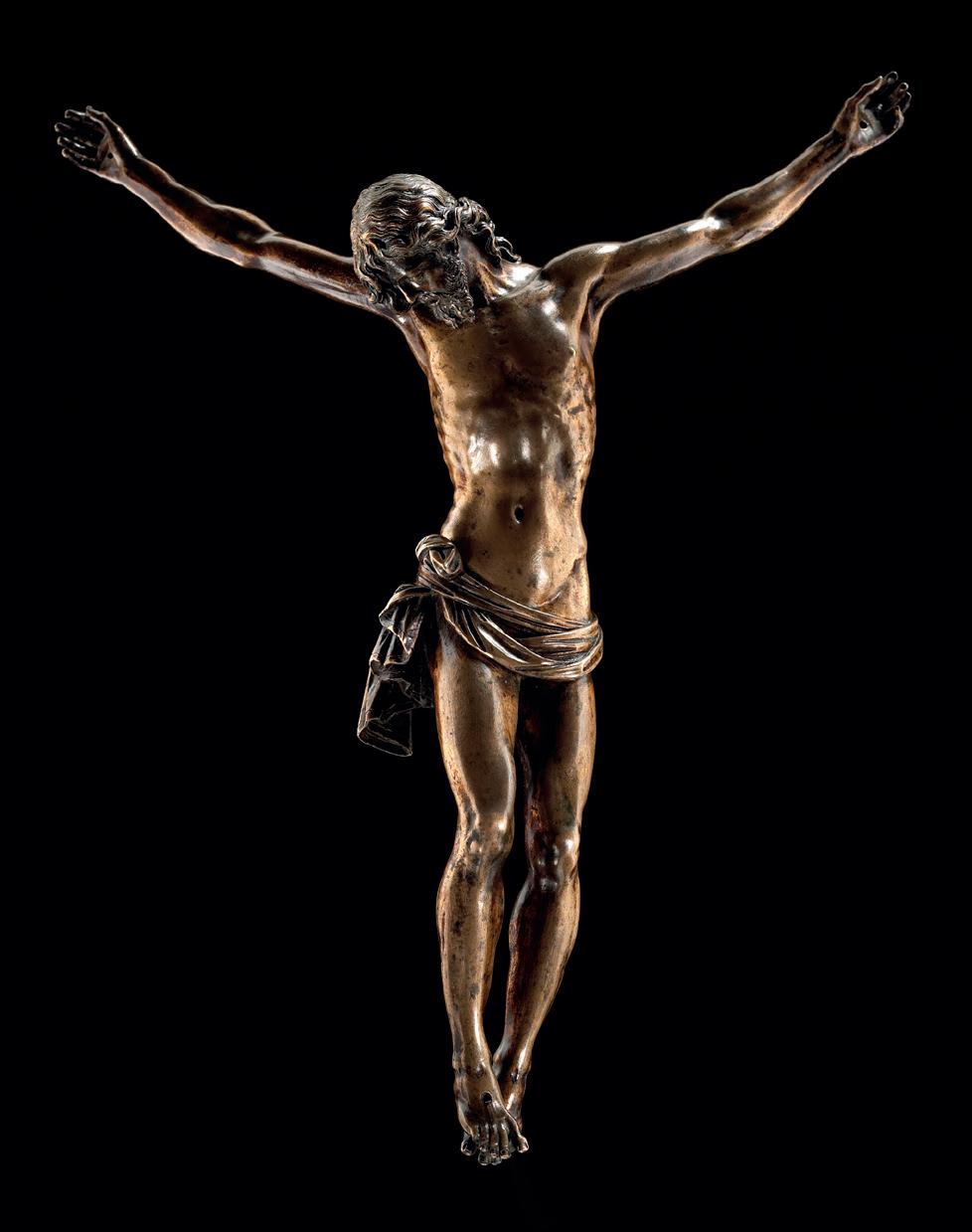
Florence, 1558 - 1624
Cristo Morto, after a model by Giambologna of c. 1588, cast c. 1590-1616
Bronze
31.8 × 24.6 × 5 cm. (12 1/2 × 9 5/8 × 2 in.)
Provenance
Private collection.
The sculpture’s precious qualities and quiet contemplative mood reflect Italian Renaissance traditions of religious devotion. As the Man of Sorrows, Christ displays his mortal wounds to symbolise the perpetual nature of his living sacrifice.
The theme of the Crucified Christ was an important one in Counter-Reformation Italy, and Giambologna returned to it several times during the course of his career. The first documentary source for his having executed such a bronze is in a letter written by Simone Fortuna to the Duke of Urbino in 1583, when the former expresses his desire to acquire a small crucifix by the sculptor1. At least two exemplars were cast for the master around 1588 in Florence, one as a gift to the convent of Santa Maria degli Angiolini, the other for the Salviati Chapel in the Dominican church of San Marco. Both are larger than our replica (respectively, 46.8 and 45.8 cm. high).
As its scale indicates, this Cristo Morto was intended for private devotion. Its sunken head highlighting the tense tendrils of the neck, the torso slightly bent in the direction of the now shut eyes’ gaze, the turned legs and raised right foot, all result in a gentle contrapposto, highlighted by the vigorously modelled perizonium. The impression is one of ‘fragile beauty and calm dignity [that] comes closest in spirit to [the] earlier large-scale depictions’ of Renaissance Florence2. The small group to which this example belongs includes at least five other examples: a gilt-bronze version in the Hill collection, New York3, a second in the Art Gallery of Ontario, Toronto4, another formerly in the Johnson collection; a fourth in the Liebieghaus in Frankfurt5, and a fifth in a private collection. All these casts are firmly attributed to Antonio Susini.
Born in 1558, Antonio Susini trained as a goldsmith, and was introduced to Giambologna by Jacopo Salviati in 1580. He soon became a key figure in the Florentine master’s workshop, where he was largely responsible for the production of small-scale bronzes. Their collaboration continued even after Susini set up his own atelier in 1600, to which a foundry was added shortly afterward. His repute for the treatment of the subject of the Crucifixion – with variations on the models that had been introduced by Giambologna – was such that, as late as 1622, three years before his death, he presented a choice of ten Christs, five Cristo Morto
and five Cristo Vivo, to Ferdinand I Gonzaga, then Duke of Mantua.
The refinement of this cast, exemplified in details like the sharply-defined toenails, are evidence of Susini’s goldsmith’s approach to bronze sculpture. Susini employed his master’s models throughout his career, and crucifixes were an important element of his workshop output. Baldinucci records that, as an independent sculptor, Susini kept different versions of them to show buyers who visited his studio. This cast shows the sharpness of cast-in detail and precise tooling, with extensive filing across the surface, that singles out Susini’s most celebrated works.
Notes
1 See C. Avery, Giambologna. The Complete Sculpture, Oxford, 1987, pp. 199-200.
2 D. Allen, Renaissance & Baroque Bronzes from the Hill Collection, P. Wengraf, ed., London, 2014, pp. 158-63.
3 Ibid., pp. 158-63.
4 See Giambologna: Sculptor to the Medici, C. Avery, A. Radcliffe, eds., exhibition catalogue (Royal Scottish Museum, Edinburgh, 19 August - 10 September 1978, Victoria & Albert Museum, London, 5 October - 16 November 1978, Kunsthistorisches Museum, Vienna, 2 December 1978 - 28 January 1979), London, 1978, no. 111.
5 Inv. no. 1523.
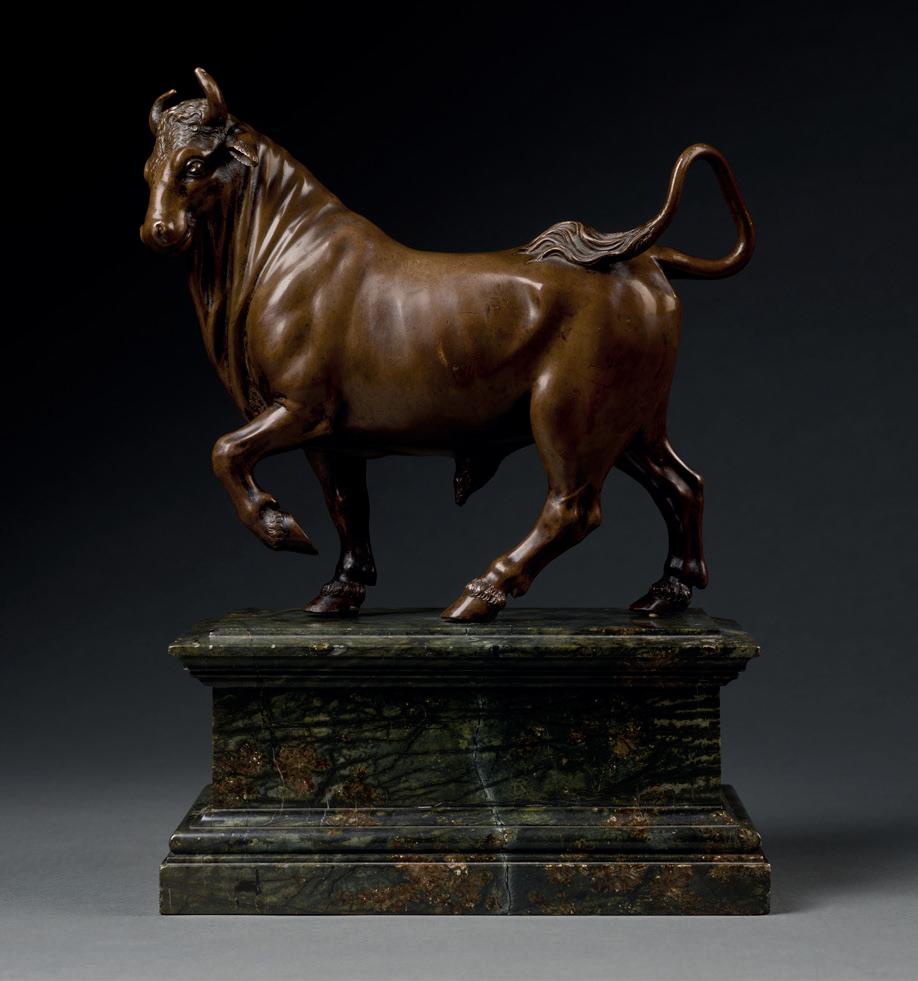
Florence, 1585 - 1653
A pacing bull, c. 1650
Bronze
23.3 × 26.8 × 8.5 cm. (9 1/8 × 10 1/2 × 3 3/8 in.)
Provenance
Private collection.
This exceptional cast of a pacing bull bears close comparison with other bronzes by the Florentine sculptor Giovanni Francesco Susini. Bulls had been revered since antiquity for their strength and vigour, and the popular model of the pacing bull was originally conceived by Giambologna as a pendant to a pacing horse. Giambologna’s leading assistant Antonio Susini, Giovanni Francesco’s uncle, is believed to have remodelled Giambologna’s bull, and it is this model which the current bronze closely follows.
Giovanni Francesco Susini began his studies in the workshop of his uncle Antonio, the most talented assistant of the Medici court sculptor Giambologna. During his own training, Giovanni was hired as an apprentice in Giambologna’s workshop, and in 1624 he travelled to Rome, where he had the opportunity to study newly unearthed antiquities. Although he was engaged in major public commissions for civic and religious sculptures, and carried out work for private patrons including the Medici, Susini remains best known as a caster of bronze. After the death of his uncle, Giovanni took over the management of the family bronze foundry. Filippo Baldinucci, Giambologna’s early biographer, recorded that Giovanni and Antonio Susini retained Giambologna’s models after the master’s death in 1608 and continued to cast from them. As a result of this and the quality of its output, the Susini workshop was continually employed by the Medici family.
Giambologna’s sculpture of a pacing bull after the antique is documented as early as the late sixteenth century. In 1573, Giambologna is recorded as having been paid by Jacopo di Alamanno Salviati, a cousin of Grand Duke Cosimo I, for a bronze bull 1 , while a version appears in 1588 in a posthumous inventory of the collection of Francesco de’ Medici, Grand Duke of Tuscany, who had died the previous year 2 . Further mention of Giambologna’s model appears in an inventory of the collection of Benedetto Gondi, from 1609: ‘un toro di cera di mano del detto [Giambologna]’. This version is referred to as the type A model, and among the finest extant casts are those in the Museo Nazionale del Bargello in Florence, an exMedici piece (inv. no. 287 3 ) and that in the Hill collection in New York 4 . It features a stockier,
more robust animal with a more prominent dewlap in comparison to Susini’s version. Using this type A model as a template while working in Giambologna’s studio, Antonio Susini then created a second sculpture, known by scholars as the type B model. The Type B composition elaborates on Giambologna’s invention, stylising its massive girth into a sleeker anatomy. The more diminutive muzzle is held erect, the dewlap is lighter and less fleshy, and the hide between the horns is given an exquisite graphic rendering as opposed to the Type A bull’s more sculptural treatment. Both models would have been inherited by Giovanni when he took over the Susini workshop in 1624 and were cast by him, as well as by another artist, Pietro Tacca.
The present variant can be traced back to a statuette, now in the Galleria Colonna, Rome, that was commissioned in 1628 by Jacopo di Lorenzo Salviati from Giovanni Francesco Susini. The present bronze is comparable in its outstanding quality to the Colonna statuette. The cast displays the fine chasing, delicate tool marks and rich patina consistent with the work of Giovanni Francesco Susini. In its finishing it is almost identical to a version cast by Giovanni Francesco Susini which was acquired in 1696 by Prince Johann Adam Andreas I von Liechtenstein and which remains in the Princely collections 5 . Susini appears to have made slight variations to the finish of each cast; for example, in the Liechtenstein cast the bull’s ears are bare, whereas in our cast the sculptor has added finelydetailed strands of hair to the edges of the ears. On the present bronze the bull’s sheath has been extended and is more extensively tooled.
Other known casts include a bronze attributed to Giovanni Francesco Susini sold at Sotheby’s 6 and one in the Barber Institute of Fine Arts, University of Birmingham, attributed to Antonio and Giovanni Francesco Susini. The facture and finish of the present bronze are similar to the Lion Attacking a Horse and Lion Attacking a Bull attributed to Antonio or Giovanni Francesco Susini in The Getty Museum, California 7 .
It is worth noting that one early visual record of a cast appears in Willem van Haecht’s 1628 painting depicting the kunstkammer of the
Antwerp-based collector Cornelis van der Geest. A bronze likely based on this composition was also recorded in the 1652 inventory of Jan van Meurs’s collection in Antwerp.
Notes
1 H. Keutner, Galleria Colonna in Roma, E. Safarik, ed., Rome, 1990, p. 301.
2 ‘uno toro di bronzo di Giobologna di braccia 0/2 incirca’; see P. Barocchi, G. Gaeta Bertelà, Collezionismo mediceo e storia artistica, Florence, 2002, I, p. 330.
3 Giambologna 1529 – 1608: Sculptor to the Medici, C. Avery, A. Radcliffe, eds., exhibition catalogue (Royal Scottish Museum, Edinburgh, 19 August - 10 September 1978, Victoria & Albert Museum, London, 5 October16 November 1978, Kunsthistorisches Museum, Vienna, 2 December 1978 - 28 January 1979), London, 1978, p. 192, no. 177.
4 P. Wengraf, Renaissance & Baroque Bronzes from the Hill Collection, London, 2014, pp. 118-24, no. 6.
5 Inv. SK553.
6 Anon. Sale; Sotheby’s, New York, 29 January 2009, lot 345.
7 Inv. 94.SB.11.1-2.

Naples, 1598 - 1680, Rome
Matilda of Canossa, c. 1633-37
Bronze
40 × 22 × 10.7 cm. (15 3/4 × 8 5/8 × 4 1/4 in.)
Provenance
Private collection, Netherlands.
Anon. Sale; Marc-Arthur Kohn, Hôtel Drouot, Paris, 13 April 2012, lot 44 (as ‘after a model by Gianlorenzo Bernini’).
Anon. Sale; Sotheby’s, Paris, 14 May 2014, lot 78 (as ‘after a model by Bernini’).
Private collection, acquired from the above sale.
Literature
C. Avery, Bernini. Genius of the Baroque, London, 1997, pp. 76, 280, no. 8, fig. 82.
A. Bacchi, ‘Matilde di Canossa’: un bronzetto di Bernini degli anni Trenta, Milan, 2013, pp. 36-37.
T. Montanari, “Osservazioni su una Matilde in
bronzo di Gian Lorenzo Bernini (nell’epoca della sua riproducibilità telematica)”, in Curiosa Itinera. Scritti per Daniela Gallavotti Cavallero, E. Parlato, ed., Rome, 2015, pp. 321-26.
M.G. Bernardini, Bernini. Catalogo delle sculture, Turin, 2021, vol. II, p. 221.
This small bronze is an example of an important Berninian invention already well known to studies. It is a miniature reproduction of a monumental work by the great sculptor of Baroque Rome, the marble Monument to Matilda of Canossa in the basilica of Saint Peter, commissioned by Urban VIII in 1633 and completed in 1637 with extensive assistance from apprentices and collaborators. The version discussed here was first published by Charles Avery in 1997, when it was discovered in Amsterdam at the Vecht gallery1
It was the leading scholar on Bernini, Rudolf Wittkower, who noted in 1955 that the small bronze of Matilda, already in the collection of the Barberini heirs (today in a private collection), and another example, this one gilded, in Melbourne (National Gallery of Victoria), were not merely replicas of the figure of the countess from the monument in Saint Peter’s, but rather casts from the artist’s model. Wittkower’s hypothesis, later unanimously accepted by scholars, was based on the treatment of the rear and lower parts of the small bronze, which faithfully translate the sketchy appearance of a terracotta2. This characteristic was shared not only by the two small bronzes considered by Wittkower, and already widely known, but also by almost all the others (except one, in a private American collection) that have come to light subsequently, beginning in the 1950s and including the present cast. It is not possible to state with certainty the reasons behind Bernini’s casting of numerous small bronzes depicting Matilda of Canossa, a unique occurrence within his oeuvre, but they were most likely political; perhaps the Barberini wanted to associate their foreign policy with the figure of the countess3. Indeed, two examples, those already cited and discussed by Wittkower, belonged to the Barberini collection. The first, and likely the most important as it was cast under the possible supervision of Bernini himself, today in a private collection, is identifiable with a small bronze mentioned in the post-mortem inventory of the goods of Taddeo Barberini, compiled in 1648-49; in a room of the palace on Via dei Giubbonari, described as: Una statua di bronzo che tiene un regno in mano con suo piedestallo simile alta pal. 2 in piede4 .
The dimensions, and especially the ‘symbol of the realm’ she holds, leave no doubt that she can be identified with the Berninian Matilda. In 1649, among the possessions of Taddeo’s brother, Cardinal Francesco Barberini, the cast now in
Melbourne was described as: Una statua di bronzo di Matilde tutta in dorata con un regno in mano [...]5
None of the other small bronzes of Matilda can be traced back to a Barberini inventory or to another from the seventeenth or eighteenth century, but it is very probable that all, or almost all, are datable to the 1630s, close in proximity to the completion of the monument in Saint Peter’s, at a time when Urban VIII was forcefully advancing his foreign policy in the context of the Thirty Years’ War, with the aim of mobilising all the major Catholic powers to defend the Church. Indeed, it is difficult to imagine other reasons that would have led, subsequently, to the casting of replicas of that particular work by Gian Lorenzo, certainly not one of his most known and celebrated.
In 1999, Francesca Bewer listed eleven casts of Matilda, including the one discussed here; some were only mentioned, and, without images, they cannot be usefully compared with the present version6. A small gilded bronze, slightly under 40 cm. (one of the smallest currently known), has subsequently come to light7. Besides the two exBarberini examples, we can look at examples in the Fogg Art Museum at Harvard University in Cambridge, MA; the North Carolina Museum of Art in Raleigh; and the Kunstgewerbe Museum in Berlin8. The most significant differences among all these casts are the varying degrees of finish, which sometimes betrays a greater amount of retouching, fundamentally alien to what seem to have been Gian Lorenzo’s intentions. The marvellous Barberini piece now in a private collection, with the facial features barely indicated, conveys the brevity of Bernini’s original sketch; at the opposite end of the spectrum, in this sense, is the Berlin specimen, polished and lacking vigour.
The sculpture presented here, although not gilded, seems very close to the one in Australia. Although clearly retouched and less sketch-like than the example in a private collection, it is not fastidiously finished like the Berlin work: it is therefore a cast of remarkable quality This view is shared by Tomaso Montanari, who also considers it to be a version ‘created under Bernini’s direct supervision’ and who proposes dating it to the 1630s9. Montanari has also observed that this is the only version that features a knob on top of the papal keys held by the Countess, a detail that
does not appear in the other versions of the bronze Matilda nor in the marble statue in Saint Peter’s, but which Bernini inserts several times in the papal keys in the Baldacchino and the Cattedra. It is, therefore, a significant clue confirming that this sculpture derives directly from Bernini’s model; as Bernini himself was not a bronze caster, those bronze sculptures taken from Bernini’s own models can be considered autograph.
Andrea BacchiNotes
1 C. Avery, Bernini. Genius of the Baroque, London, 1997, pp. 76, 280, no. 8. On the Saint Peter monument see T. Montanari, “Il monumento funebre della contessa Matilde di Canossa”, in La Basilica di San Pietro in Vaticano (Mirabilia Italiae 10), A. Pinelli, ed., 4 vols., Modena, 2000, II, Schede, pp. 707-10.
2 R. Wittkower, Bernini: lo scultore del barocco romano, Milan, 1990, p. 256, no. 33.
3 A. Bacchi, ‘Matilde di Canossa’: un bronzetto di Bernini degli anni Trenta, Milan, 2013, pp. 36-37.
4 M.A. Lavin, Seventeenth Century Barberini Documents and Inventories of Art, New York, 1975, p. 193, no. 112.
5 Ibid., p. 255, no. 968; A. Bacchi, ‘Matilde di Canossa’: un bronzetto di Bernini degli anni Trenta, Milan, 2013, p. 8.
6 F.G. Bewer, “Bronze casts after bozzetti and modelli by Bernini, in Studies in Clay for Projects by Gian Lorenzo Bernini: Theoretical, Technical and Case Studies”, in Harvard University Art Museums bulletin, VI, Cambridge, 1999, pp. 163, 166 note 12.
7 Bacchi, ‘Matilde di Canossa’, 2013, p. 21.
8 For the updated list compiled by Bewer, see Bacchi, ‘Matilde di Canossa’, 2013, pp. 20-21. For the Fogg bronze, and its relationship with a lost terracotta by Bernini, see A. Sigel, I. Wardropper in Bernini: Sculpting in Clay, C.D. Dickerson III, ed., exhibition catalogue (Metropolitan Museum of Art, New York, 3 October 2012 - 6 January 2013), New York, 2012, pp. 132-35, no. 5.
9 T. Montanari, “Osservazioni su una Matilde in bronzo di Gian Lorenzo Bernini (nell’epoca della sua riproducibilità telematica)”, in Curiosa Itinera. Scritti per Daniela Gallavotti Cavallero, E.Parlato, ed., Rome, 2015, pp. 321-26.
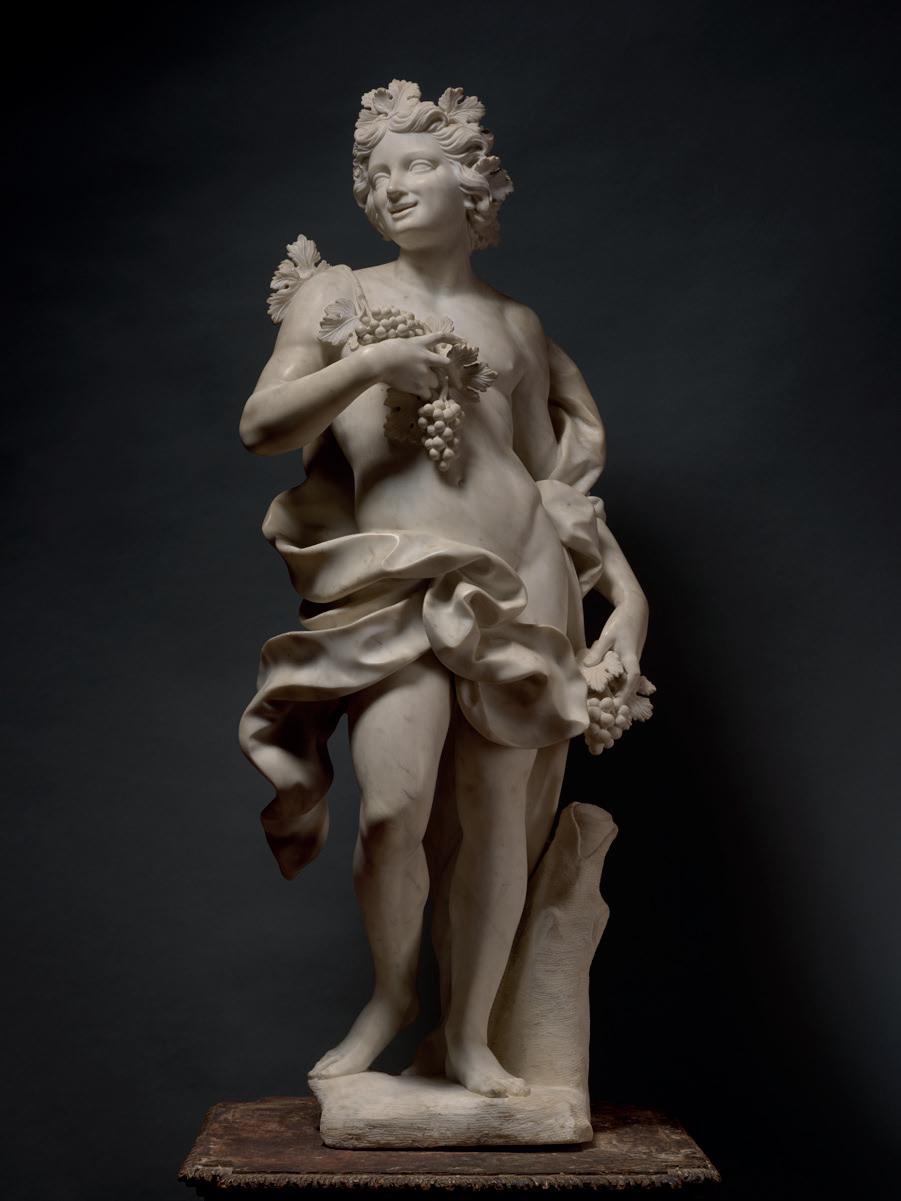
Genoa, 1630 - 1702
Bacchus, c. 1670
Marble
156 × 55 × 40 cm. (61 2/5 × 21 2/3 × 15 3/4 in.)
Provenance
(Probably) commissioned by either Cardinal Leonardo Raggi (1615 – 1687) or his uncle Tommaso Raggi (1595 – 1679), or by another member of the Raggi family, and recorded in Palazzo Raggi, by the mid-eighteenth century until at least the mid-nineteenth century.
Anon. Sale; Palais Galliera, Paris, 22 November 1972, lot 102 (as Guillaume Coustou). Wildenstein, New York.
Literature
(Probably) C.G. Ratti, Storia de’ pittori scultori et architetti liguri e de’ forestieri che in Genova operarono, secondo il manoscritto del 1762, M. Migliorini, ed.,
Genoa, 1997, p. 63.
(Probably) C.G. Ratti, Instruzione di quanto può vedersi di più bello in Genova in pittura, scultura, ed architettura ecc., Genoa, 1780, p. 235.
(Probably) F. Alizeri, Guida artistica per la città di Genova, vol. II, Genoa, 1847, p. 254.
(Probably) P. Rotondi Briasco, Filippo Parodi, Genoa, 1962, p. 104.
This masterful statue of Bacchus appeared in 1972 at an auction in Paris, where it was attributed by the auction house to the French sculptor Guillaume Coustou (16771746). Later, when displayed at the Wildenstein gallery in New York, it was presented as a work by Domenico Parodi (1672 - 1742) 1 . The attribution to the Genoese painter-sculptor was likely inspired by similarities to a cycle of seven mythological statues ( Apollo , Bacchus , Diana , Venus , Ariadne , Adonis , Bacchante ) commissioned from Domenico Parodi (with the collaboration of Francesco Biggi, to whom the majority, if not all, of the physical execution of the sculptures can be attributed) for Prince Eugene of Savoy during the second to third decade of the eighteenth century. These works are still held in the Marmorgalerie of the Lower Belvedere in Vienna 2 . However, this hypothesis, drawn from the undeniable, strong affiliations between the statues’ sculptural volumes and the Genoese Baroque tradition, does not completely convince. It may be necessary to consider that the Bacchus in question exhibits significant Berniniesque elements, features that are considerably less pronounced in the Viennese statues, which possess a more whimsical spirit and are firmly embedded in the eighteenth century aesthetic.
The sculptor of this Bacchus seems to reinterpret, in a more restrained and softened manner, the compositional and stylistic solutions characteristic of the mature and late Bernini. This is evident both in the pose, reminiscent of the Angel with the Scroll on the Ponte Sant’Angelo (1669), in the ecstatic facial expression, and in the dynamic movement of the draperies. To contextualise this Bacchus, a comparison - particularly for the almost neo-Correggesque expression of the face - can be found in a wooden sculpture at the Landesmuseum in Karlsruhe, which is part of the cycle of The Four Seasons. This cycle includes Winter at the Cleveland Art Museum, Autumn, acquired by the Metropolitan Museum of New York in 2018, and Summer, in a private collection, attributed by scholars to the circle of Domenico’s father, Filippo Parodi, the preeminent Genoese sculptor of the late seventeenth century3. Although the drapery of the Bacchus does not immediately recall the exceptionally soft textures and delicate crinkled folds characteristic of the mature and late Parodi, it is feasible to draw
significant comparisons with various of his wooden works and his early marble creations, which date back to the early 1670s4.
Despite sparse documentation regarding the early years of Filippo Parodi’s career, Carlo Giuseppe Ratti recounts two significant periods Parodi spent in Rome: the first around 1660-67, during which Bernini ‘kindly accepted him as a disciple’, and a second in 1672, a year in which Filippo is recorded in the parish of Sant’Andrea delle Fratte. However, pinpointing the exact duration of this latter Roman sojourn proves challenging5, particularly considering that in December of the same year, records show a payment to Parodi in Genoa for work commissioned by the Raggi family6. During these formative years, while transitioning from a woodcarver to a full-fledged sculptor, Parodi was chiefly sponsored by the Genoese patron Sauli, who endeavoured to mould him into the local equivalent of Bernini.
According to Ratti, Parodi’s second Roman stay was entirely financed by Francesco Maria Sauli7, for whom Parodi would later complete the Saint John the Baptist for the basilica of Santa Maria Assunta in Carignano in 16778. The drapery of this statue, with its flowing lines nevertheless rendered in a ‘grand manner’, vigorous and still distant from the almost rocaille refinements of Parodi’s later sculptures, shares significant similarities with that of Bacchus. The Saint John the Baptist emerges as a direct response to earlier statues by Pierre Puget, particularly the Saint Sebastian (1664) and the Blessed Alessandro Sauli (1664-68). These works collectively draw inspiration from the four colossal Bernini statues beneath the Michelangelo-designed dome of Saint Peter’s9. Moreover, the Bacchus discussed here owes a debt to the late 1660s works of Puget, especially evident in the manner in which the drapery encircles the god’s sides, echoing Puget’s Immaculate Conception (1666-70), sculpted for the church of the Albergo dei Poveri10
Prior to the realisation of Saint John the Baptist, Parodi had already experimented with marble: between the end of 1673 and the summer of 1674, he completed his first public commision in this medium, the Madonna of the Rosary. This piece bears stylistic similarities to the Bacchus. Although commissioned by Agostino Franzone, the Madonna did not achieve immediate acclaim, which led to its subsequent relocation to the rural setting
of the church of Santa Caterina in Rossiglione11 In a significant 1988 essay titled ‘A Contradictory Experience: The First Sculptural Production of Parodi’, Lauro Magnani underscored the experimental yet tentative nature of Parodi’s early forays into marble, marking a complex transition from wood to this more demanding material12. By 1677, the magnificent Virgin of Carmel in San Carlo, Genoa, is documented. Her robes, rendered in a more elegantly fluid manner, still echo the language of Parodi’s earlier marble works13 Comparisons with Parodi’s great masterpieces in wood from earlier years might be more significant for our Bacchus. Iconographically and stylistically, this statue aligns closely with Parodi’s most celebrated wood carvings, specifically the ‘Durazzo furnishings’, described by Ratti as ‘the beautiful mirror fashioned like a fountain where Narcissus gazes at himself’, and the four statues representing the Seasons, crafted circa 1667-70 and now housed in Villa Durazzo Faraggiana at Albissola Marina14. The poses and the flow of the draperies in these works show remarkable similarities, as does the meticulous depiction of vine leaves in both the marble and the wooden Bacchus/ Autumn of Albissola. In terms of pose, our Bacchus, while timidly reinterpreting Bernini and Puget, closely mirrors the wooden figure in Albissola. Conversely, the highly expressive and anatomically precise Bacchus currently at the Metropolitan Museum suggests a more mature phase of Parodi’s artistic evolution.
As observed, the stylistic features of this marble suggest an attribution to the young Parodi. Support for this hypothesis is bolstered by an examination of historical sources. Among the works attributed to Parodi, as catalogued by Carlo Giuseppe Ratti and not yet located, is a Bacchus that in the mid-eighteenth century was in Palazzo Raggi in Genoa. This piece may have been commissioned either directly or indirectly by one of two prominent patrons of the arts within the Raggi family: Cardinal Leonardo Raggi (1615 - 1687)15 or his uncle Tommaso (1595 - 1679). Notably, Tommaso commissioned Gian Lorenzo Bernini to sculpt the funerary monument of Sister Maria Raggi in Santa Maria sopra Minerva16. Given the context, the Bacchus under examination could potentially be identified with the aforementioned statue, thus representing one of the earliest known marble works by Parodi to have survived.
In the manuscript version of the sculptor’s life (1762), Ratti mentioned at the end ‘in the Raggi house the figure of a Bacchus’; in the printed edition (1769), the author praised that statue: ‘In the Raggi house one sees the statue of a Bacchus worthy of observation’17. In the detailed Instruzione di quanto può vedersi di più bello in Genova in pittura, scultura, ed architettura, the same Ratti dedicated seven pages to the description of the palace of ‘the Most Excellent Giulio Raggi’, where in the ‘Salon to the right of the hall’, after paintings by, among others, Bassano, Van Dyck, and Castiglione, he last mentioned ‘the Bacchus, a marble figure, is the work of Filippo Parodi’18. The description of the palace concluded: ‘The terrace is full of statues, among which some are preserved of Greek chisel’19. The placement indoors, next to the celebrated paintings of the gallery, undoubtedly attested to the esteem in which Parodi’s Bacchus was held, whereas the ancient statues, some even considered ‘of Greek chisel’, were on the terrace.
It appears less likely, however, that it could be identified with another version of Bacchus by Parodi mentioned by Ratti in his 1762 manuscript: ‘Within the courtyard of the Torri palace at Vico Gelsomino, there is a quite charming little statue of a Bacchus’20. This other Bacchus was not recalled in the printed version of the Vite, and it does not seem probable that a figure almost life-sized (the marble in discussion measures 156 cm.) would be referred to as ‘a little statue’21 in Ratti’s Instruzione. Therefore, our Bacchus could have been executed shortly after 1670, commissioned by the cardinal, the uncle, or perhaps, even at their suggestion or recommendation, by a member of their family residing in Genoa22.
Andrea BacchiNotes
1 Objets d’art, meubles et sièges, Palais Galliera, Paris, 22 November 1972, lot 102; 19th Century Furniture and Decorative Arts, Sotheby’s, New York, 15 October 2015, lot 95 (described as “Manner of Domenico Parodi”).
2 Z. Ebenstein, “Domenico Parodi im Dienste des Prinzen Eugen”, in Prinz Eugen und sein Belvedere (“Mitteilungen der Österreichischen Galerie. Sonderheft”), Vienna, 1963, pp. 69-95; S. Comoglio, “Parodi ed Eugenio di Savoia: il caso del Belvedere di Vienna”, in Domenico Parodi. L’Arcadia in giardino, D. Sanguineti, L. Stagno, eds., Genoa, 2022, pp. 83-92.
3 E. Zimmermann, “Zwei Jahreszeiten-Zyklen: zur genuesischen Holzplastik des Spätbarocks”, in Jahrbuch der Staatlichen Kunstsammlungen in Baden-Württemberg, Munich, XII, 1975, pp. 146-48; D. Sanguineti, La scultura genovese in
legno policromo dal secondo Cinquecento al Settecento, Turin, 2013, p. 268 note 360.
4 M. Bruno, D. Sanguineti, “Parodi, Filippo”, in Dizionario Biografico degli Italiani, LXXXI, Rome, 2014, pp. 413-14.
5 R. Soprani, C.G. Ratti, Vite de’ pittori, scultori ed architetti genovesi, 2 vols., Genoa 1769, II, pp. 53-54; Bruno, Sanguineti, in Dizionario Biografico, 2014, pp. 413-14.
6 M. Bruno, “‘Intrecciando arabeschi, e fogliami’. Filippo Parodi as intagliatore in Wood: New Attributions and Considerations”, in The Eternal Baroque: Studies in Honour of Jennifer Montagu, C.H. Miner, ed., Milan, 2015, p. 348.
7 Soprani, Ratti, Vite de’ pittori, 1769, II, p. 54.
8 L. Magnani, “Un’esperienza contraddittoria. La prima produzione scultorea del Parodi” in La scultura a Genova e in Liguria, vol. II: Dal Seicento al primo Novecento, Genoa, 1988, pp. 146-47.
9 D. Sanguineti, “‘Come si costuma in Roma’: appunti di committenza artistica della ‘nazione Genovese’ in età barocca”, in Barocco a Roma, exhibition catalogue (Fondazione Roma, Rome, 1 April - 26 July 2015), M.G. Bernardini, M. Bussagli, ed., Milan, 2015, pp. 199-200.
10 K. Herding, Pierre Puget (1620-1694), Dijon, 2023, p. 111.
11 F. Franchini Guelfi, “Scultura genovese nel Seicento e nel Settecento a Rossiglione Superiore”, in La Madonna degli Angeli a Rossiglione Superiore. Un’opera d’arte nei luoghi e nella devozione di una comunità, C. Martini, F. Franchini Guelfi, B. Repetto, eds., Rossiglione Superiore, 1987, pp. 17-55.
12 On Parodi’s early manner see Magnani, in La scultura a Genova, 1988, pp. 143-47. Also attributable to the 1670s is the Bust of Vitellius by Parodi, which has recently come to light; see D. Gambino, L. Principi, with an introduction by A. Bacchi, Filippo Parodi 1630 – 1702, Genoa’s Bernini: a bust of Vitellius, Florence, 2016 (undeci de essi busti sono di Monsu Puget, et un di Filippo Parodi).
13 Magnani, in La scultura a Genova, 1988, p. 145; Bruno, Sanguineti, in Dizionario Biografico, 2014, pp. 413-14.
14 D. Sanguineti, “Con gli occhi di Carlo Giuseppe Ratti. Sistemi espositivi del ritratto nelle quadrerie genovesi del Settecento”, in Collezionismo e spazi del collezionismo, L. Magnani, ed., Rome, 2013, p. 171.
15 A. Rivoallan, “Entre Gênes et Rome: le cardinal Lorenzo Raggi, amateur éclairé et homme d’affaires averti”, in Bulletin de l’Association des Historiens de l’Art Italien, Paris, XI, 2005, p. 47.
16 J. Curzietti, “Il Cenotafio di suor Maria Raggi in Santa Maria sopra Minerva: Gian Lorenzo Bernini, Lazzaro Morelli e il mecenatismo di Tommaso e Lorenzo Raggi”, in Studi di storia dell’arte, XXV, Rome, 2014, pp. 167-70.
17 C.G. Ratti, Storia de’ pittori scultori et architetti liguri e de’ forestieri che in Genova operarono, secondo il manoscritto del 1762, M. Migliorini, ed., Genoa, 1997, p. 63; Soprani, Ratti, Vite de’ pittori, 1769, II, p. 58.
18 C.G. Ratti, Instruzione di quanto può vedersi di più bello in Genova in pittura, scultura, ed architettura ecc., Genoa, 1780, p. 235. The Bacchus was still noted in Palazzo Raggi in the mid-nineteenth century, see F. Alizeri, Guida artistica per la città di Genova, II, Genoa, 1847, p. 254. On the arrangement of the Raggi collection see D. Sanguineti, Con gli occhi di Carlo Giuseppe Ratti. Sistemi espositivi del ritratto nelle
quadrerie genovesi del Settecento, in Collezionismo e spazi del collezionismo, L. Magnani, ed., Rome, 2013, pp. 130-31.
19 Ibid., pp. 237-38.
20 Ratti, Storia de’ pittori scultori et architetti, 1997, p. 63.
21 Both statues are mentioned among the unlocated works of the sculptor in the monograph by P. Rotondi Briasco, Filippo Parodi, Genoa, 1962, p. 104.
22 Regarding the Genoese branch of the Raggi family, see P. Boccardo, “Tommaso (1595 - 1679) e Gio. Batta Raggi (1613 - 1657)”, in P. Boccardo, ed., L’età di Rubens: dimore, committenti e collezionisti genovesi, exhibition catalogue (Palazzo Ducale, Genoa, 20 March - 11 July 2004), Milan, 2004, pp. 321-23.
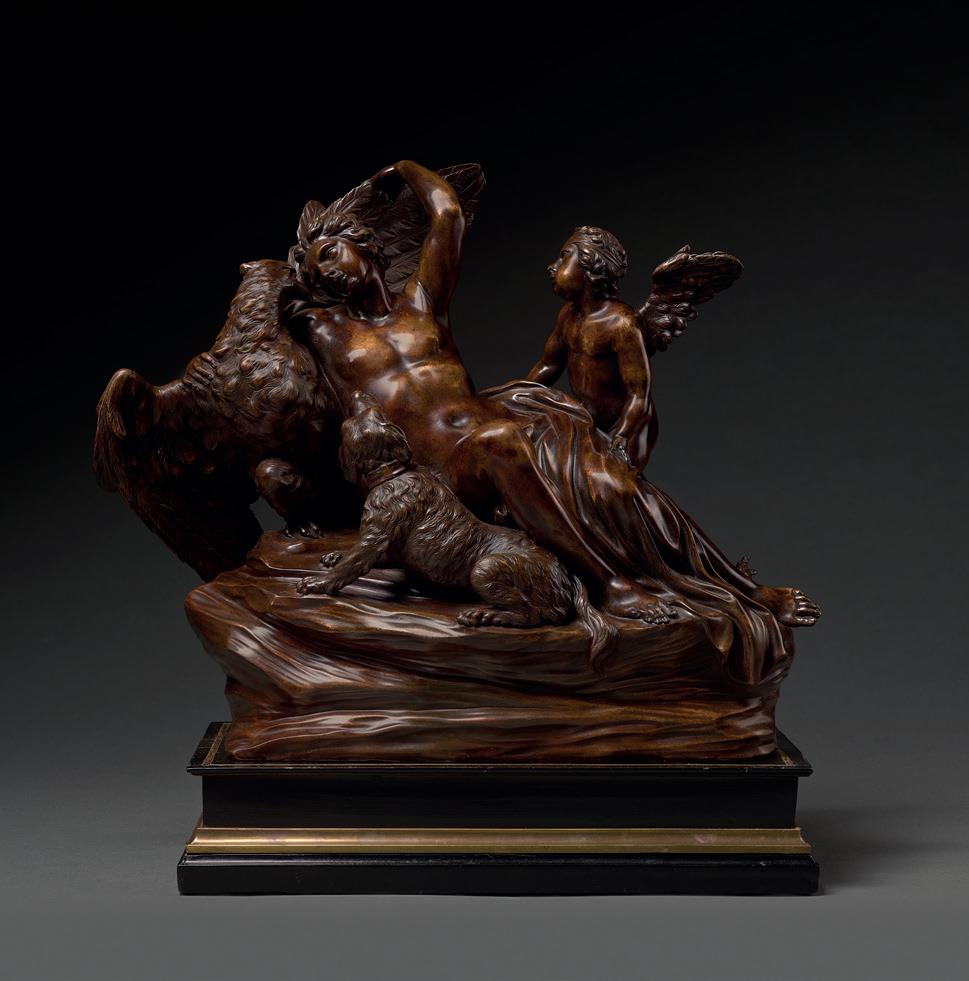
SOLDANI BENZI
Montevarchi, 1656 - 1740, Galatrona Ganymede and the Eagle, c. 1714
Bronze
31.5 × 38.5 × 16.5 cm. (12 3/8 × 15 1/8 × 6 1/2 in.)
Provenance
(Possibly) Theophilus Butler, 1st Baron NewtownButler (1669 - 1723), subsequently Viscount Lanesborough, County of Fermanagh. (Probably) by descent to his son Humphrey Butler, 1st Earl of Lanesborough (c. 1700 - 1768). By descent at Swithland Hall, Leicestershire.
This masterful bronze depicts the famed tale from classical mythology of Ganymede and the Eagle. It is a wonderful example of the dramatic and pictorial style of Soldani’s compositions, the suave modelling of his sculpted forms and the sumptuous finish of his bronzes. This particular model is also very rare, with the only other known version held by the Fitzwilliam Museum, Cambridge. Soldani composed his Ganymede and the Eagle as a rightangled triangle, with Ganymede’s head at the apex and Jupiter in one of his seductive guises, filling the vertical side. Meanwhile the attendant Cupid spreads his wings, enlivening the silhouette, adding interest and complexity to the fundamental geometry of the arrangement. The rocky bases are characterised by a series of more or less parallel grooves, like stratification, running at slightly divergent angles: their suggestion of diagonal movement is complemented by the sinuous folds of the swirling drapery. All these accompaniments serve as a foil against which is set the voluptuously smooth bare flesh of Ganymede and the putto. Like most of Soldani’s groups this is designed to be seen from the front and from the diagonal viewpoints, therefore appearing almost as ‘pictorial’ as his reliefs. Born to an aristocratic cavalry captain from Tuscany, Soldani became the finest bronze caster in late seventeenth and early eighteenth century Europe and along with Giovanni Battista Foggini he is considered the most significant proponent of the Florentine late Baroque style in sculpture. He studied at the Medici Academy in Rome for four years under Pietro Travani, Ciro Ferri and Ercole Ferrata and excelled in the field of medal and coin making, and received commissions from Pope Innocent XI, Queen Christina of Sweden and several prominent members of the papal court. Whilst perfecting his art in Paris, Soldani refused overtures from Louis XIV at the behest of Grand Duke Cosimo III de’ Medici and returned to Florence in 1682, becoming Director of the Grand-Ducal Mint. His workshop sometimes employed over ten assistants and was located in the heart of Florence, on the ground floor of the Galleria degli Uffizi. By the end of his career, his patrons had included the Medici Grand Dukes, Prince Johann Adam Andreas I of Liechtenstein, the Elector Palatine, the 1st Duke of Marlborough and many other prestigious foreign clients. He effectively undertook the role of court sculptor to the Prince of Liechtenstein between 1694 and
1706, casting a number of full-size ancient and Renaissance statues in bronze, with his typically precise and exquisite finishes. By November 1702, Soldani had composed two mythological subjects of his own: the Judgment of Paris and Diana and Callisto and cast them in bronze.
It was probably his reputation for producing exquisitely refined statuary after the Antique and splendid portrait medallions that initially attracted the British ‘Milordi’ to Soldani’s Florentine studio. Indeed, it is in a letter concerning Soldani’s dealings with the 20 year old British aristocrat and ‘Grand Tourist’, the Earl of Burlington (1694 –1753), that the present model is first mentioned. In the letter, dated 15th October 1716, Soldani writes to his agent in London, Giovanni Giacomo Zamboni, and details four casts which the flighty Lord Burlington had ordered two years before after seeing terracotta versions in Soldani’s studio, but had still not paid for. They included a Venus and Adonis, of which there is an example in the J. Paul Getty Museum, California; a splendid, Berniniesque, group of Apollo and Daphne and a matching pair of groups depicting Leda and the Swan and Ganymede and the Eagle. In this list the Ganymede is described as: ‘A companion group representing Ganymede grouped with the Eagle and Cupid who is helping him get on to the back of the Eagle, and the group is enriched with the bow and the torch, and is worth 35 Louis d’Or’. Despite this, a Ganymede and the Eagle was sent to England, and the present statuette, with its interesting AngloIrish provenance, could be that very work.
The Earl of Lanesborough was a title in the Peerage of Ireland, created in 1756 for Humphrey Butler, 2nd Viscount Lanesborough. The Butler family descended from Theophilus Butler, who represented County Cavan and Belturbet in the Irish House of Commons and was raised to the Peerage of Ireland as Baron Newtown-Butler, of the County of Fermanagh, in 1715. The present work was possibly acquired by him from Soldani’s representative G.G. Zamboni, in London, and was likely inherited by descent to the 1st Earl of Lanesborough, until the Late Countess of Lanesborough, of Swithland Hall, Leicestershire.
Charles Avery

SOLDANI BENZI
Montevarchi, 1656 - 1740, Galatrona
The Lamentation of Christ, c. 1715
Terracotta
43 × 25 × 22 cm. (17 × 9 7/8 × 8 2/3 in.)
Provenance
Giuseppe Pacini, Florence.
Baron Giovanni Bordonaro (b. 1836), Palermo, acquired from the above in 1892 (as by Soldani Benzi); and by descent.
This terracotta Lamentation of Christ is an unmistakable work by Massimiliano Soldani Benzi.
Among the Florentine sculptors of the Late Baroque, only Soldani has represented the moments of Christ’s Passion repeatedly throughout his career in various formats: this was, to him, obviously a theme of great importance.
The oldest such work is a bronze Lamentation relief in the Baverisches Nationalmuseum, Munich1. It has a likely provenance from the collection of Johann Wilhelm, Elector Palatine and husband to Anna Maria Luisa, daughter of Cosimo III, the Grand Duke of Tuscany, who sponsored Soldani’s training in Rome and Paris and for whom Soldani worked both as a sculptor and as the Master of the Florentine Mint.
Christ’s naked body has already been placed on the shroud in which He will be buried and which is laid out over the rocks in front of His open tomb and covers His intimate parts. His head rests on Mary; His left arm falls down while the right one is held by a small angel who kisses the back of the hand. The grieving mother of the Saviour is supported by two large angels standing to her back and to her proper left respectively. The composition is reminiscent, in the arrangement of Christ and the mourners, of Domenico Guidi’s marble altarpiece of the same subject in the Monte di Pietà, Rome, completed in June 16762, only a year and a half before Soldani started his training in Rome. He could, therefore, very well have seen it, but he could have taken inspiration from it through an engraving Guidi had made in 1694 and which shows the figures in reverse, with Christ lying as in Soldani’s relief3.
The diagonal line, according to which Christ’s reclining body runs from His head in the centre of the Munich bronze to the feet of His left leg in the relief’s lower left corner, is a compositional device that recurs in Soldani’s later reliefs and smallscale sculptural groups. However, the arrangement of figures in the space does not yet obey the rules of perspective as in these later sculptures, and this trait has been regarded as proof that the Lamentation relief is an early work4. Soldani appears to have created a model for a Lamentation relief by 16955, and, since the Munich bronze displays the same exaggerated and somewhat confused overcrowding as Soldani’s three earliest documented bronze reliefs, executed between 1694 and 1697 for Johann Adam Andreas I, Prince of Liechtenstein, 1695 is the most
likely terminus ante quem for its realisation as well6 If it was created between 1690 and 1692, as has been argued by Jennifer Montagu, who refers to the giltbronze cast ‘acquired then [1690/92] by Cardinal Salazar [Pedro de Salazar y Toledo, 1630 - 1702] for his chapel in Cordova [the Chapel of St Theresa in Cordoba Cathedral]’7, it has not been possible to ascertain this, nor does Montagu remember anymore the source that testifies to the date of this relief.
It has been noted that the Munich relief inspired Giovanni Baratta’s monumental Tobias and the Archangel Raphael of 1696-98 in Santo Spirito, Florence8, in the rendering of the trees in the background, and the same can be said about the Archangel Raphael, who immediately brings to mind the angel standing behind Mary.
A characteristic aspect of Soldani’s compositions is the inclusion of elaborately wrought objects like the Arma Christi in our terracotta group and the basin and ewer in the middle of the foreground in the Munich Lamentation. Inspired by the works of the French classicist painters of the seventeenth century (especially by Nicolas Poussin), which he came to know during a 1682 stay in Paris (during which time he portrayed King Louis XIV in a wax medal that is today in the collection of Lord Thomson, Toronto), Soldani regularly makes use of such details9. It is perhaps not accidental that there is a similar basin and ewer in Poussin’s Lamentation in the Alte Pinakothek, Munich10, a work which Soldani could have gotten to know through prints11. A ewer and basin would refer in Poussin and Soldani’s works in Munich to the washing of Christ’s body (whose wounds are still spilling blood, although only that on His left foot is easily visible from the front) ahead of its unction and burial.
The next of Soldani’s datable representations of the Passion is the model for the magnificent bronze group of the Lamentation in the Seattle Art Museum, long believed to be a work by Alessandro Algardi12. It is this ambitious work (which measures 74.9 x 75 x 50.9 cm.) that brings us closer to the present terracotta, in which Christ’s body lies in a similar, more horizontal way. Examination of the moulds (preserved in the Doccia porcelain manufactory) taken after Soldani’s original model in order to cast this group has revealed that, under the figure of Christ, Soldani had placed an inscription with the date 1708 in which he asserts that he created this model for his own devotion13
The components of the Munich Lamentation all return here in a pyramidal composition, but this time they are arranged according to stricter symmetry and spatial coherence, and also as independent figures in their own right, interacting with each other without being clustered as in the Munich relief. The setting is dominated by the massive open tomb (with its slab placed inside it marking a diagonal line) in relation to which the figures have been carefully arranged. The prominence of the tomb introduces a strong accent absent in the Munich Lamentation, where, however, it can also be seen in the back. With regard to the relief, Christ’s position has been reversed in the group (He lies as in our terracotta) and now His mother sits over His proper left side and beholds Him. The two large angels who supported Mary in that relief have here been moved to either side of Christ and his mourning mother: the one to the left stands with his legs crossed, raising a cloth to wipe his tears, and looks aside; the one to the right kneels and receives the Crown of Thorns from Mary while beholding Christ14. In a gesture that enhances the scene’s dramatic potential, an angel hovering over the tomb lifts the shroud, assisted by another angel. Both are smaller than the other two and of the same type as those in the Frick and in our terracotta. They have a precedent in the small angel in the Munich Lamentation (the type of which is not yet fully developed into the typical Soldani angel-putto) and in Poussin’s Munich Lamentation in which two small angels are shown crying to the right of Christ. Also in the Seattle bronze Soldani has included a basin and a ewer of a design similar to but more elaborate than the one in the Munich relief, but they are placed behind the kneeling angel and can only be seen if the beholder moves to the right. No other Arma Christi which, on the contrary, are present in our terracotta, has been included in the model of the large Seattle Lamentation
If it were not for the inscription discovered during the examination of the moulds, it would be hard to believe that the artist had created such an emphatic composition solely for the purpose of his own devotion. Its complexity is endorsed by the number of moulds that have been taken from the original model in order to cast the bronze, and which are listed in the 1778 inventory of the models for porcelain today preserved in the Museo di Doccia15 This document makes reference in each entry to
those moulds necessary for casting the bronzes that the manufactory’s founder Carlo Ginori acquired from many sculptors’ estates, including that of Soldani. With 54 piece-moulds, the large Lamentation is the most complex of all Florentine bronzes of the Late Baroque16.
Precisely because of its compositional ambition, it does not come as a surprise that it was soon turned into a bronze, although it has not been possible to determine the exact date. But in 1714, one of the most prominent Florentine aristocrats of his time, Duke Anton Maria Salviati (1658 - 1723)17, acquired from the sculptor a bronze Lamentation, which must be that now in Seattle, as has been argued by Herbert Keutner, who sensibly suggested that the bronze group had originally been commissioned for someone else18. However, the Seattle bronze’s provenance, which Keutner found listed in two eighteenth century Salviati inventories, cannot be traced prior to 188819
The 1778 inventory of models refers to the originale of this model as being ‘in Casa Conti Bardi’ but this was, as I have been able to demonstrate20, a terracotta which was still with the Bardi in 175021. It was then described as of a height of circa 1 Florentine braccio. It is perhaps identical to the terracotta Lamentation, described as of a height of 1 ½ Florentine braccia in the inventory of Giovan Battista Borri’s sculpture collection, which I discovered and published in 201422. A somewhat smaller terracotta Lamentation related to the Seattle model is in the Art Institute of Chicago23. Its original provenance is not known.
A wax version of the model for the Seattle bronze, first documented in 1741 with a member of another prominent Florentine aristocratic family, Giovan Battista Gondi, is not, as I had initially argued24, an original wax but a wax poured into Soldani’s original moulds25. Soldani encouraged the acquisition of similar waxes (poured into the moulds taken from his sculptural models) because, as he wrote proudly in 1725, they were ‘works moulded on my originals made with some study’ (cose formate sopra de’ miei originali, fatti con qualche studio)26.
A year after Salviati’s acquisition of the bronze that is today in Seattle, a terracotta Lamentation by Soldani was featured in the exhibition of the Accademia del Disegno in the Santissima Annunziata, but the catalogue does not mention its owner or its size27. It has been suggested
that it could be the same as Soldani’s.terracotta Lamentation in the Frick Collection28, which is similar to ours in size and comprises, as does ours, only the body of Christ and, in that case, two instead of three mourning Angels. However, there is no reason why the terracotta exhibited in 1715 could have not been that associated with the Seattle model: Soldani.had sold the bronze version of it only the previous year to a prominent collector and, if he were the lender to this exhibition, as has been argued29, he would have wished to make his ambitious creation known to the wider public30. In the same exhibition, two more terracottas by Soldani were exhibited, one of which is described simply as a modellino31. Had the terracotta Pietà exhibited in 1715 also been a modellino, this would therefore have been stated.
By 1727, Soldani had retouched the model for the Seattle bronze by eliminating the tomb, the large standing angel to the left and the two smaller angels. In a letter of 24 April 1727 to his agent in London Gian Giacomo Zamboni, the artist writes that he has (mi sitrovo) ‘a Pietà, which comprises the dead Christ, the Madonna, and an Angel, all figures in the round’ (la Pieta, consistente in un Cristo morto, la Madonna, et un Angiolo, figure tutte di rilievo)32. The description leaves no doubt that this was the bronze group today in the Walters Art Museum in Baltimore33. Moulds for this are not listed in the Doccia models’ inventory: indeed, it could easily have been cast using those prepared for the bronze in Seattle, of which it is a reduced version. Keutner was therefore correct in suggesting that the Baltimore Pietà was developed from the more complex Seattle group rather than the other way round, as had been previously argued by Klaus Lankheit34.
Another variant Soldani created comprises, besides the body of Christ and the mourning Mary, three small angels shown in various actions and of the same type as those in the Frick and in our terracotta. No bronze version of this composition is known to exist, but it is listed in the 1778 Doccia models’ inventory together with its moulds, which implies that Soldani intended to have it cast in bronze. A wax poured into these moulds is preserved in the Museo di Doccia35, while a version in porcelain and one in maiolica are also known36. Lankheit placed this model at about 1700, between the Munich relief and circa 171537, whereas Keutner highlighted the similarities with Soldani’s works of the 1720s38. Soldani’s types were consolidated early
in his career, which makes it difficult to establish a relative chronology and accounts for the different dating proposals in scholarship, which tend to be based on external data and assumptions. For our purpose, it is, however, important to highlight that the Lamentation with the three angels is, among all of Soldani’s Lamentations, the one that comes closest to the present version and the Frick terracotta insofar as it is the only one of the three larger compositions in which the small angels are invested with an active role, contrary to the groups in Seattle (where the small angels do not interact with Christ) and Baltimore (where no small angels are shown). The motif appeared, of course, in the Munich Lamentation, where a small angel kisses Christ’s falling hand. Because of this and because Christ’s position in the relief (where his body appears to tilt over) is similar to that in the Lamentation with three angels, I would tend to date it after the Munich relief and before the 1708 model for the bronze in Seattle with its dramatic Baroque narrative. Finally, it should be noted that the model with the three small angels includes an inscription which reads ‘ECCE QUOMODO MORITUR lUSTUS ET NEMO PERCEPIT CORDE’ and confers on the group an unmistakable devotional character which is not the overriding motif of the Seattle Lamentation, with its grand Baroque pathos, but of the present and Frick terracottas. This does not, however, mean that the latter preceded the model for the bronze in Seattle. The Frick group (which has a recent Florentine provenance and was published in 2014 with the correct attribution39) comprises, as we have anticipated, only the body of Christ and two small mourning angels. This work (which is also coated with the light, organic white varnish typical of Soldani sculpture, as is our terracotta) is very close to the present group, not only with regard to the composition, but in the almost exact correspondence in the types of Christ and the angels. There is, however, a nuance in the narrative. The eyes of Christ are swollen and half open, and so is His mouth in the Frick group, both eyes and mouth are closed in the present version. Moreover, the latter includes not two but three small angels, one of which appears to be hovering in the back (as a small angel in the large Pietà), lifting the shroud on which Christ’s body lies and which partially covers it, as in all of Soldani’s Lamentations. As in the Seattle model, where the basin and ewer
are visible from the side only, similarly in our terracotta the Crown of Thorns can be seen only if the group is viewed from the back (hardly a likely option as it is conceived to be viewed from the front). The pitcher for gall and vinegar, in the same ewer Soldani has represented in all the works we have discussed, hammer, pincers, a large nail and the cords are the Arma Christi visible under Christ’s body (as opposed to the Crown of Thorns and nails, which are the only ones in the Frick group). Their number and placement are proper of an Andachtsbild, a devotional image. It is in this aspect that, as we have anticipated, the two terracottas are closer to the Lamentation model with the three angels, the devotional character of which is highlighted by means of an angel pointing at the inscription. What is different, in the Frick terracotta and the present one, is the role of the kneeling angel to Christ’s proper right. In the Frick group he looks up to Him, holding His right arm with his left hand while he slightly raises his proper right arm. The angel in the same position in our terracotta holds the same arm of Christ with both hands, and his head is nearer to that of Christ, which has here fallen to its right. The reduction of figures has added to the intimate feeling of these groups and helps highlight the harmonious line of the composition, which appears more natural with respect to the strictly diagonal placement of Christ’s body in the Munich relief and the model with the three angels40. All in all, the Frick and the present terracottas are variations of the same theme, of great intimacy and utter tenderness, perfectly suited to personal devotion but transcending in their artistic ambition the quality of a traditional Andachtsbilder. There is, however, more detail in the present group and an apparent desire by the artist to define more precisely the aspects of the rock (and its vegetation) on which Christ rests. This could suggest that it followed the Frick group as a more elaborate version, and appears to be confirmed by the symmetrical form of the rectangular base, with its design of semicircular additions on both the right- and left-hand sides. If I were to opt for a relative chronology, I would place the Frick and the present groups after the model for the Seattle Lamentation, with which they share the more horizontal position of Christ’s body and the motif of one hovering angel, as a devotional synthesis of that grand narrative.
The lack of moulds for the models of these two terracottas suggests that they were not intended to be cast in bronze41. Soldani, whose artistic career saw him begin as an autodidact modeller in clay, inspired by the works of the Della Robbia and their followers, in which his birthplace Montevarchi and its environs are so rich, excelled in modelling, as is well proven by his incredibly precise, minute wax models for medals, the most impressive of which is that executed for the medal for Louis XIV of France42
For Soldani, a terracotta model was essentially preparatory to his sculptures in bronze, which, as he reminded Gian Giacomo Zamboni, his agent in London, are eternal43. He even went so far as to make his clay models in separate parts so that they could be moulded separately for bronze casting and afterwards fitted together to reconstruct the original preparatory clay model. This accounts for the perfection of the typical Soldani terracotta: it had to anticipate the perfection of bronze. This is not to say that Soldani did not use, as had other sculptors before him, bozzetti. Indeed, at his death, Soldani still retained many clay bozzetti, and we know of an instance in which he sent one such bozzettino as a gift to his agent Zamboni in London44. On the other hand, he seems to have given away those terracotta models created as preparatory models for bronzes, either to intermediaries negotiating his commissions (such as Clemente Vitelli) or to his patrons, such as the Grand Prince Ferdinando, the Sansedoni in Siena or the Bardi di Vernio in Florence. This explains why Zamboni’s request for terracottas from Soldani could not be met by the artist and why he was left with very few modelli of his own at the end of his life. Soldani could give away his models for bronzes because relinquishing ownership of a model did not compromise replication: Soldani could still make a replica of a composition thanks to the moulds which he had kept (and which were eventually sold to Doccia). On the contrary, he prided himself in 1717 on the fact that ‘many more of my works in terracotta are in the hands of gentlemen friends of mine, who do me the honour of preserving them’ (molti altri lavori in terra cotta da me fatti, sono in diverse mani di cavalieri miei amici, che mi fanno l’onore di conservarli)45
If these would have been more of the type we described, preparatory for bronzes, there were
others which were not preparatory, like the two terracotta versions of the Lamentation, which indeed are modelled in one piece. It is Soldani himself who informs us, again in 1717, that he had also made such groups: ‘In the house of Signor Michel Benotti there were some groups made by me many years ago, but they were never made in bronze, and Signor Benotti held them in great esteem, but everything had to be sold, and all these terracottas were bought by Signor Duke Salviati who keeps them with him’ (In casa del Signor Michel Benotti vi erano alcuni Gruppi fatti da me molti anni Sono, ma mai questi sono stati fatti di bronzo, e gli teneva il Signor Benotti assai cari, ma si diede L’accidente, che il tutto si dovesse vendere, e tutte queste Terre cotte, le comprò il Signore Duca Salviati, che gli conserva appresso di se46.)
Their acquisition by Duke Salviati, the same collector who acquired the bronze Lamentation today in Seattle, testifies to the high esteem in which they were held. It has not been possible to ascertain whether our terracotta was among the Soldani terracottas acquired by Salviati. As Zamboni returned to Soldani with requests for terracottas, the artist reluctantly started sending the odd piece to London, but for confessional reasons, he would hardly have sent a Lamentation. It is therefore a likely option that our terracotta and the Frick one are among those Soldani had made before 1717 for Benotti.
At any rate, its authorship was never forgotten. It is important that it was bought as a work by Soldani Benzi, according to the original invoice, on 11 October 1892, from the art dealer Giuseppe Pacini in Florence for £55 by ‘barone Bordonaro’, to be identified with Senator Gabriele Chiaramonte Bordonaro (Licata, 1835 – 1914, Palermo), an important collector47.
Dimitrios ZikosDoccia, Munich, 1982, p. 136, no. 26:88, fig. 182. The model for the Munich Lamentation is also included in this inventory; K. Lankheit, Die Modellsammlung der Porzellanmanufaktur Doccia, Munich, 1982, p. 133, no. 33:62, fig. 183. For the inventory’s now-determined date, see D. Zikos, “Il decoro della nostra Italia in ragione di scultura: l’importanza dei ‘modelli’ della fabbrica Ginori per lo studio della Kleinplastik Fiorentina”, in La fabbrica della bellezza, exhibition catalogue (Museo Nazionale del Bargello, Florence, 18 March - 1 October 2017), T. Montanari, D. Zikos, eds. Florence, 2017, p. 51.
4 K. Lankheit, Florentinische Barockplastik, Munich, 1962, p. 130.
5 In a letter written by Soldani to the Prince of Liechtenstein on 31 May 1695, he informs him that he had dispatched to Vienna ‘un bassorilievo di cera il quale staria bene di bronzo dorato, da collocarsi vicino a un letto, essendo cosa devota’, and this prompted Klaus Lankheit to connect this reference with the Munich Pietà; K. Lankheit, “Florentiner Bronze-Arbeiten für Kurfürst Johann Wilhelm von der Pfalz”, in Münchner Jahrbuch der bildenden Kunst, no. VII, Munich, 1956, p. 198. For the dating, see also note 3 above.
6 For these three reliefs, see O. Raggio, in Die Bronze der Fürstlichen Sammlung Liechtenstein, exhibition catalogue (Liebieghaus, Frankfurt, 26 November 1986 - 15 February 1987), Frankfurt, 2006, pp. 202-09, nos. 33-35.
7 J. Montagu, in The Twilight of the Medici, exhibition catalogue (Detroit Institute of Arts, 27 March - 2 June 1974; Palazzo Pitti, Florence, 28 June - 30 September 1974), Florence, 1974, p. 102, no. 64. For this relief, see F. Loffredo, “Soldani’s Lamentation in Cordoba”, in The Burlington Magazine, no. 1431, CLXIV, London, 2022, pp. 1118-22.
8 F. Freddolini, Giovanni Baratta 1670 - 1747, Rome, 2013, p. 138.
9 D. Zikos, “Soldani in Paris (1682)”, in Le arti a dialogo, L. Simonato, ed., Pisa, 2014, pp. 269-82. It is interesting (and important) to recall, in this context, that Poussin’s Crucifixion, today in the Wadsworth Atheneum in Hartford (A. Blunt, The paintings of Nicolas Poussin: A Critical Catalogue, London, 1966, p. 55, no. 79) was copied by Soldani. A wax after his original moulds is in the Museo di Doccia (K. Lankheit, Die Modellsammlung der Porzellanmanufaktur Doccia, Munich, 1982, p. 134, no. 24:72, fig. 180) whereas an autograph terracotta version is in the Royal Ontario Museum, Toronto; C. Avery, in Florentine Baroque bronzes and other objects of art, exhibition catalogue (Toronto Royal Ontario Museum, January 1975), Toronto, 1975, p. 58.
10 Blunt, Nicolas Poussin, 1966, p. 57, no. 82.
Notes
1 56.5 x 37 cm. Inv. R 3935. D. Zikos, in La Principessa Saggia, exhibition catalogue (Palazzo Pitti, Galleria Palatina, Florence 22 December 2006 - 15 April 2007), S. Casciu, ed., Livorno, 2006, p. 194, no. 46.
2 C. Giometti, Domenico Guidi 1625 - 1701, Rome, 2010, p. 192.
3 Ibid., p. 359. If this were the case, then a terminus post quem for Soldani’s Munich Pietà is furnished by 1694, the date of the engraving. Clearly, the latter depends on a wax relief of the Lamentation listed in the 1778 inventory of the models in the Ginori porcelain manufacture and attributed to Soldani by K. Lankheit, Die Modellsammlung der Porzellanmanufaktur
11 Soldani used ‘carte del Pussino’ as study material; Zikos, in Le arti a dialogo, 2014, p. 274.
12 D. Zikos, in Baroque Luxury Porcelain, exhibition catalogue, (Liechtenstein Museum, Vienna, 10 November 2005 - 29 January 2006), 2005, pp. 465-66, no. 315.
13 D. Zikos, “Sulla natura della “forme” acquistate e commissionate da Carlo Ginori”, in Quaderni degli Amici di Doccia, IV, Florence, 2011, p. 23.
14 Neither the Crown of Thorns nor any other Arma Christi are shown in the Munich Pietà.
15 For this inventory, see note 3.
16 As has been already pointed out by Lankheit, Die Modellsammlung, 1982, p. 25.
17 He was baptised Antonino and the son of Giovanni
Vincenzo and Laura Corsi.
18 H. Keutner, “Massimiliano Soldani und die Familie Salviati”, in Kunst des Barock in der Toskana, Munich, 1976, pp. 149-52. Keutner argued that because the artist had been paid the full price of 800 scudi for the group, it must already have existed. Had it been commissioned, it would have been paid for, as was customary, in instalments. After its acquisition, Salviati commissioned from Soldani a wooden base, which was paid for separately. In the 1749 Salviati inventory, in the relevant passage published by Keutner (1976, p. 163, doc. 24), the group is described as ‘gilded’, but this could easily have been a misunderstanding for the reddish-gold varnish the recent 2018 cleaning has in part uncovered.
19 D. Zikos, in Baroque Luxury Porcelain, 2005, pp. 465-66, no. 315.
20 D. Zikos, “Il decoro della nostra Italia in ragione di scultura: l’importanza dei ‘modelli’ della fabbrica Ginori per lo studio della Kleinplastik Fiorentina”, in La fabbrica della bellezza, exhibition catalogue (Museo Nazionale del Bargello, Florence, 18 March - 1 October 2017), T. Montanari, D. Zikos, eds. Florence, 2017, pp. 47, 64 note 10.
21 Archivio Bardi, I.14, ins. 21.
22 D. Zikos, “A Kleinplastik collection in Regency Florence: Giovan Battista Borri’s bronzes and terracottas”, in Renaissance and Baroque bronzes from the Hill collection, exhibition catalogue (Frick Collection, New York, 28 January - 15 June 2014), London, 2014, p. 64, no. 57T.
23 41.9 x 58.4 x 34.3 cm. Inv.1961.1118. Lankheit, who is the only scholar to refer to it when it was still on the Florentine art market, considers it a copy by a pupil; K. Lankheit, Florentinische Barockplastik, Munich, 1962, p. 215 note 74.
24 D. Zikos, in Baroque Luxury Porcelain, 2005, pp. 465-66, no. 315.
25 D. Zikos, in Making Beauty. The Ginori Porcelain Manufactory and its Progeny of Statues, T. Montanari, D. Zikos, eds., Florence, 2017, p. 128, no. 9. The more recent entry, by R. Balleri, on this wax Pietà (in Plasmato dal fuoco, exhibition catalogue (Gallerie degli Uffizi, Palazzo Pitti, 18 September 2019 - 12 January 2020), E. Schmidt, S. Bellesi, R. Gennaiuoli, eds. Livorno, 2019, p. 242, no. 46) has introduced unnecessary confusion by doubting that Soldani’s wax group of a Pietà documented in Giovan Battista Gondi’s inventories of 1741 and 1750 was not acquired, at the sale of his estate, by Senator Francesco Del Rosso (Gondi’s brother-in-law, who married Gondi’s sister Maria Maddalena) but by a clockmaker named Bartolozzi. As the documents I have published prove unmistakably, Bartolozzi only bought clocks at this sale. The subsequent fate of Soldani’s Gondi Pietà is not known but it appears to have been received by the Conservatory as a gift from a certain Margherita Gori Gambassini in 1767 – not by Elisabetta Gondi, as Balleri (who has published the relevant passage from the Conservatory’s Annals discovered by Dr Davide Gambino) erroneously asserts; ibid., p. 242.
26 See D. Zikos, Making Beauty, 2017, p. 48.
27 F. Borroni Salvadori, “Le esposizioni d’arte a Firenze dal 1674 al 1767”, in Mitteilungen des Kunsthistorischen Institutes in Florenz, XVIII, Florence, 1974, p. 124.
28 M. Leithe-Jasper, P. Wengraf, in European Bronzes from the Quentin Collection, exhibition catalogue (Frick Collection, New York, 28 September 2004 - 2 January 2005)
Easthampton and Woodbridge, 2004, pp. 278-83, no. 32. It has been suggested that the lender was Soldani himself.
29 As has been suggested by Leithe-Jasper, Wengraf, in European Bronzes, 2004, p. 278.
30 Keutner (1976, p. 150) has already argued in this sense, although he did not of course know the Frick and the present terracottas. That Soldani’s model was well-known is suggested by a copy in painting by Giovanni Camillo Sagrestani; K. Lankheit, in The Twilight of the Medici, exhibition catalogue (Detroit Institute of Arts, 27 March - 2 June 1974, Palazzo Pitti, Florence, 28 June - 30 September 1974), Florence, 1974, p. 102, no. 65; and Keutner, in Kunst des Barock in der Toskana, 1976, pp. 150, 160 note 67.
31 F. Borroni Salvadori, “Le esposizioni d’arte a Firenze dal 1674 al 1767”, in Mitteilungen des Kunsthistorischen Institutes in Florenz, no. XVIII, Florence, 1974, p. 124. Also the owner of these is not mentioned in the exhibition catalogue.
32 D. Zikos, in Baroque Luxury Porcelain, 2005, p. 466. The expression ‘mi ritrovo’ does not necessarily mean Soldani had already cast the bronze.
33 H. 50 cm. Inv.54.1066. It was first published by K. Lankheit, “Two Bronzes by Massimiliano Soldani Benzi”, in The Journal of the Walters Art Gallery, no. 19/20, Baltimore, 1956-57, pp. 9-15. The Baltimore Pietà cannot be traced earlier than 1931.
34 Keutner, in Kunst des Barock in der Toskana, 1976, p. 150.
35 Lankheit, Die Modellsammlung, 1982, p. 120, no. 21:9.
36 A version in white Doccia porcelain is in the British Museum, London (inv. 1913, 1220.141) and a polychrome one in Doccia maiolica also exists; L. Ginori Lisci, in The Twilight of the Medici, 1974, p. 420, no. 206, erroneously writes that the group in the British Museum is also polychrome. The maiolica version is illustrated in A. Biancalana, Porcellane e maioliche a Doccia, Florence, 2009, p. 44.
37 K. Lankheit, Florentinische Barockplastik, Munich, 1962, p. 137. In Lankheit’s reconstruction of Soldani’s representations of the Lamentation, 1715 was the terminus post quem for the Baltimore Pietà, which he associated with Soldani’s terracotta Pietà exhibited in 1715 and dated prior to the group in Seattle.
38 Keutner, in Kunst des Barock in der Toskana, 1976, p. 152.
39 Leithe-Jasper, Wengraf, in European Bronzes, 2004, pp. 278-83, no. 32.
40 Both Christ’s body and Mary appear to tilt over because they were intended to be seen from below – a compositional device we find in other reliefs by Soldani but not in his groups.
41 The following account of Soldani and terracotta is based on Zikos, in Baroque Luxury Porcelain, 2005, pp. 15965, and D. Zikos, 2017, pp. 45-45.
42 Zikos, in Le arti a dialogo, 2014, pp. 276-77, figs. 9-10.
43 Oxford, Bodleian Library, Mss. Rawlinson, Letters 132, f. 55v.
44 Ibid., Letters 132, f. 143v.
45 D. Zikos, in La fabbrica della bellezza, 2017, p. 46.
46 Oxford, Bodleian Library, Mss. Rawlinson, Letters 132, f. 11r-v, Zikos, in Baroque Luxury Porcelain, 2005, pp. 159-65.
47 C. Gulli, La collezione Chiaramonte Bordonaro nella Palermo di fine Ottocento, Milan, 2021.

Attributed to
Antwerp, 1676 - 1759, Munich
Portrait bust of Prince Eugene of SavoyCarignano (1663 – 1736), c. 1710-15
Terracotta
77 × 61 × 35 cm. (30 3/8 × 24 × 13 3/4 in.)
Provenance
Private collection, France.
Their Sale; Ader Picard Tajan, Hôtel George V, Paris, 27 June 1973, lot 28. Wildenstein, New York.
Anon. Sale; Christie’s, New York, 13 April 2016, lot 136.
Private collection, acquired from the above sale.
We are grateful to Dr Konrad Schlegel for his assistance in identifying the bust as a portrait of Prince Eugene of Savoy. Prince Eugene of SavoyCarignano, from the House of Savoy, served as field marshal in the Imperial Army and statesman of the Holy Roman Empire. He is remembered as one of the most successful military commanders in modern European history, and he rose through the ranks of state to the highest offices at the Imperial court in Vienna.
Born in Paris and raised at the court of Louis XIV, Prince Eugene was initially expected to pursue a clerical career, as the youngest son of noble parents. He rejected this plan, however, determined to enter the military, although his slight stature led to his rejection from the French Royal Army. Undeterred, Eugene moved to Austria and declared his loyalty to the Holy Roman Empire. He went on to enjoy a sixdecade career under three Holy Roman Emperors: Leopold I, Joseph I, and Charles VI.
Prince Eugene fought in a number of significant battles, but the one that cemented his reputation across Europe was the Battle of Zenta, which saw the Holy Roman Empire defeat the Ottomans in 1697. He also fought alongside the Duke of Marlborough against his native France at Blenheim (1704), Oudenarde (1708) and Malplaquet (1709), and defeated the Ottomans again in the battle of Petrovaradin (1716) and the Siege of Belgrade (1717).
Beyond the battlefield, Prince Eugene was also one of his generation’s great patrons of the arts, and his legacy can be seen around Vienna today. Prince Eugene’s most significant undertaking was the construction of Vienna’s two Belvedere palaces, with the Lower Belvedere completed in 1716 and the larger Upper Belvedere, which now houses the museum, between 1720 and 1722. Prince Eugene also collected on a vast scale, favouring Baroque Italian, Dutch and Flemish art, as well as prints, books and manuscripts.
This portrait bust can be identified as Prince Eugene based on its resemblance to numerous securely identified portraits in both painting and sculpture. The ringlet hairstyle, which represented the fashion in the first decades of the eighteenth century, allows us to date the portrait to around 1710-15, at the height of Prince Eugene’s period of military triumph. This work also closely resembles the portrait bust by François Coudray now in the
Rijksmuseum1, which is engraved with the sitter’s name and dated to before 1724. Prince Eugene is normally depicted in armour, but there are certainly precedents for his depiction in court dress, or even informally costumed as a gentleman scholar, as we see in a portrait of Prince Eugene in his library attributed to Jan Kupecky2.
Guillielmus de Grof was born in Antwerp in 1676. After training in his native city he worked in in Paris and Munich as court sculptor, firstly to King Louis XIV. Primarily a metal sculptor, De Grof was a versatile artist who could work in many materials. His style combined the court aesthetic of Louis XIV with the exuberant Flemish Baroque, which had its roots in Rubens’ work. In 1714, when Maximilian Emanuel was in Paris, he took De Grof into his service, and the sculptor travelled to Munich in the spring of 1716, where he carried out a wide range of activities as the leading court sculptor until his death in 1742.
In Munich, De Grof set up a ‘state studio’ in the Herzog-Max-Burg. It became a large workshop, which employed fourteen journeymen and had a foundry. He held a prominent social position among the artists at the Munich court, and on occasion self-confidently expressed his claim to be viewed as a free artist whose work could not be compared with that of craftsmen. In 1714 he created his seminal equestrian group, the magnificent bronze Apotheosis of Maximilian II Emanuel, Elector of Bavaria3. From what is known of his work, his style is characterised by the dynamic design of the hair and drapery in his portraits and the inclusion of rich ornamental details.
The most compelling comparison is between the present bust and the bronze Bust of Maximilian II Emanuel in the Liechtenstein collections, which is attributed to De Grof 4. In both, the late Baroque flamboyance and influence of Bernini in the twisting, flowing movement of the forms are central to the character of the busts. The deeply furrowed modelling of the thick wigs, more heavily piled in the present bust reflecting the fashions of Vienna, is addressed in a similarly lively fashion, with a precision in the tooling of each strand of hair. Most strikingly, there is a slight hardness to the modelling of the facial features, particularly the cheekbones, and an enigmatic movement to the eyes. As Peter Volk noted, we are reminded in De Grof’s work of Dutch sculpture, such as that of Jan
van Delen or Pieter Scheemaeckers the Elder, in the way the different material character of flesh, hair and clothing is emphasised5
Complicating the matter of the attribution is the lack of wider knowledge of De Grof’s activities as a sculptor and the confluence of European styles at this period. Giuseppe Volpini’s (1670–1729) Statue of Maximillian Emmanuel 6 has a similar sprawling assertiveness, although it takes the theatrical representation of the sovereign to new heights. Prince Eugene of Savoy was primarily based in Vienna and we have no record of him sitting to De Grof in Paris or Munich, or of De Grof making a trip to Vienna, although there is no reason to discount it, especially as Prince Eugene was allied at certain times to his distant cousin Maximilian Emanuel in the fight against the Ottoman Turks.
Notes
1 Inv. NG-716.
2 Victoria Art Gallery, Bath, inv. BATVG:P:1923.25
3 Bayerisches Nationalmuseum, inv. R3973.
4 J. Kräftner, “Liechtenstein. The State, the Family, their Collection and Palaces. Aspects of the History of a European Dynasty”, in From Rubens to Makart: Liechtenstein; the Princely Collections, Liechtenstein, 2019, nos. S. 13–45, S. 22.
5 P. Volk, “Bronze-und Bleiplastik am Hof Max Emanuels”, in Kurfürst Max Emanuel – Bayern und Europa um 1700, Munich, 1976, I, p. 245.
6 Bayerisches Nationalmuseum, Munich, inv. L R 3979.
Cover
Massimiliano Soldani Benzi, The Lamentation of Christ, detail, c. 1715
Printed and bound in Italy by Editrice DARTE, Todi (PG) info@editricedarte.com June, 2024

Copyright reserved. © Simon C. Dickinson Ltd. 2024
No part of this volume may be reproduced or transmitted in any form or by any means, electronic, mechanical, or otherwise, without the written permission of the copyright owners and the publisher.
ISBN-13: 979-12-5975-415-8



